SORT BY
DATE NAME
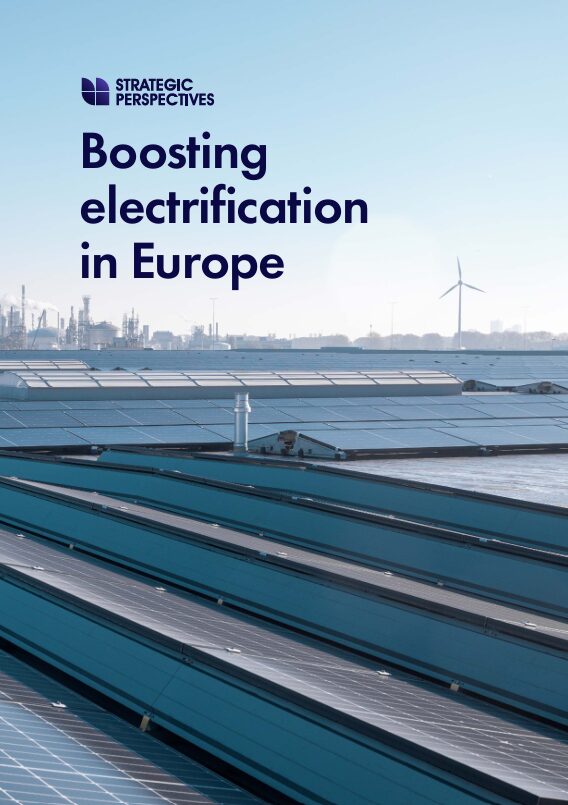
— Boosting electrification in Europe
While electrification is a key factor in decarbonisation and central to meeting European climate goals, electricity consumption has stagnated in recent years. Artelys has supported Strategic Perspectives in quantifying the costs and benefits associated with an ambitious electrification scenario for 2040, compared to maintaining current trends. The analysis has focused on four key technologies: heat pumps for buildings and industry, electric vehicles, and low-carbon steel production. The results show that in an ambitious electrification scenario, the additional savings achieved by reducing fossil fuel imports exceed the over-investments needed in technologies and the electricity system (production, storage, interconnections). In addition, the decrease in imports reduces exposure to price volatility on international markets, strengthening economic resilience.
Client : Strategic Perspectives
Date : December 2025
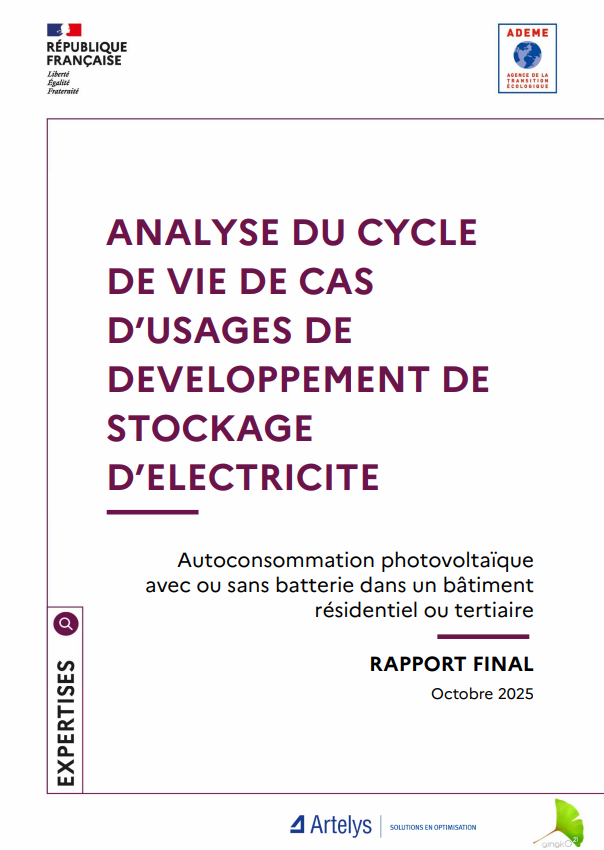
— Life cycle analysis of electricity storage use cases – Isolated site
ADEME commissioned Artelys and Gingko21 to conduct a life cycle analysis of use cases for the development of electricity storage. For each use case, Artelys studied the impact of adding storage to the electrical system. This impact is then translated into a life cycle analysis by Gingko21 in order to determine the environmental impact of the storage system. This second study focuses on the electricity supply for an isolated site. To this end, various supply options are being studied for the isolated village of Kaw in French Guiana: fossil fuels via a diesel generator, renewable energy via the installation of photovoltaic panels with batteries, or a hybrid system. The village of Kaw and the various associated means of production have been modelled using Artelys Crystal Super Grid software.
Client : ADEME
Partner : Gingko21
Date : October 2025

— Life cycle analysis of electricity storage use cases – Self-consumption
ADEME commissioned Artelys and Gingko21 to conduct a life cycle analysis of use cases for the development of electricity storage. For each use case, Artelys studied the impact of adding storage to the electrical system. This impact is then translated into a life cycle analysis by Gingko21 in order to determine the environmental impact of the storage system. This initial study focuses on the addition of photovoltaic panels for self-consumption, with or without an associated battery storage system, for a single building. The analysis is carried out for two types of buildings (a residential house or an office building) in different geographical areas (France, studied here on the Mediterranean coast – climate zone H3 –, Martinique and Réunion). This study is carried out in a comparative manner to better understand the effects of self-consumption with storage on different electrical systems. The impacts assessed are therefore those resulting from the addition of photovoltaics with or without storage, without seeking to quantify the environmental impacts of all the electricity consumed by the modelled building. In order to assess the impact of different production systems on the electrical system, Artelys modelled the electricity mixes for each geographical area and the buildings studied using Artelys Crystal Super Grid software.
Client : ADEME
Partner : Gingko21
Date : October 2025
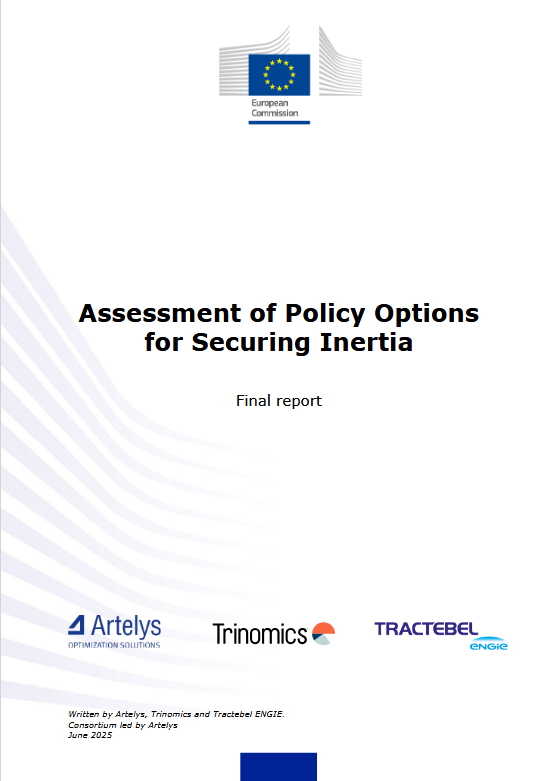
— Assessment of Policy Options for Securing Inertia
The European Commission's DG ENER selected Artelys to analyse solutions for ensuring the frequency stability of the European electricity system in the future. This study analyses the role of inertia and its evolution in the context of asynchronous renewable energy deployment. This work establishes a shared understanding of inertia’s role in power system stability. The literature review carried out by Artelys focuses on the challenges and risks associated with frequency stability in the electricity system, the definition of inertia, the specification of the physical quantities required to ensure this stability, the fundamentals determining inertia requirements and the definition of associated services. Artelys also analysed the foreseeable evolution of inertia requirements with the energy transition, as well as the existing inertia and fast reserve markets. Artelys carried out this study with Tractebel ENGIE and Trinomics. Tractebel ENGIE conducted a technology review and a complementary assessment of inertia requirements. Trinomics analysed approaches to securing the supply of inertia and recovering the associated costs. A set of recommendations was formulated for DG ENER.
Client : European Commission
Partner : Tractebel ENGIE and Trinomics
Date : June 2025
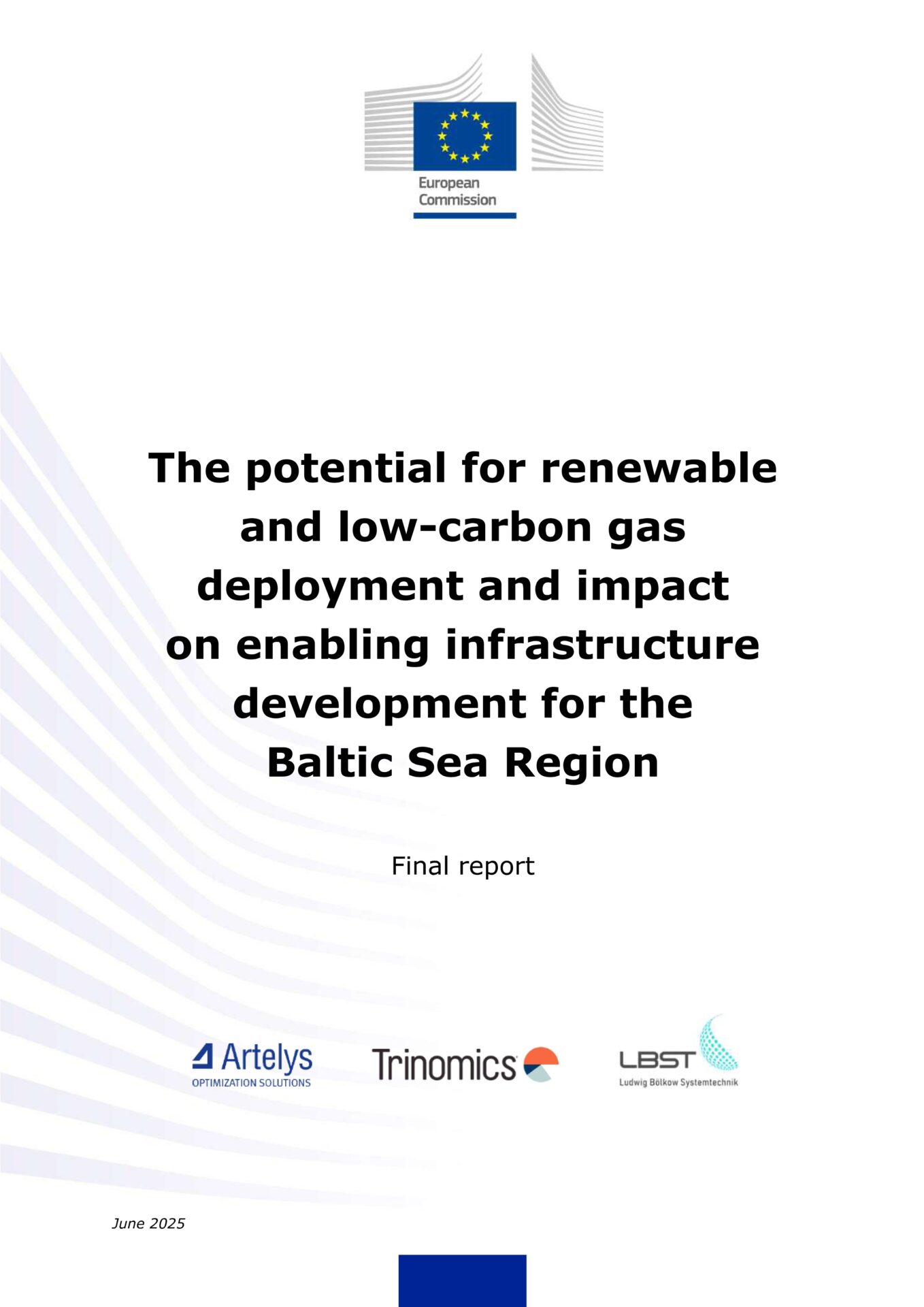
— The potential for renewable and low-carbon gas deployment and impact on enabling infrastructure development for the Baltic Sea Region
This study explores the integration of renewable and low-carbon gases within the Baltic Energy Market Interconnection Plan (BEMIP) region, which includes Denmark, Estonia, Finland, Germany, Latvia, Lithuania, Poland, and Sweden. It evaluates the economic and technical potential for both the supply and demand of these gases, investigates the current infrastructure and policy landscape, and analyses the barriers—technical, safety-related, and economic—to developing biomethane and hydrogen infrastructure. Additionally, it identifies the infrastructure requirements for hydrogen and methane to support the transition and concludes with targeted recommendations to address the challenges identified. Artelys has delivered a model-based analysis of hydrogen and methane infrastructure needs in the region, leveraging the multi-energy capabilities of the Artelys Crystal Super Grid software solution
Client : European Commission
Partner : Trinomics and Ludwig Bölkow Systemtechnik
Date : June 2025
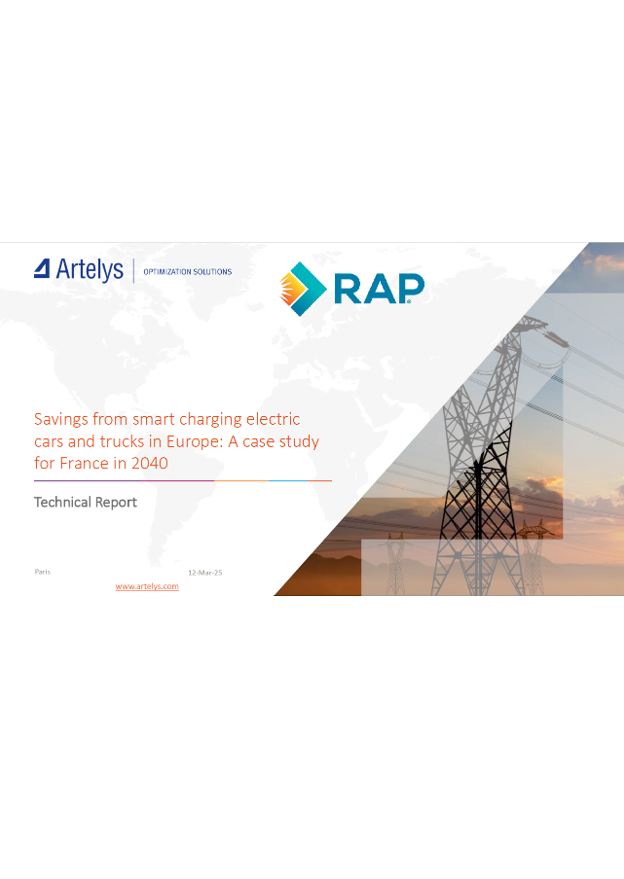
— Savings from smart charging electric cars and trucks in Europe: A case study for France in 2040 – Technical Report
The aim of the study is to quantify the grid savings enabled by smart charging of electric vehicles by 2040. Recognizing Artelys' expertise in modeling the impact of electric mobility on distribution grids, the Regulatory Assistance Project and the International Council on Clean Transportation commissioned our experts to develop an illustrative case study in order to quantify the benefits of an ambitious deployment of smart charging capabilities on the need for grid reinforcement. This work includes both detailed prospective modelling of the electric vehicle fleet and associated electricity demand, as well as modelling and simulation of the electricity distribution network.
Client : Regulatory Assistance Project
Date : March 2025
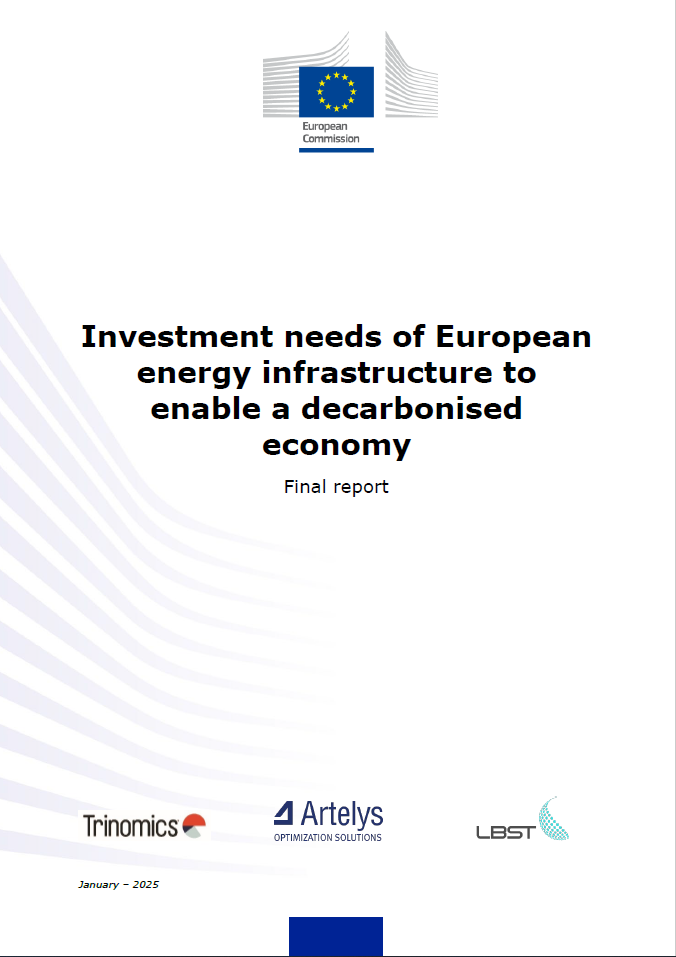
— Investment needs of European energy infrastructure to enable a decarbonised economy
To support the European Commission, the aim of this project is to identify future investment requirements up to 2040 for energy infrastructure across each TEN-E infrastructure category, as well as for non-TEN-E electricity transmission and distribution infrastructure, in order to enable a decarbonised economy in the EU. It also evaluates the need for EU financial support and explores possible forms of EU funding to address the identified needs within the scope of this study's assessment. Artelys has notably contributed to the analysis of the need for cross-border electricity infrastructure, storage assets directly connected to the electricity grid and for offshore electricity transmission infrastructure.
Client : European Commission
Partner : Trinomics and Ludwig Bölkow Systemtechnik
Date : January 2025
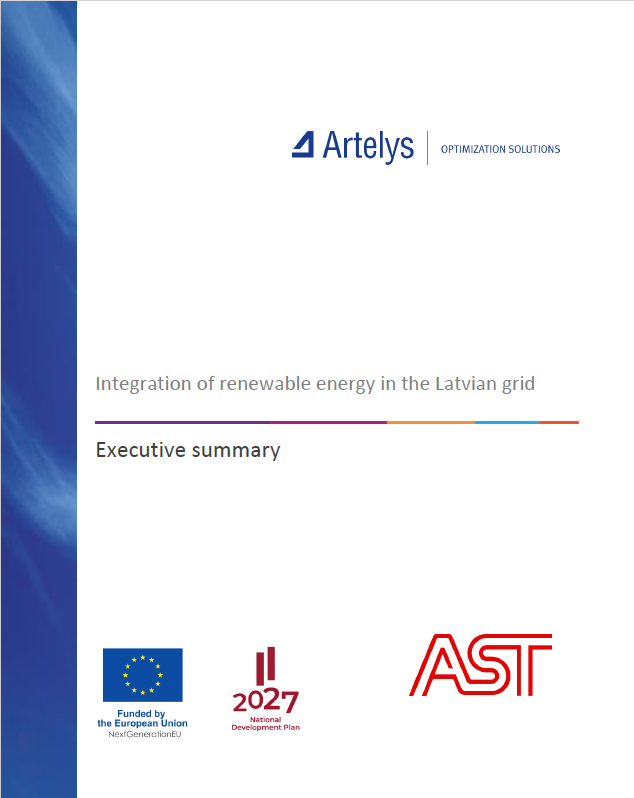
— Integration of renewable energy in the Latvian grid
As solar and wind installations have rapidly expanded in Latvia and neighboring countries in recent years, the challenge of efficiently integrating renewable energy into the grid has emerged. To address this, the Latvian TSO Augstsprieguma Tīkls AS (AST) commissioned Artelys to conduct a study aimed at assessing the grid's renewable hosting capacity and evaluating the potential benefits of Grid Enhancing Technologies (GETs) for facilitating renewable integration. The study performed simulations with the open-source optimal power flow tool PowSyBl Metrix. Findings highlight that GETs could increase the grid's Renewable Energy Sources (RES) hosting capacity by up to 40%, without requiring major grid expansion projects. The study concludes by providing a set of recommendations in relation to integration of Innovative Grid Technologies in the Latvian grid. Find out more in this article.
Client : Augstsprieguma Tīkls AS
Date : September 2024
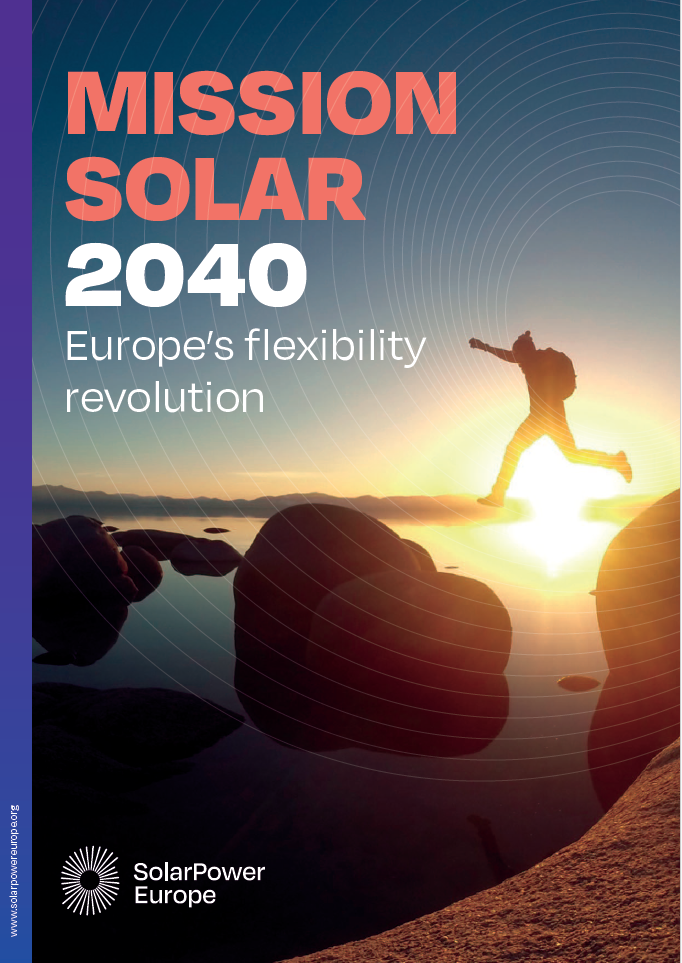
— Mission Solar 2040 – Europe’s flexibility solution
Artelys was commissioned by SolarPower Europe to conduct a study on the interdependency between the development of flexibility solutions in the European power system and a possible solar PV uptake on 2030 and 2040 time horizons. Artelys Crystal Super Grid was used to jointly optimise the hourly operation of the power system along with the investments in additional solar PV capacities, under 2030 and 2040 scenarios that represent gradual deployment levels for flexible capacities (stationary batteries, cross-border interconnections) and demand electrification (electric vehicles, heat pumps, electrolytic hydrogen generation). The study shows that scenarios with ambitious flexibility and electrification levels allow for advanced PV deployment, with solar capacities exceeding 1.2 TWDC in 2030 and 2.4 TWDC in 2040, respectively providing 32% and 39% of the EU power demand. This accelerated development of flexibility solutions also secures a strongly improved business case for solar PV, with lower curtailment rates and stronger capture prices, along with significant multi-sector cost savings and emission reductions thanks to advanced electrification.
Client : SolarPower Europe
Date : June 2024
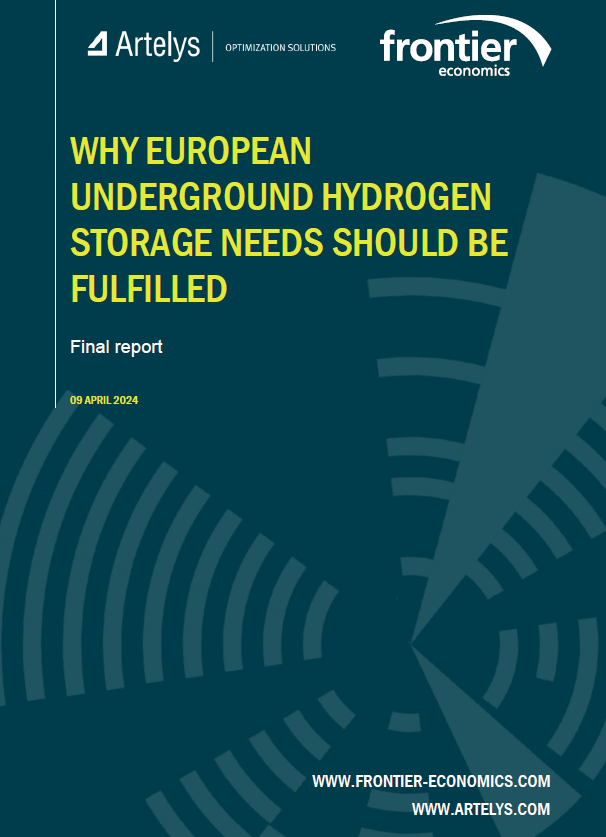
— Why European Underground Hydrogen Storage Needs Should Be Fulfilled
Artelys was commissioned by Gas Infrastructure Europe (GIE) to assess the 2030 and 2050 needs for Underground Hydrogen Storage (UHS) in an optimized European energy system, as well as the potential cost savings achievable thanks to an ambitious development of UHS in 2030. In this study, Artelys Crystal Super Grid was used to jointly optimise the hourly energy dispatch along with investment decisions for both a Pan-European hydrogen infrastructure (storage, cross-border pipelines, electrolysers) and power flexibilities (interconnections, batteries, peakers). In particular, this work relies on the integrated modelling of the coupled hydrogen and power layers under assumptions that underpin REPowerEU ambitious in 2030, and the target of a net-zero EU economy in 2050. Key modelling outcomes highlight a need for a 45 TWh LHV storage capacity as early as 2030 (working gas volume), which represents a gap of 36 TWh LHV with the foreseeable pipeline of UHS projects. Complementary simulations showed that filling this gap will lead to investment and operation cost savings that represent 2.5 billion euros per year.
Client : Gas Infrastructure Europe
Partner : Frontier Economics
Date : May 2024
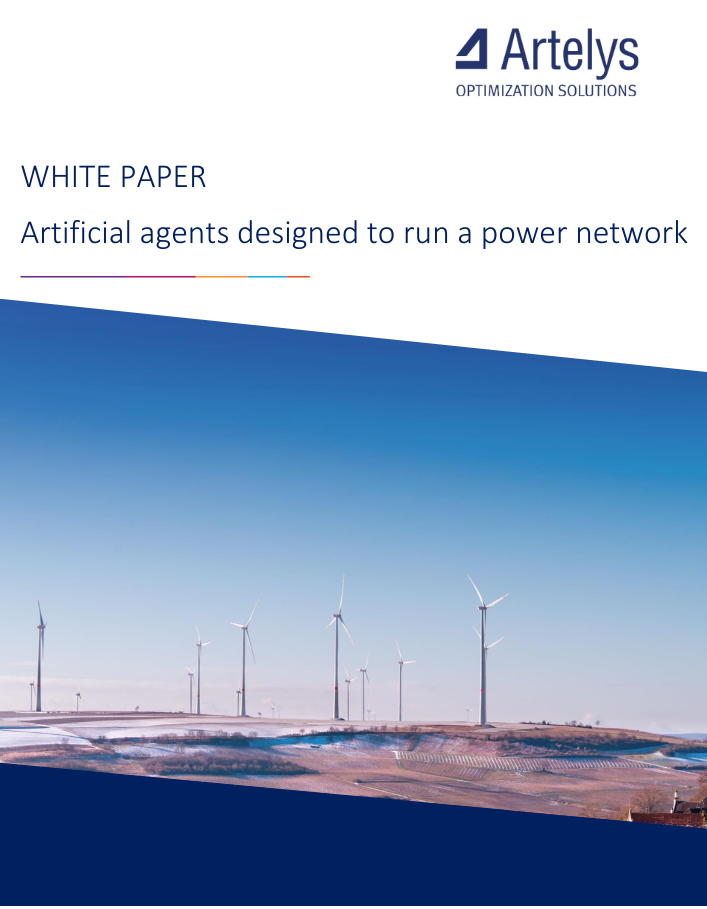
— Artificial agents designed to run a power network
As the electricity mix evolves from predominantly centralised thermal power generation to decentralised renewable generation, grid operations become increasingly complex. As an expert in AI, Optimisation and energy, Artelys is supporting major energy players that have launched initiatives to devise innovative ways of operating the power grid based on optimisation and machine learning. Among them, Réseau de Transport d'Electricité (RTE), French TSO, is animating the L2RPN competition (Learning to Run a Power Network) to encourage the development of solutions based on Reinforcement Learning approach. The competition has fostered the development of the open-source framework Grid2Op, which Artelys is a contributor for years. In the 2023 edition co-organised by the Ile de France region, Artelys successfully participated as a contender with its solution that was ranked first on the leaderboard! Our solution is based on a multi-agent cooperation framework where specialised agents based on different technologies (Reinforcement Learning, Optimisation and Expert System) can take advantage of the different options (topological actions and flexibility mechanisms) when they are best suited. This success paves the way to the next steps to safely bring these AI assistants in operator’s hands.
Date : April 2024
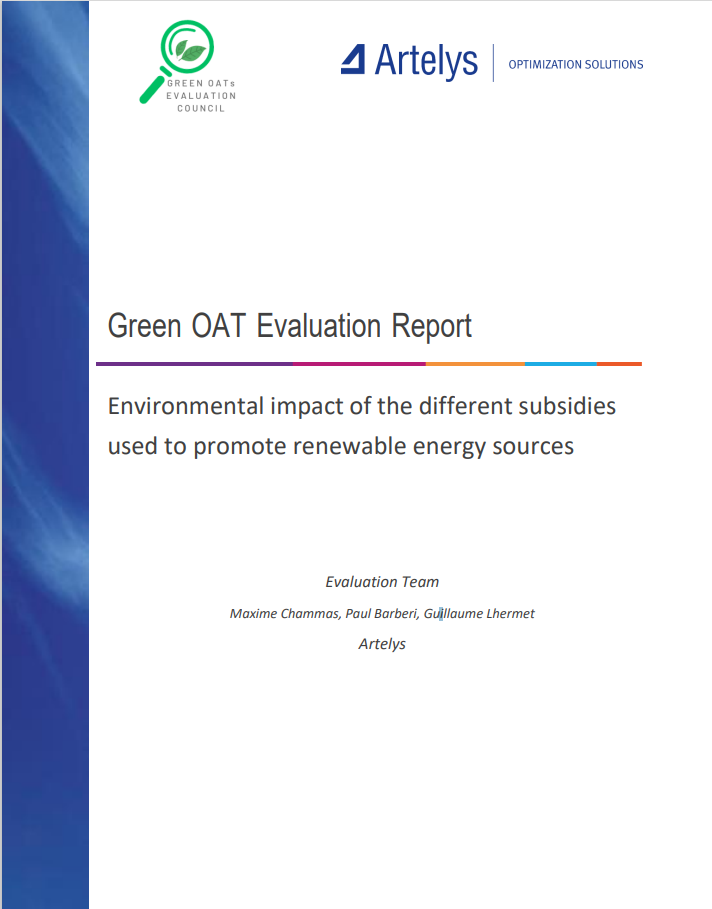
— Environmental impact of the different subsidies used to promote renewable energy sources
Agence France Trésor commissioned Artelys to study the environmental impact of subsidised renewable energies. The scope of the analyses includes both mainland France (and therefore the impact on the European electricity system) and non-interconnected zones, both for the historical period and for the future. The main impacts (in particular greenhouse gas emissions, but also emissions of atmospheric pollutants, the use of raw materials and land use) have been quantified on the basis of modelling work carried out using Artelys Crystal Super Grid. This quantitative analysis is supplemented by qualitative elements from a literature review covering all the other environmental impacts of renewables (biodiversity, water and soil pollution, adaptation to climate change, etc.). The study shows that by 2021, almost 28 MtCO2eq of emissions have been avoided thanks to subsidised renewables, based on life cycle analysis. Modelling shows that renewable energies in metropolitan France have almost exclusively replaced thermal generation in recent years, the vast majority of it in neighbouring countries (between 75% and 86%).
Client : Agence France Trésor
Date : April 2024
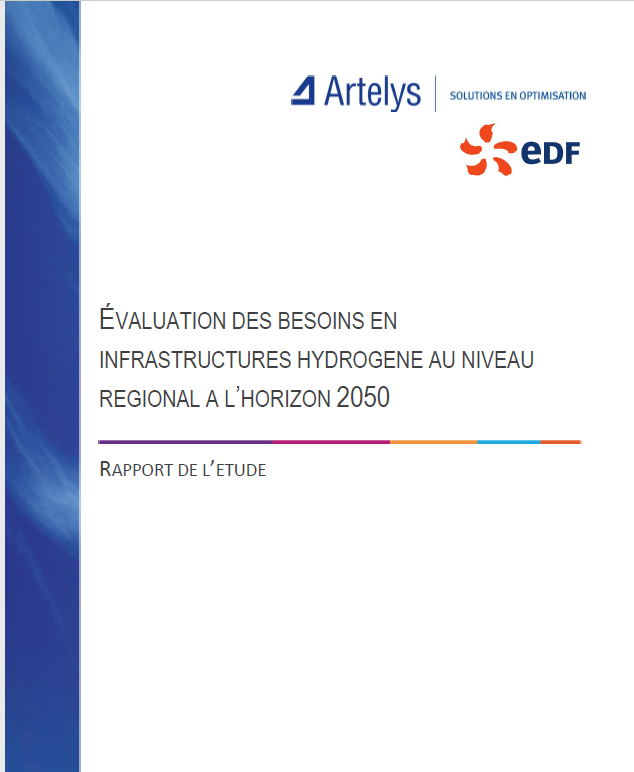
— Assessment of hydrogen infrastructure needs at the regional level by 2050
This study, carried out by Artelys on behalf of Electricité de France (EDF), aims to analyse the needs for hydrogen production, storage and inter-regional transport infrastructures in France by 2050. The analysis was carried out using a regional-scale model of the French energy system using Artelys Crystal Super Grid software, which combines economic optimisation of investments with hourly simulation of the electricity-hydrogen system. Four scenarios incorporating various assumptions about hydrogen demand volumes, the electricity mix, and the impact of hydrogen volumes transiting through France were modelled. The study shows that the development of hydrogen storage offers economic benefits by allowing a flexible operation of electrolysers. The scenarios assuming hydrogen transit from Spain to Germany (or even Belgium, depending on the assumptions) show a hydrogen system structure based around a hydrogen transit backbone (resulting from exogenous transit constraints) developing along the South-East/North-East axis, with significant geological storage capacities developing in the PACA and Auvergne-Rhône-Alpes regions. However, only the scenarios assuming the highest demand for hydrogen show significant development of an inter-regional hydrogen network beyond this backbone.
Client : Electricité de France
Date : April 2024
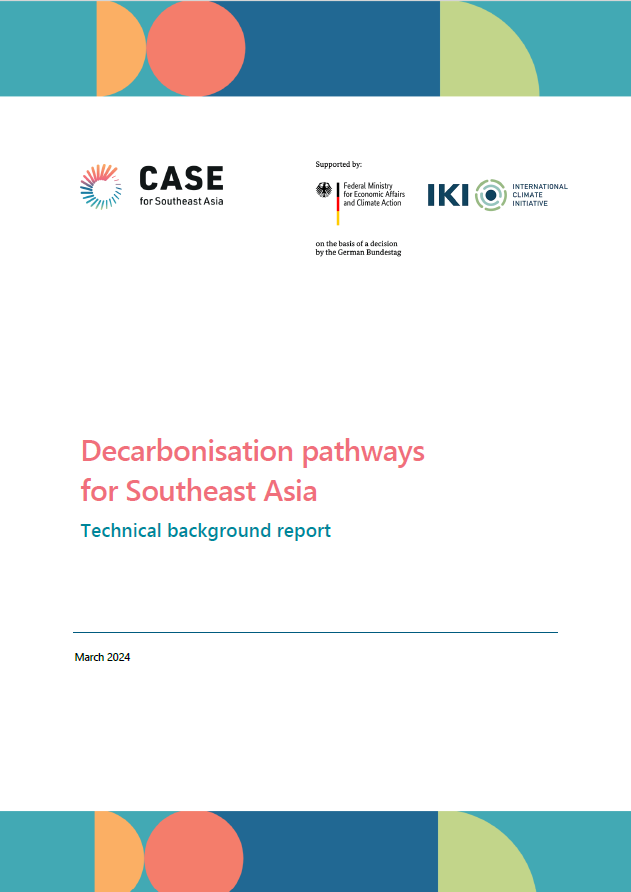
— Decarbonisation pathways for Southeast Asia
Artelys and its partners Fraunhofer ISI has been selected by GIZ to undertake a study on the key options for decarbonisation of energy use in Southeast Asia. This report assesses the current use of fossil fuels in the region and its evolution perspectives, with a particular focus on fossil gas and related infrastructure elements. The study then proceeds with the evaluation of the options to decarbonise energy use across the power system, industry, transport, and residential sectors in Southeast Asia, highlighting the specific challenges for the region.
Client : Deutsche Gesellschaft für Internationale Zusammenarbeit (GIZ) supported by Agora Energiewende and NewClimate Institute
Partner : Fraunhofer ISI
Date : March 2024
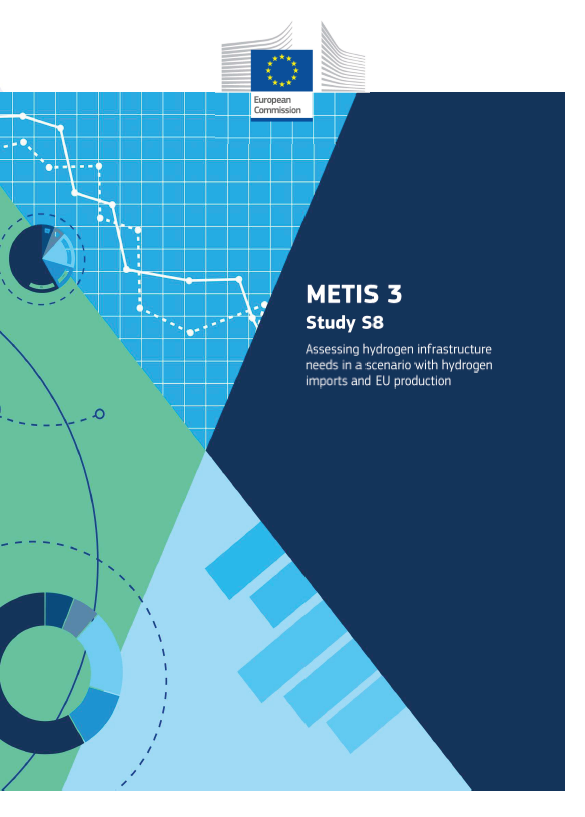
— Assessing hydrogen infrastructure needs in a scenario without hydrogen imports and EU production
In a context of renewed interest in hydrogen as a means of decarbonising hard-to-abate carbon intensive economic sectors, the European Commission announced the objective of 40 GW electrolyser capacity by 2030 producing up to 5 Mt of renewable hydrogen in its Communication “A hydrogen strategy for a climate-neutral Europe” (2020). Following the Russian invasion into Ukraine, the European Commission’s REPowerEU plan (2022) further envisages an accelerated uptake of hydrogen, notably in transport and industry sectors, in order to aim for a phase-out of natural gas imports from Russia by 2027, increasing the hydrogen production target to 10 Mt, as well as 10 Mt hydrogen imports, of which 4 Mt will take the form of derivatives. The present study aims at assessing the needs for pan-European hydrogen infrastructure in the beginning of the 2030s, adopting the REPowerEU scenario as main framework of the modelling assumptions. To assess hydrogen infrastructure needs, a multi-energy modelling environment has been designed in the METIS model, reflecting the operation and coupling of electricity, gas and hydrogen systems with an hourly time resolution over an entire year (2030). The capacities of hydrogen storage, production, and cross-border transmission assets have been optimized thanks to the advanced algorithms of the Artelys Crystal Super Grid platform.
Date : December 2023
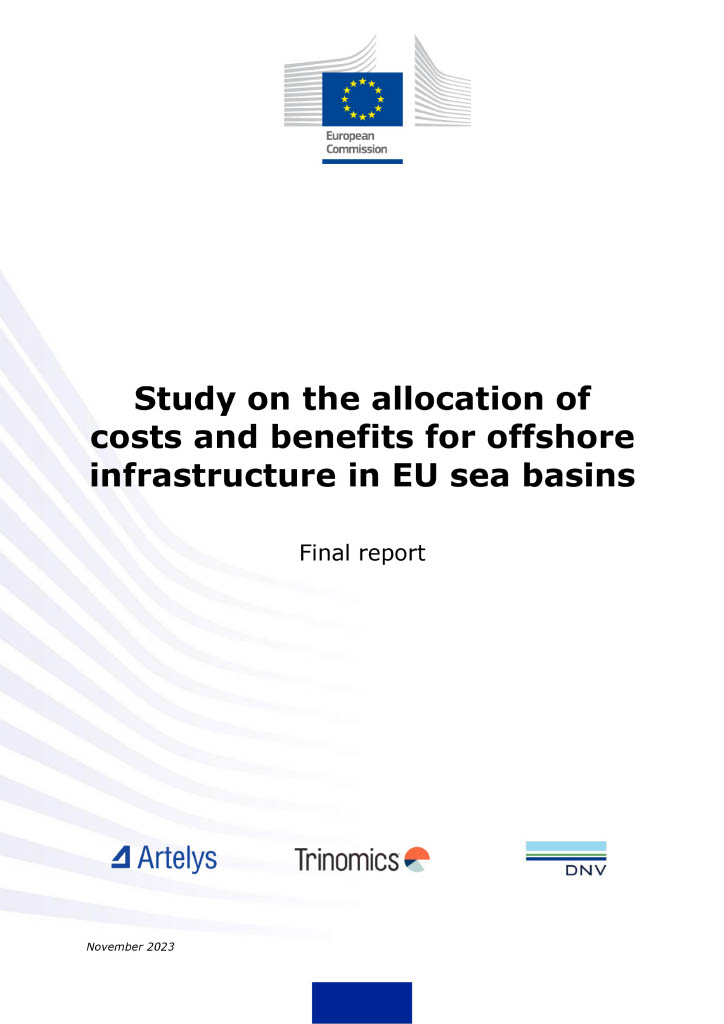
— Study on the allocation of costs and benefits for offshore infrastructure in EU sea basins
To support the European Commission, and notably its Grid Action Plan, this study proposes methodologies for Cost-Benefit Analysis and Cross-Border Cost Sharing options for offshore electricity infrastructure projects. The massive investments that are foreseen in offshore generation and grid infrastructure will create huge benefits for Europe. A fair allocation of costs and benefits across Member States can be a key enabler of such projects. Who should pay for the offshore electricity infrastructure? How does this depend on the way the benefits are shared? This study aims to provide some answers.
Partners : Trinomics, DNV
Date : November 2023
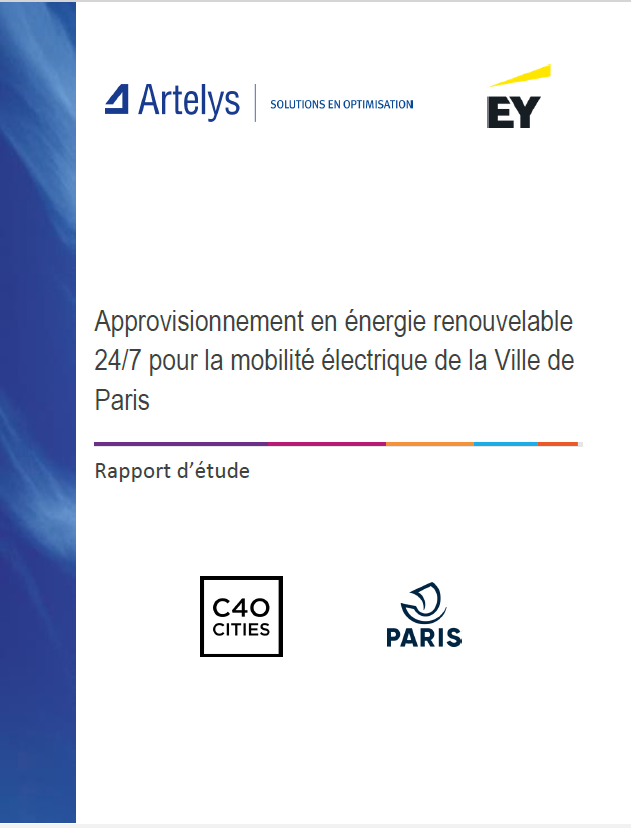
— 24/7 renewable energy supply for electric mobility in the City of Paris
The City of Paris has ambitious objectives on renewable electricity supply, and they already have 100% renewable supply for municipal demand. However, current certification mechanisms (guarantees of origin) do not account for real time matching between demand and renewable production, which is variable and not necessarily available at all times. To address the limits of this approach, initiatives such as the 24/7 Carbon-Free Energy (CFE) have been launched, with the objective of ensuring that every consumed kilowatt-hour is produced by carbon-free sources at each hour of the year. Within this context, Artelys and EY performed a study for the City of Paris and C40 to assess the potential of matching renewable generation and e-mobility demand at each hour of the year, with a focus on the role of mobility charging flexibility.
Client : C40
Partner : EY
Date : October 2023
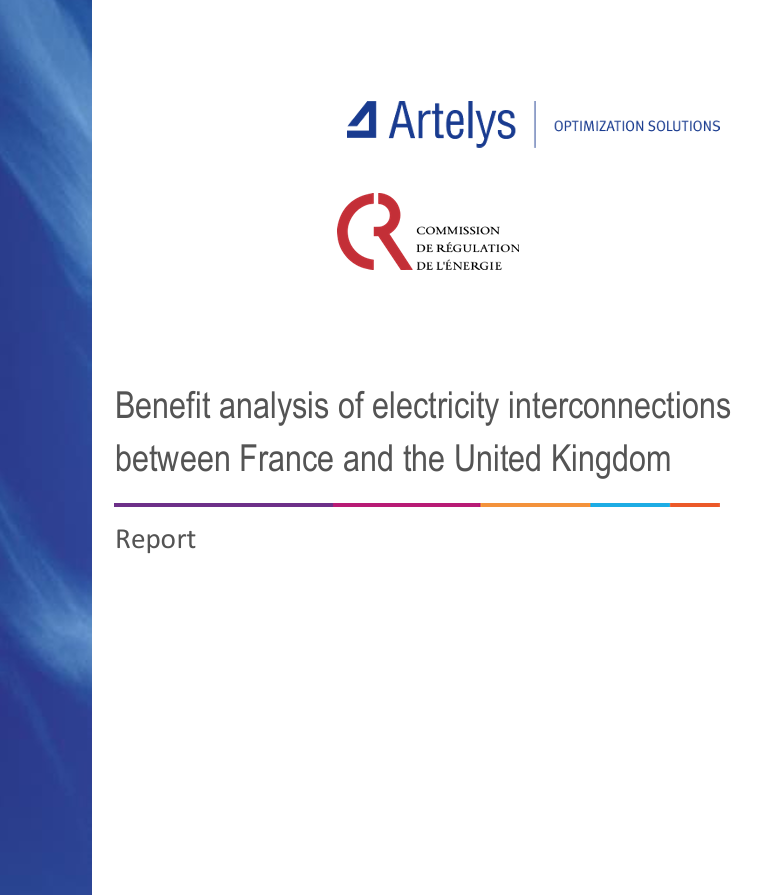
— Benefit analysis of electricity interconnections between France and the United Kingdom
The aim of this study is to provide a quantitative and qualitative analysis informing decision-making on the development of new electricity interconnections between France and Great Britain. The economic benefits associated with a new interconnection project are estimated via the increase in social welfare brought about by the commissioning of this new interconnection. The expected gains in terms of security of supply are also assessed. These benefits are evaluated for the years 2030, 2040 and 2050. The future evolution of the power generation and capacity mix, energy demand and infrastructure cannot be known with certainty. Several scenarios and variants are therefore studied (including different assumptions about renewable energy deployment, nuclear capacity, interconnection levels, etc.) in order to identify the opportunities and risks associated with an increase in electricity interconnection capacity between France and Great Britain.
Client : CRE
Date : October 2023
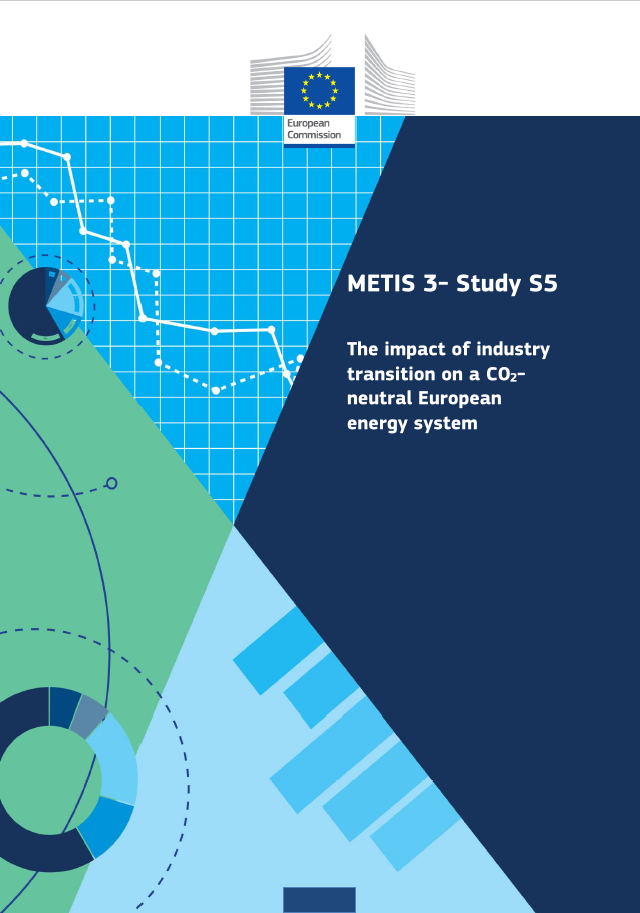
— The impact of industry transition on a CO2 neutral European energy system
This study addresses the essential role of the industry sector for the EU’s carbon neutrality objectives, exploring possible pathways for a large-scale replacement of fossil fuels by secondary energy carriers within industry processes. Two main scenarios are examined, relying respectively on electricity and hydrogen as main vectors of the transition, in an approach that combines a detailed scenarization of industry demand with the FORECAST simulation tool and a joint optimization of European energy resource capacities and hourly dispatch for the year 2050 using the METIS energy system model. This analysis therefore provides insights on both industry specific potentials and limitations for transition and the related energy system effects, with sensitivities on the existence of global value chains for chemical imports and on the availability of wind and solar power generation. In particular, evidence from both scenarios suggest a massive increase of the demand for green hydrogen and electricity, driving significant infrastructure adaptation at European level. While domestic hydrogen generation from renewable energy sources becomes competitive compared to imports, its significance within industry needs is highly dependent on the imported volumes of strategic chemicals such as green methanol, ammonia or ethylene.
Partner : Fraunhofer ISI
Date : June 2023
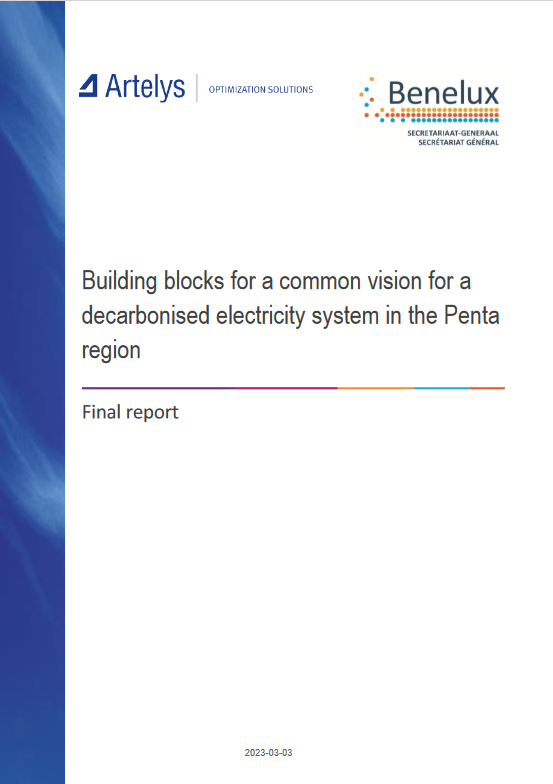
— Building blocks for a common vision for a decarbonised electricity system in the Penta region
In early 2022, the Pentalateral Energy Forum has selected Artelys to establish building blocks for the construction of a joint vision for a decarbonised Penta electricity system. The project outputs will serve as inputs for the actual vision building process among Penta members in 2023. The Pentalateral Energy Forum is the framework for regional cooperation in Central Western Europe towards improved electricity market integration and security of supply, including Austria, Belgium, France, Germany, Luxemburg, the Netherlands and Switzerland. For this purpose, Artelys analysed and compared a large number of national and international scenario studies and technical reports. The identification of likely developments common to the different transition pathways, but also remaining uncertainties, allowed to derive a set of recommendations for power sector decarbonisation in the Penta region. It highlights that electricity will play the central means of decarbonisation of all economic sectors and should hence be decarbonised in itself as quickly as possible, ideally towards 2035. The countries in the Pentalateral Energy Forum are particularly well placed to initiate or accelerate the required changes. Regional cooperation between countries will enable decarbonisation in the cheapest way – but requires dedicated infrastructure investments.
Client : Benelux General Secretariat on behalf of the Pentalateral Energy Forum
Date : March 2023
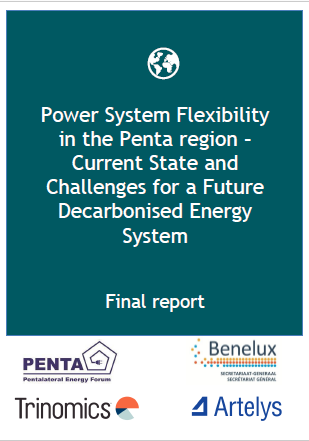
— Power System Flexibility in the PENTA region - Current state and challenges for a future decarbonised energy system
The Pentalateral Energy Forum selected Trinomics and Artelys to study the evolution of flexibility needs and solutions in the Penta region and identify market and regulatory barriers for its development. The assessment showed that flexibility needs in the Penta region will increase by 3-5 times by 2050 due to the integration of renewables and electrification, with higher impacts at the daily and weekly scale. The flexibility needs will be supplied by a portfolio of flexibility solutions, which will move from generation-based solutions to demand-side and storage. The analysis also showed the importance of interconnections and market integration, by allowing a reduction of flexibility needs and exchange of flexibility across countries.
Client : Benelux General Secretariat on behalf of the Pentalateral Energy Forum
Partner : Trinomics
Date : March 2023
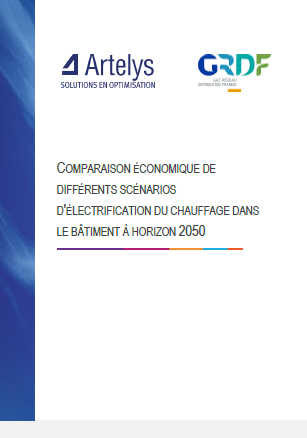
— Economic comparison of different scenarios of electrification of heating in buildings by 2050
Artelys was commissioned by GRDF to analyze the technical and economic implications of 4 heating equipment mixes in the French building sector by 2050. To this end, the energy supply systems associated with 4 scenarios for the evolution of heating and hot water equipment in France in the residential and tertiary sectors were modeled using the Artelys Crystal Super Grid software. These scenarios, all of which are compatible with the national carbon neutrality objectives, are differentiated by their rate of electrification of heating equipment and their level of national biogas consumption, within the limits of available sources. For each scenario, the hourly operation of energy production, storage and transport systems was simulated. The study underlines that a stronger electrification of building heating leads to a reduction of final energy consumption due to the high efficiency of heat pumps. However, an overall economic assessment reveals that the savings on the energy supply system do not compensate for the additional cost of equipment such as electric heat pumps. Thus, the scenarios which present a partial maintenance of direct gas use in the heating of the building appear to be economically relevant
Client : GRDF
Date : March 2023
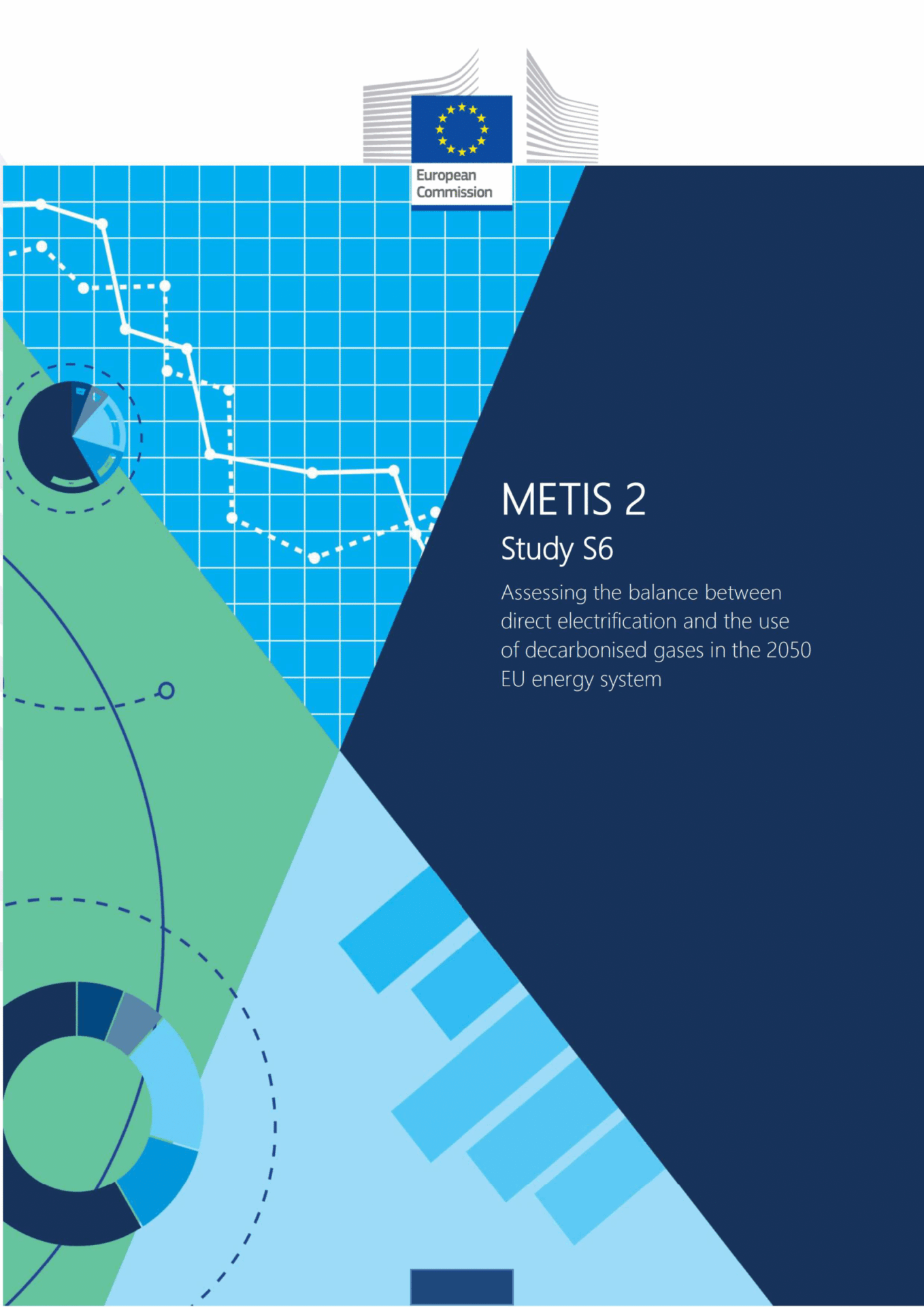
— Assessing the balance between direct electrification and the use of decarbonised gases in the 2050 EU energy system
This study aims at performing a detailed examination of investment decisions and the operational management of a 2050 EU power system with a focus on comparing different decarbonisation options for the provision of industrial heat at different temperature levels. The analysis relies on an upgraded version of the EU energy system model METIS, which allows to jointly optimise investments in electricity, hydrogen and heat generation capacities. The key findings of the study are that adopting a multi-sectoral and multi-energy modelling approach paired with an hourly year-long time resolution allows for a better detection of synergies between sectors while properly reflecting the hourly system dynamics. This may lead to significant benefits in terms of avoided investments and a more cost-efficient achievement of decarbonisation objectives.
Client : European Commission
Partner : Comillas
Date : February 2023
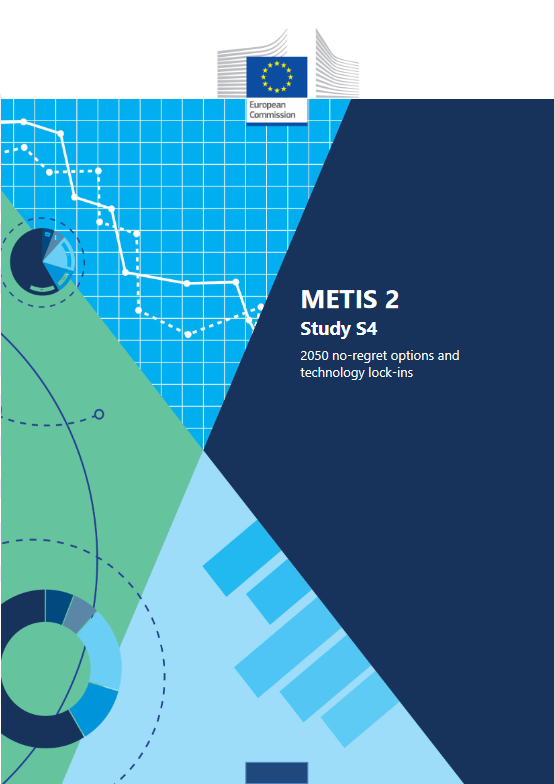
— 2050 no-regret options and technology locks-ins
The study takes a deeper look at the 2050 EU energy system. It builds upon a decarbonisation scenario developed in the earlier study METIS 2 - S6 which focusses on the EU electricity sector, and its interlinkage with the hydrogen and the heat sectors. While study S6 aimed for a cost-optimal dimensioning of the EU power system, the present study goes a step further and aims to derive more general conclusions. It sheds light on no-regret options towards the decarbonisation of the 2050 EU energy system, potential risks of technology lock-ins, and major drivers of uncertainty in energy system planning like system sensitivity to climate change and commodity prices. The analysis is complemented by an evaluation of the impact of an enhanced representation of hydrogen infrastructures and provides recommendations for a holistic energy system and infrastructure planning approach.
Client : European Commission
Partner : Comillas
Date : February 2023
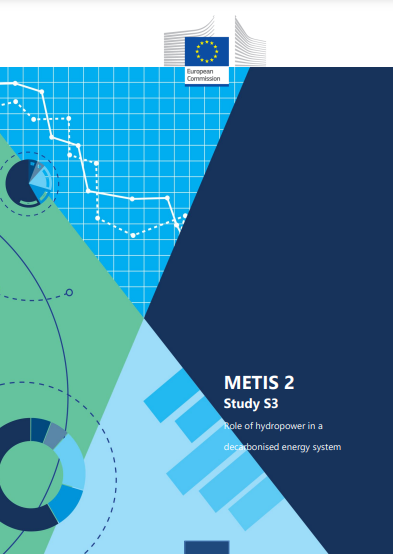
— Role of hydropower in a decarbonised energy system
The overarching objective of the study was to gain insights in the future role of hydropower assets in a decarbonised energy system. For this purpose, it deemed appropriate to review the hydro dispatch strategy of flexible hydro assets in the EU energy system model METIS . Instead of relying on guidance curves based on historical data, the idea was to incorporate a forward-looking view, that would reflect the full flexibility offered by hydropower plants and allow modelling a more realistic dispatch of these units. This involved the integration of more reliable statistical data on annual hydro power generation and installed capacities. Further, it proved useful to represent the stochastic nature of hydro inflows for both run-of-river and reservoir assets. This was achieved by equipping METIS with variable inflow profiles (time series data) for 28 historical weather years, in line with the modelling of other renewable energy sources (solar PV & wind). Building further on these upgrades, it became possible to update the guidance curves of hydro reservoir assets, making use of Stochastic Dual Dynamic Programming (SDDP). A detailed explanation of the chosen approach is discussed in the report, which is completed by a set of illustrative results, including a sensitivity on the impact of climate change.
Partner : Engie Impact
Date : February 2023
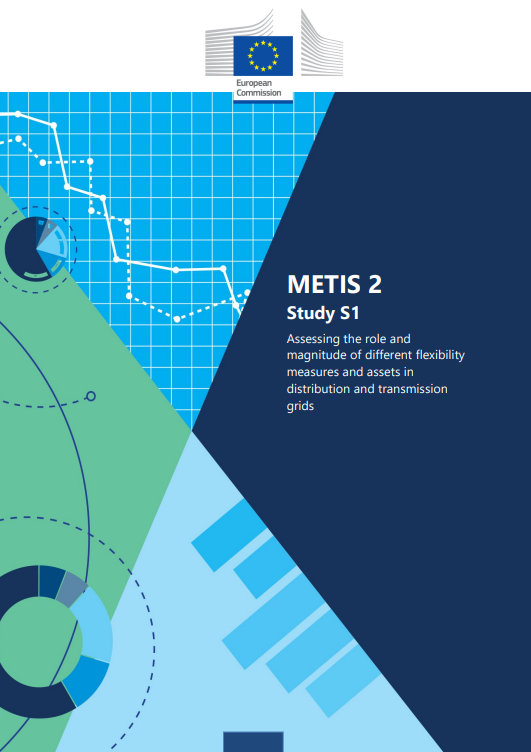
— Assessing the role and magnitude of different flexibility measures and assets in distribution and transmission grids
The general objective of this study is to identify and characterise flexibility solutions, and to assess their potential roles to alleviate congestions in transmission and distribution grids. More precisely, the study has two major objectives: (i) to provide a holistic overview of the different flexibility options at hand, including a description of their potentials in the EU MSs, their techno-economic characteristics and possible fields of deployment, and (ii) to provide a scenario-based assessment of the potential deployment of flexibility assets to avoid congestions in distribution and transmission grids, to enhance the utilisation of existing grid infrastructure and to facilitate a cost-efficient integration of renewables.
Client : European Commission
Date : February 2023
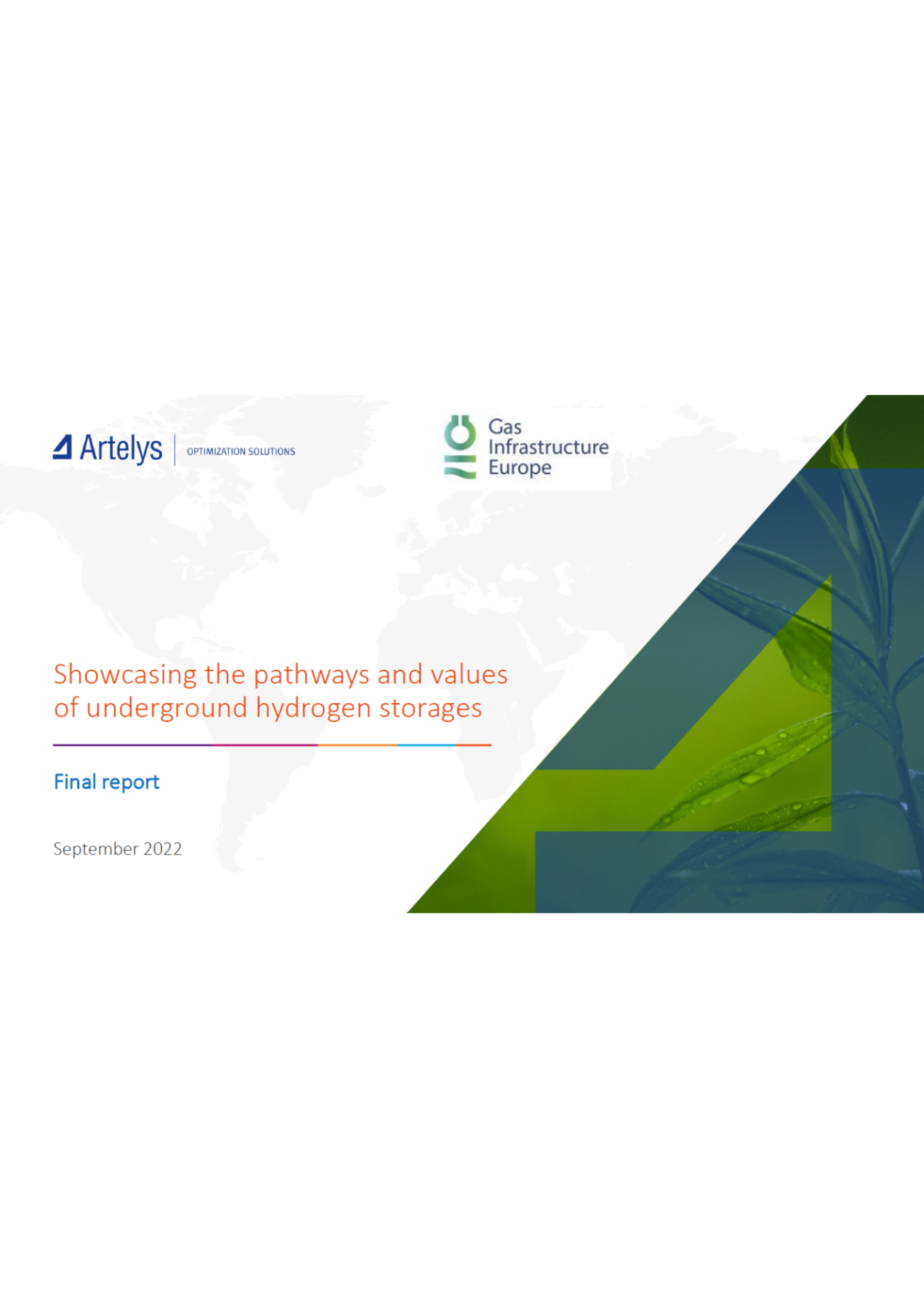
— Showcasing the pathways and values of underground hydrogen storages
Artelys has been selected by GIE to undertake an in-depth analysis of the values brought by underground hydrogen storage, and to illustrate how these values can emerge in a selection of territorial use-cases. To proceed with the identification of the values brought by hydrogen storage, Artelys has taken into account the flexibility needs that are specific to electrolytic hydrogen, and considerations related to the nascent nature of the hydrogen economy. Artelys has relied on the multi-energy modelling platform Artelys Crystal Super Grid to evaluate the level of benefits brought by hydrogen storage in four territorial use-cases, including reduction of levelized cost of hydrogen production, avoided investments, reduction of GHG emissions, reduction of RES curtailment. The results of this study can help inform policy recommendations to support the emergence of underground hydrogen storage that can help kick-start a cost-efficient and sustainable hydrogen ecosystem.
Client : GIE
Date : January 2023
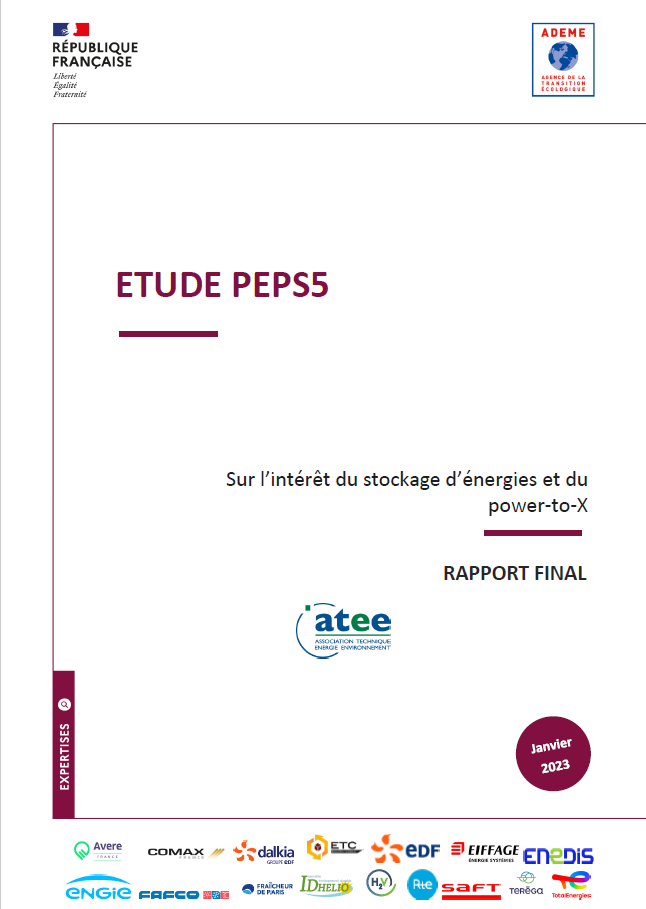
— PEPS5 study on electricity, heat and cold storage and power-to-gas in France by 2030 and 2050
In this study launched by ATEE “Club Stockages” and 16 of its members and co-financed by ADEME, Artelys, with the help of CEA-Liten, studied the interest of electrical storage technologies (batteries, pumped storage station, etc.), thermal (heating and cooling) and power-to-gas (blending H2, methanation, power-to-hydrogen-to-power), in France in 2030 and 2050. The analysis focuses on the costs and benefits associated with the installation of energy storage or power-to-gas technologies in 15 case studies considered interesting a priori, around reference scenarios for the evolution of the energy system. The study highlights the interest of heat and cold storage in electrified systems (networks and industries), of the smart charging of batteries of electric vehicles and PHS in all of the 2030 and 2050 scenarios, even if this result is of course conditioned by the evolution of the system (e.g. electrification of heat and transport) and the possible development of other competing flexibilities.
Clients : ATEE Club stockage, ADEME, 16 members of the club
Partner : CEA-Liten
Date : December 2022
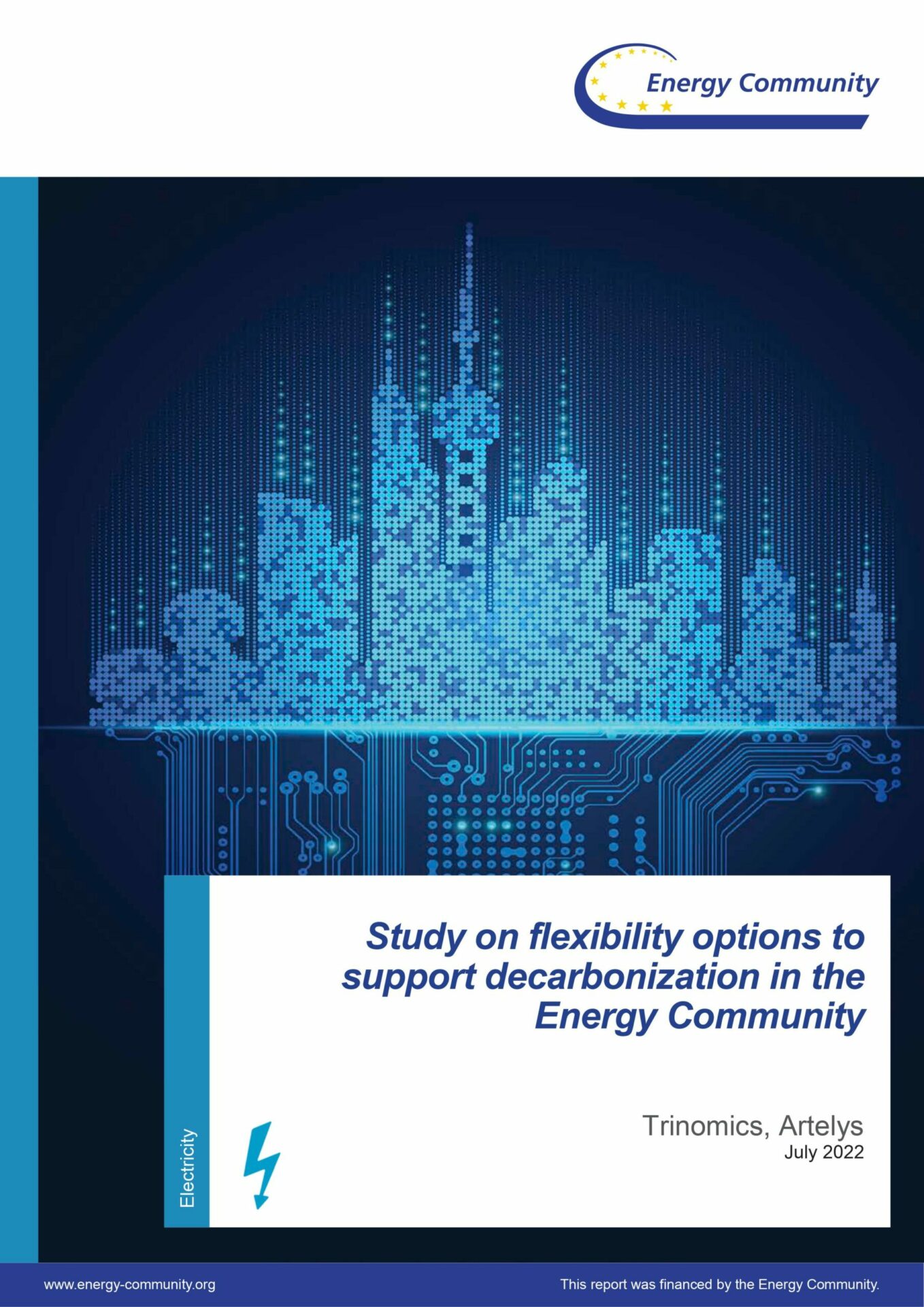
— Study on flexibility options to support decarbonization in the Energy Community
The Energy Community Secretariat has selected Trinomics and Artelys for the study of flexibility options to facilitate the integration of renewable energy sources and support decarbonization in the Energy Community towards 2040. The quantitative analysis was conducted by Artelys using the energy market model Artelys Crystal Super Grid. Future flexibility needs are analyzed and cost-optimal portfolios of flexibility solutions are determined considering a wide range of scenarios in terms of the deployment of variable renewable energy sources (vRES), coal-fired power generation phase-out and levels of interconnection capacity. All Contracting Parties (except Georgia) were modelled jointly with the EU power market area. The study highlights that no additional investments into flexibility would be needed by 2030 even in the most ambitious vRES deployment scenario. It also emphasizes that cross-border integration of power networks and markets decreases the need for investments in flexibility solutions in 2040 and drives down electricity system costs and CO2 emissions.
Client : Energy Community
Partner : Trinomics
Date : September 2022
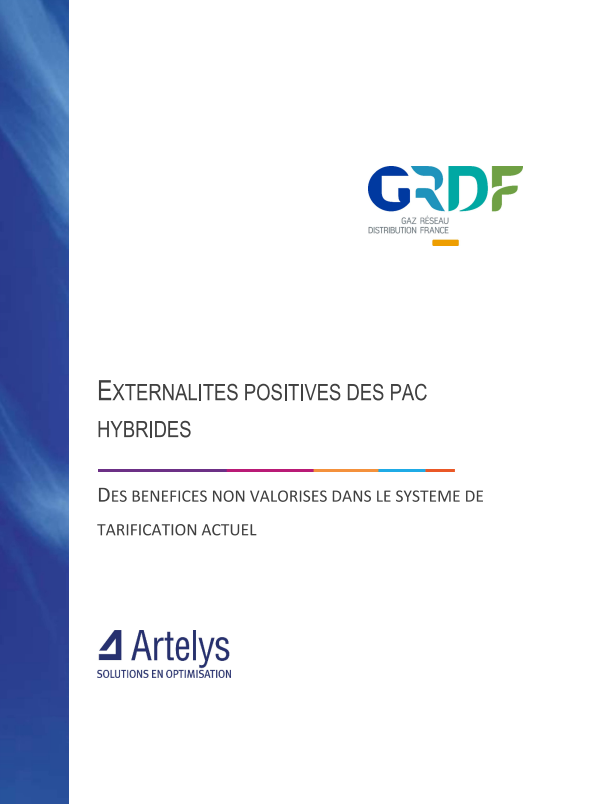
— Positive externalities of hybrid heat pumps - Benefits not valuated in the current pricing system
The French National Low Carbon Strategy sets ambitious objectives for decarbonization of the building sector through a strong electrification of heating use. Purely electric heat pumps are thus widely used in housing and are preferred to hybrid heat pumps. However, the hybrid heat pump (air/water heat pump with a gas condensing boiler as a back-up) offers benefits that do not seem to be fully exploited. In this context, GRDF commissioned Artelys to conduct a study to identify incentives for the development of hybrid heat pumps. To this end, the study estimates the value brought to the energy system by hybrid heat pumps compared to heat pumps with an electrical back-up, and then compares this system value to the value perceived by the consumer. The study has highlighted a significant imbalance between the benefits of hybrid heat pumps to the energy system and the current pricing signals to consumers. Indeed, the current pricing system does not make possible to take advantage of the load shedding capacity of hybrid heat pumps when the electricity network is very constrained, particularly during periods of extreme cold. A first reflection on economic incentive measures is then carried out for consumers to benefit from the advantages of hybrid heat pumps.
Client : GRDF
Date : June 2022
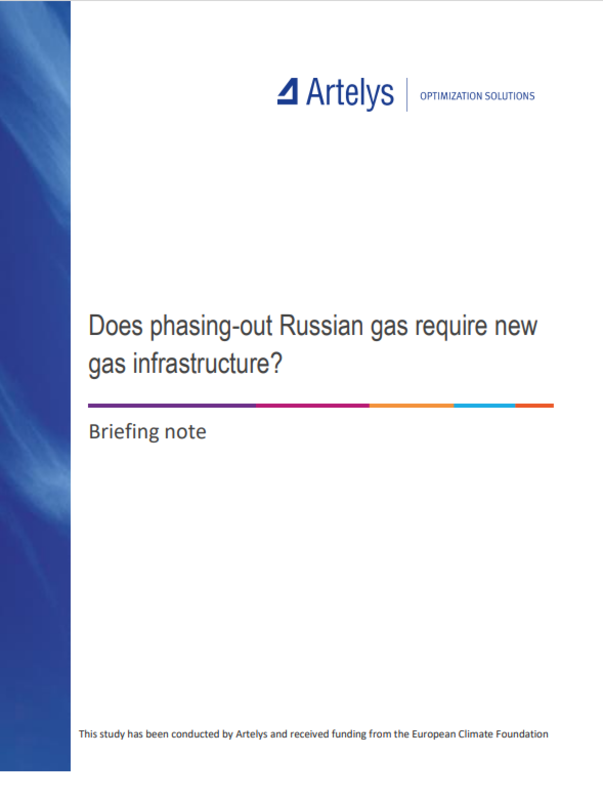
— Does phasing-out Russian gas require new gas infrastructure ?
The European Climate Foundation has selected Artelys to investigate the need for new gas infrastructure in the perspective of a Russian gas imports phase-out by 2025. The Russian-Ukrainian conflict has driven demands for the European Union to reduce imports of Russian gas as soon as possible. It requires the EU to consider how to best allocate investments in order to reduce the EU’s dependence in a structural way. In this context, Artelys has compared two scenarios: a first strategy prioritizes investments in LNG import capacities, a second one combines energy efficiency measures, renewable deployment and flexibility solutions. The analysis of both scenarios was conducted using the Artelys Crystal Super Grid platform. This study identifies that the implementation of the measures proposed in the Fit-for-55 package would enable the EU to largely exit Russian gas by 2025. It also identifies that additional European clean energy investments provide the best path forward to ensure full security of supply for a Russian gas phase-out. From a total system cost perspective, a clean energy solution scenario is cheaper than a gas-based solution scenario. It also succeeds in reducing CO2 emissions in the long-term.
Client : European Climate Foundation
Date : May 2022
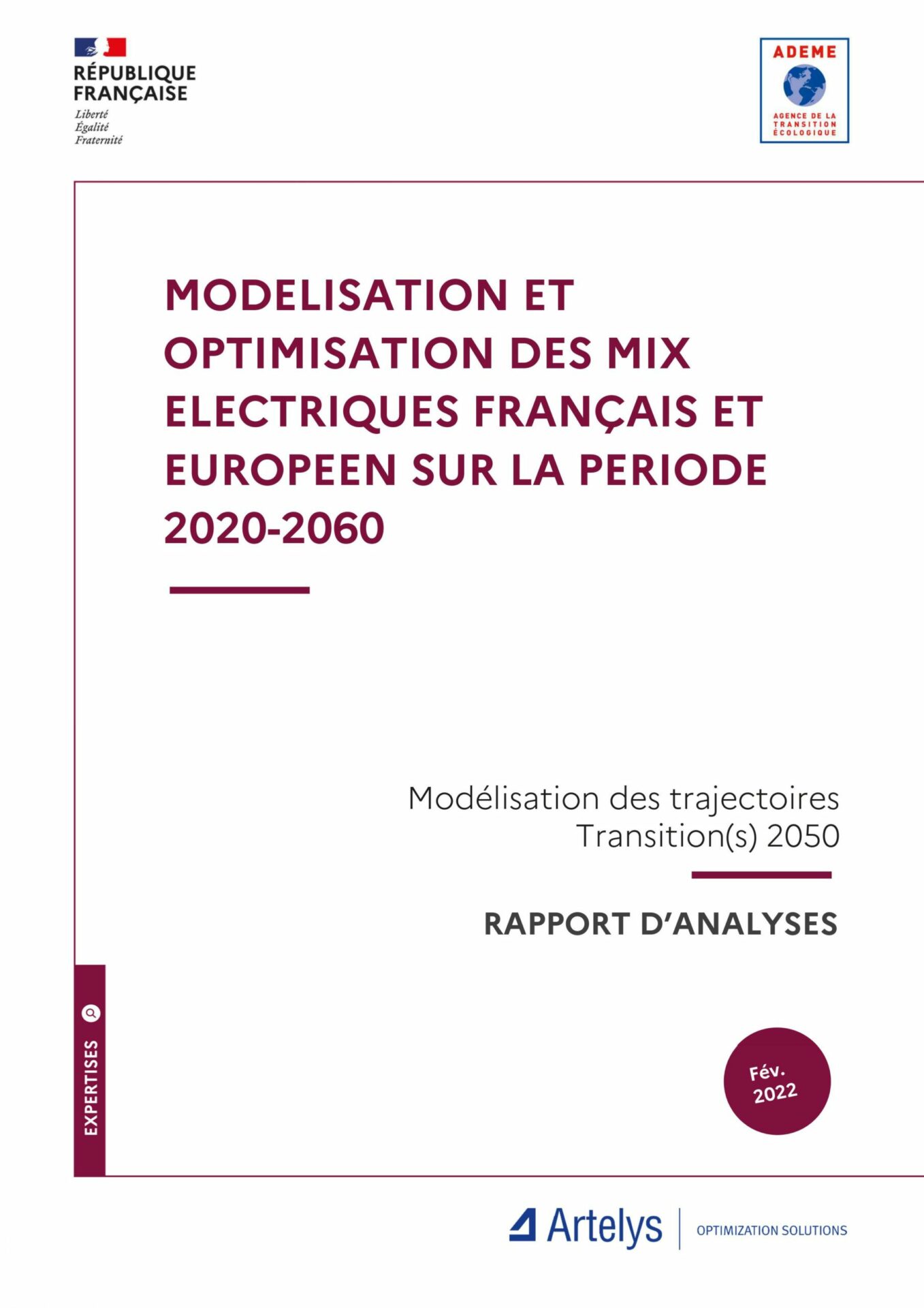
— Modeling and optimization of the French and European electricity mix 2020-2060
ADEME, the French energy and environment agency has selected Artelys to build and analyse power systems scenarios in coordination with its "Transition(s) 2050" project. Four multi-energy carbon-neutral pathways have been built for France. Artelys has set up a detailed model able to represent power generation, demand dynamics (including flexibility) and internal networks, with infra-national granularity, from 2020 to 2060. System dimensioning and operations have been jointly optimised from 2020 to 2060, with a 5-year timestep, ensuring robustness via hourly granularity over 9 weather scenarios. The simulation results allow to derive the following key findings: the transition to energy mixes more reliant on RES-e leads to a more evenly distributed power generation system compared to today’s situation. In order to limit network reinforcements and the costs of flexibility provision, investments in generation have to be planned jointly with network developments. Notably, commissioning renewables in best-LCOE areas (disregarding network constraints) leads to higher overall costs. Along with the reinforcement of interconnectors and the increase of cross-border exchanges, the development of demand-side flexibility is key to ensure that the power system functions in a cost-efficient manner. Electric vehicles’ smart-charging and electrolysers’ flexible operations, notably, are crucial to adequately integrate renewables. The key modelling assumptions can be found in a dedicated leaflet. The results of sensitivity analyses of European exchange capacities are available here.
Client : ADEME
Date : March 2022
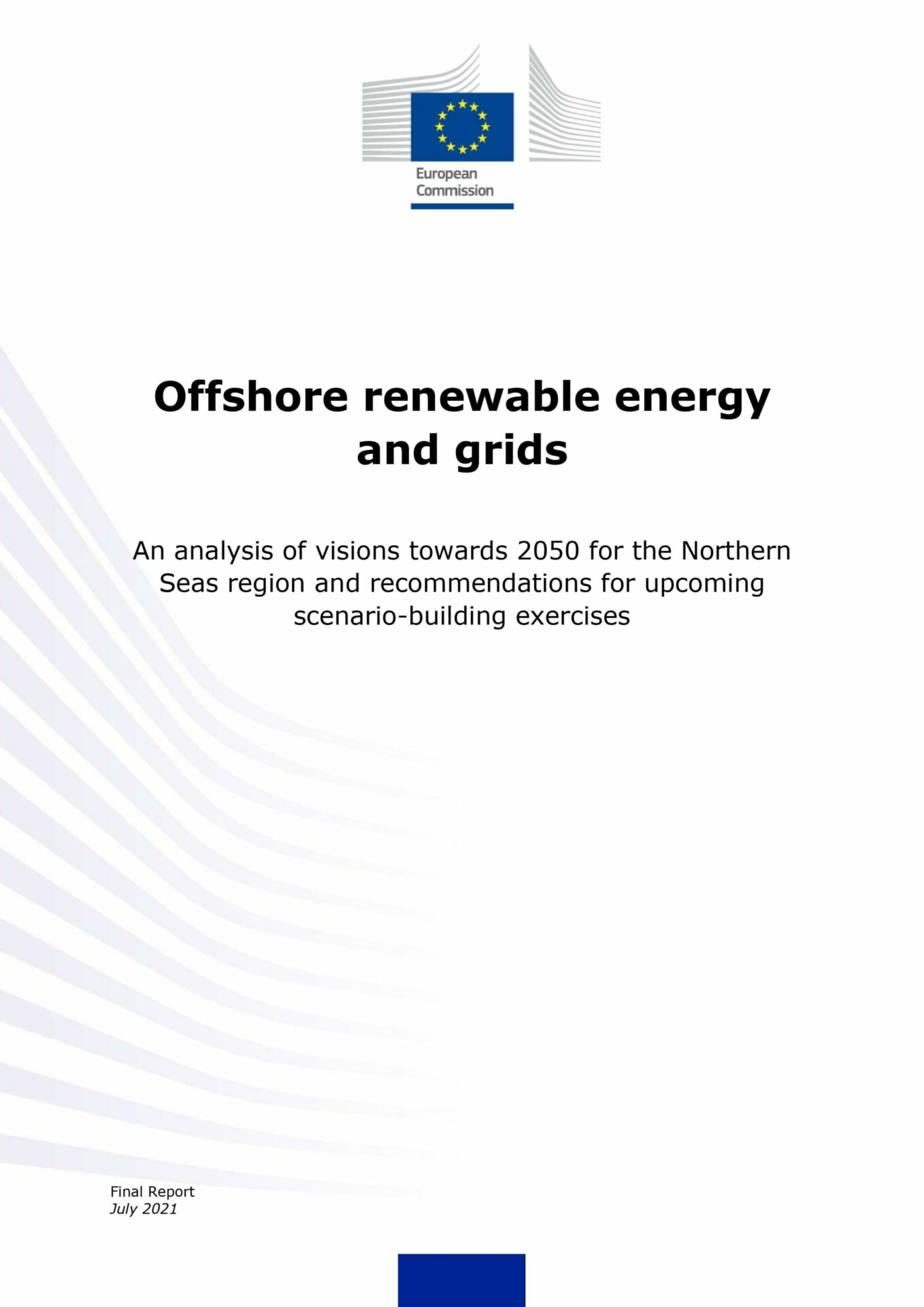
— Offshore renewable energy and grids - An analysis of visions towards 2050 for the Northern Seas region and recommendations for upcoming scenario-building exercises
The North Sea is foreseen to play a pivotal role in the decarbonisation of the European economy, with important wind offshore renewable potentials, energy intensive industries close to the shore, and existing gas infrastructures for natural gas that could be refurbished to foster the development of green hydrogen. In this context, the European Commission has selected Artelys, DNV and Trinomics to analyse the visions for the North Sea of the different stakeholders involved. The key objective of this study was to provide an overview of existing national and regional long-term analyses, assumptions and plans on offshore renewable energy and grids in the North Seas Energy Cooperation (NSEC) countries. The study has identified the common grounds and diverging aspects of transition pathways and their underlying assumptions, while also providing a qualitative discussion of the way the scenario-building and planning methodologies may differ. Finally, the study provides recommendations on aspects that would be important to consider in upcoming scenario-building exercises that aim at shedding light on plausible futures of the North Sea region. These aspects include for example renewable energy sources (RES) potentials assessment, maritime spatial planning, multi-energy considerations, and risk assessment.
Client : European Commission
Partners : DNV, Trinomics
Date : February 2022
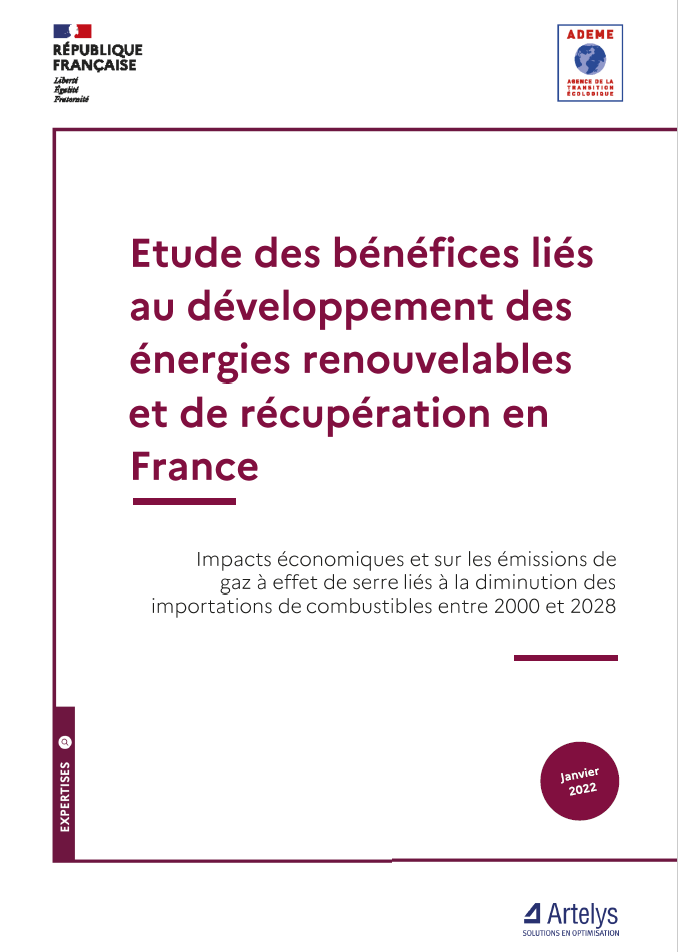
— Study of the benefits linked to the development of renewable energies in France
In this study commissioned by ADEME, Artelys evaluated the economic and environmental benefits provided by the development of renewable and recovered energies on French territory. The study is part of the current debate on costs and benefits linked to the development of renewable energies and aims to supplement the socio-economic indicators produced by ADEME in the “Marché et emploi” study. The approach followed by the study is to compare the historic energy mix (2000-2020) and the mix forecasted in the PPE (2020-2028) to a counterfactual scenario called "without new renewable energy" with a lower part of renewable energy. The benefits brought by the development of EnR&R are quantified by evaluating the primary and final energy consumption, the savings linked to the reduced fuel imports and the increased electricity exports, and the reduced GHG emissions on the territory and abroad. The scope of the study includes renewable energies and recuperation for electricity production, for heat production, biogas and biofuels, over a historical period (2000-2020) and a future period (2020-2028).
Client : ADEME
Date : January 2022
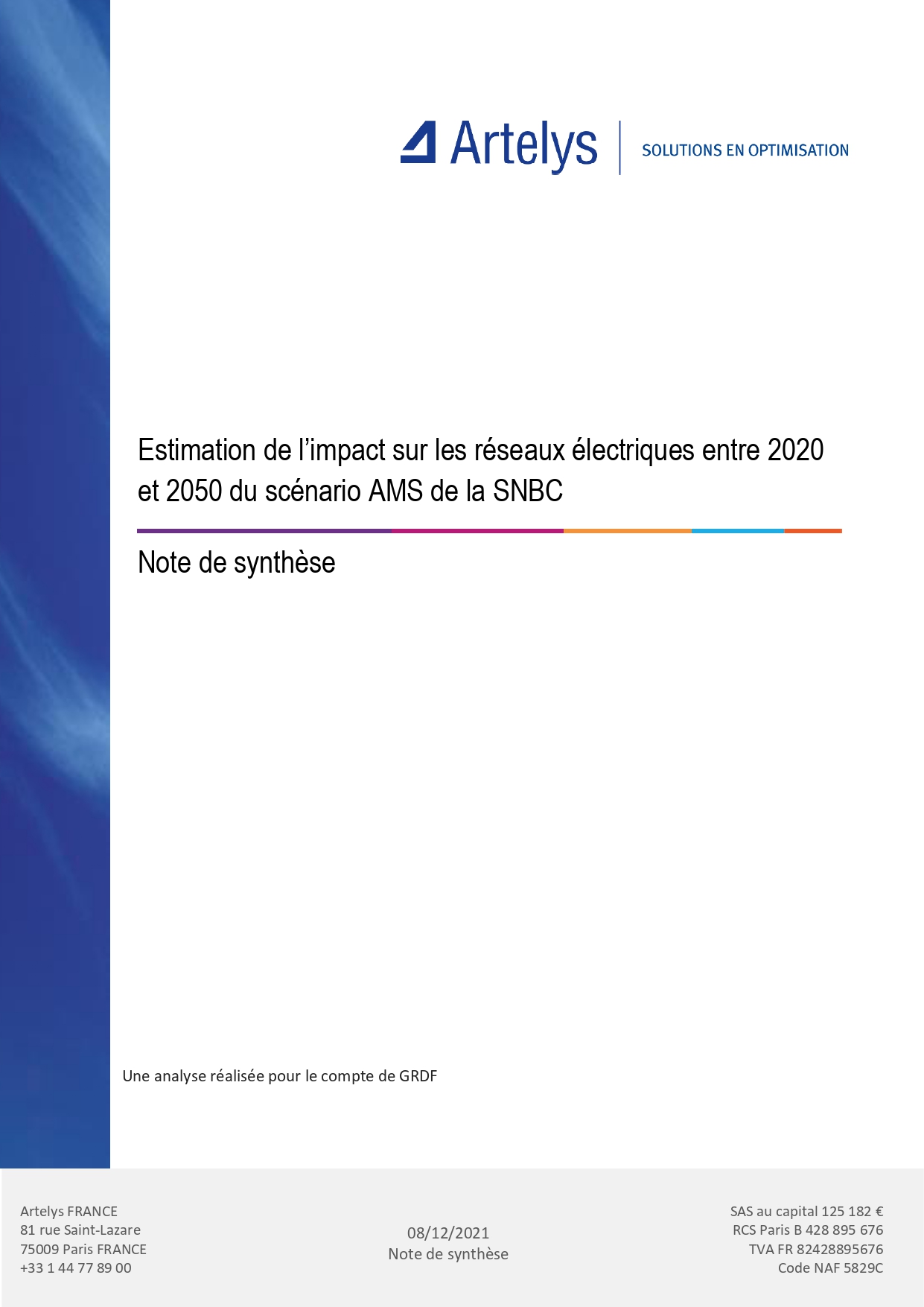
— Study on the impact of the National Low Carbon Strategy on electricity system between 2020 and 2050
GRDF, the main gas distribution company in France, has selected Artelys to conduct a study in order to evaluate the impacts of the transformation foreseen by the French "National Low Carbon Strategy" for 2050 on the distribution and transmission electricity grids. Indeed, flows on transmission and distribution grids are meant to change with the deployment of decentralized renewable energies and the massive electrification of consumption in every economic sector (residential heat, industrial processes and transport). The analysis carried out by Artelys relies on a detailed reconstruction of electrical load curves for 2050, an assessment of the evolution of the local peak demand between 2020 and 2050 and the evaluation of the effect of this evolution on the reinforcement needs on distribution grids. For the transmission grid, an optimisation of France generation, flexibilities and inter-regional network is performed to assess the needs for reinforcements. The effect of hybrid systems combining multiple energy vectors (such as hybrid heat pump), which could limit the increase of peak load, is also assessed in the study.
Client : GRDF
Date : December 2021
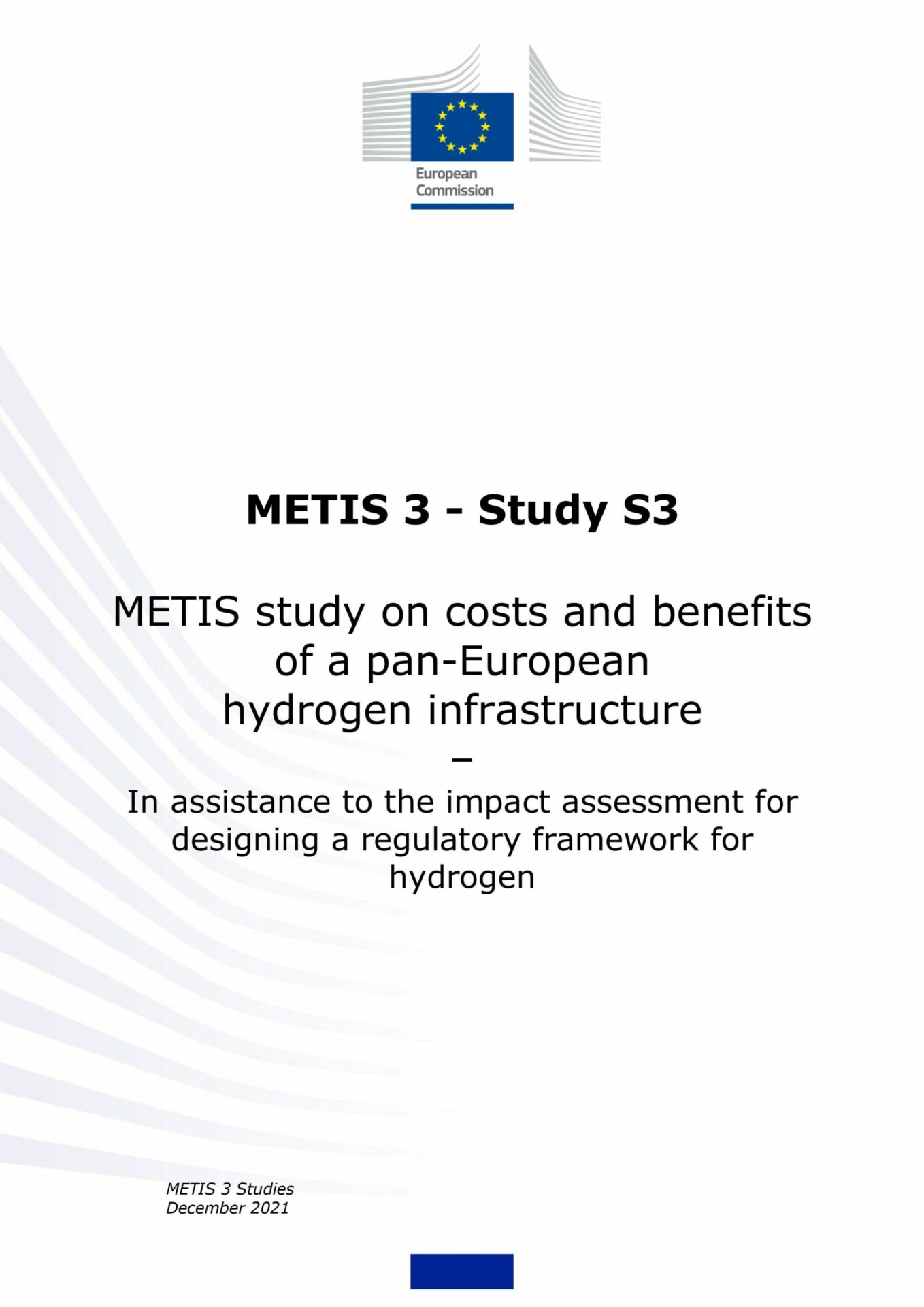
— METIS study on costs and benefits of a pan-European hydrogen infrastructure
In the context of the revision of the European Gas Market Directive (2009/73/EC), the European Commission selected Artelys to assist in the preparation of the Impact Assessment of potential policy measures to create a regulatory framework for hydrogen. In collaboration with Guidehouse, who carried out the qualitative analysis of these measures, this report presents the methodology and results of the cost-benefit analysis of the creation of a pan-European hydrogen transport infrastructure. The analysis was carried out with METIS, a multi-energy model of Europe covering gas, electricity, and hydrogen (based on the Artelys Crystal Super Grid platform Artelys Crystal Super Grid platform). It is based on scenarios representing different framework conditions that impact the implementation of a European hydrogen network. These scenarios are compared on the basis of cost criteria, production, transport and storage infrastructure requirements, and environmental criteria. Sensitivity analyses explore additional assumptions on, for example, the mode of hydrogen production via electrolysers or the costs of the transport infrastructure.
Client : European Commission
Date : December 2021

— Assistance to assessing options improving market conditions for bio-methane and gas market rules
This report presents the work carried out by Artelys, Trinomics, Fraunhofer IEE and the JRC on behalf of the European Commission as part of the Impact Assessment of the proposals envisaged for the revision of the EU Gas Markets Directive (2009/73/EC) in the year 2021. The report presents the problems perceived by the European Commission in the current directive and the shortcomings that could arise in the face of a rapidly changing energy system. The study examines various measures proposed by the EC to address these inefficiencies, inter alia by using the European energy system modelling tool METIS. The analysis of the measures is divided into five main themes, namely "Integration of renewable and low-carbon gases into the market", "Reforms of the European gas interconnection entry/exit tariff system", "Regulatory environment for gas quality (including the injection of a portion of hydrogen into a gas network)", "Regulatory environment for LNG terminals" and "Network planning in view of energy system integration". The report describes in detail the main economic, environmental and social impacts of the individual policy measures.
Client : European Commission
Partners : Trinomics, Fraunhofer IEE, Joint Research Center
Date : December 2021
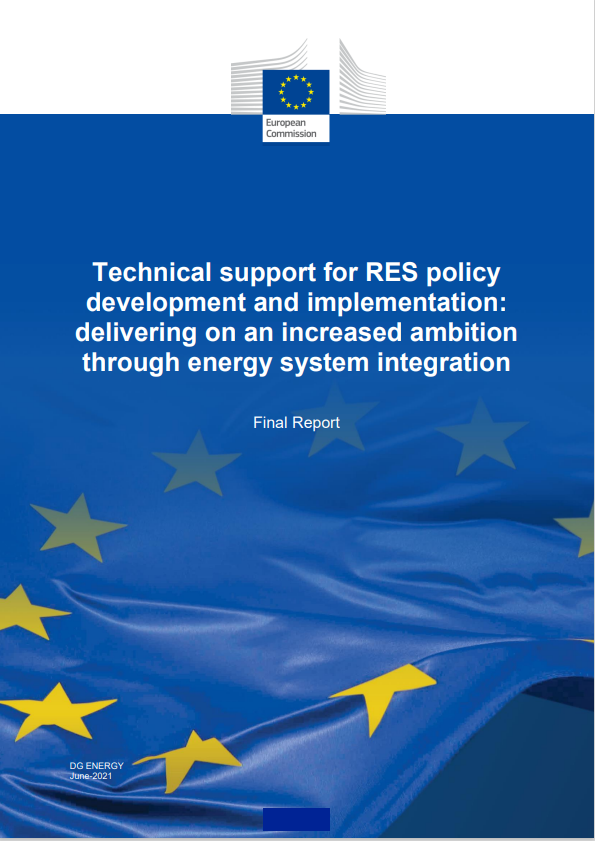
— Technical support for RES policy development and implementation
To support their efforts in the context of the revision of the Renewable Energy Directive, the European Commission has selected Artelys and its partners Trinomics (leader of the consortium), LBST and E3M to work on the design and assessment of policy options aiming at increasing the deployment of renewable energy sources. The work carried out by Artelys has been multi-faceted, as we have tackled topics such as offshore wind, power purchase agreements and regional cooperation amongst others. The quantification of the impacts of policy measures has been powered by the METIS model, a tool relying on the Artelys Crystal Super Grid platform, developed by Artelys on behalf of the European Commission.
Client : European Commission
Partners : Trinomics, LBST, E3M
Date : October 2021
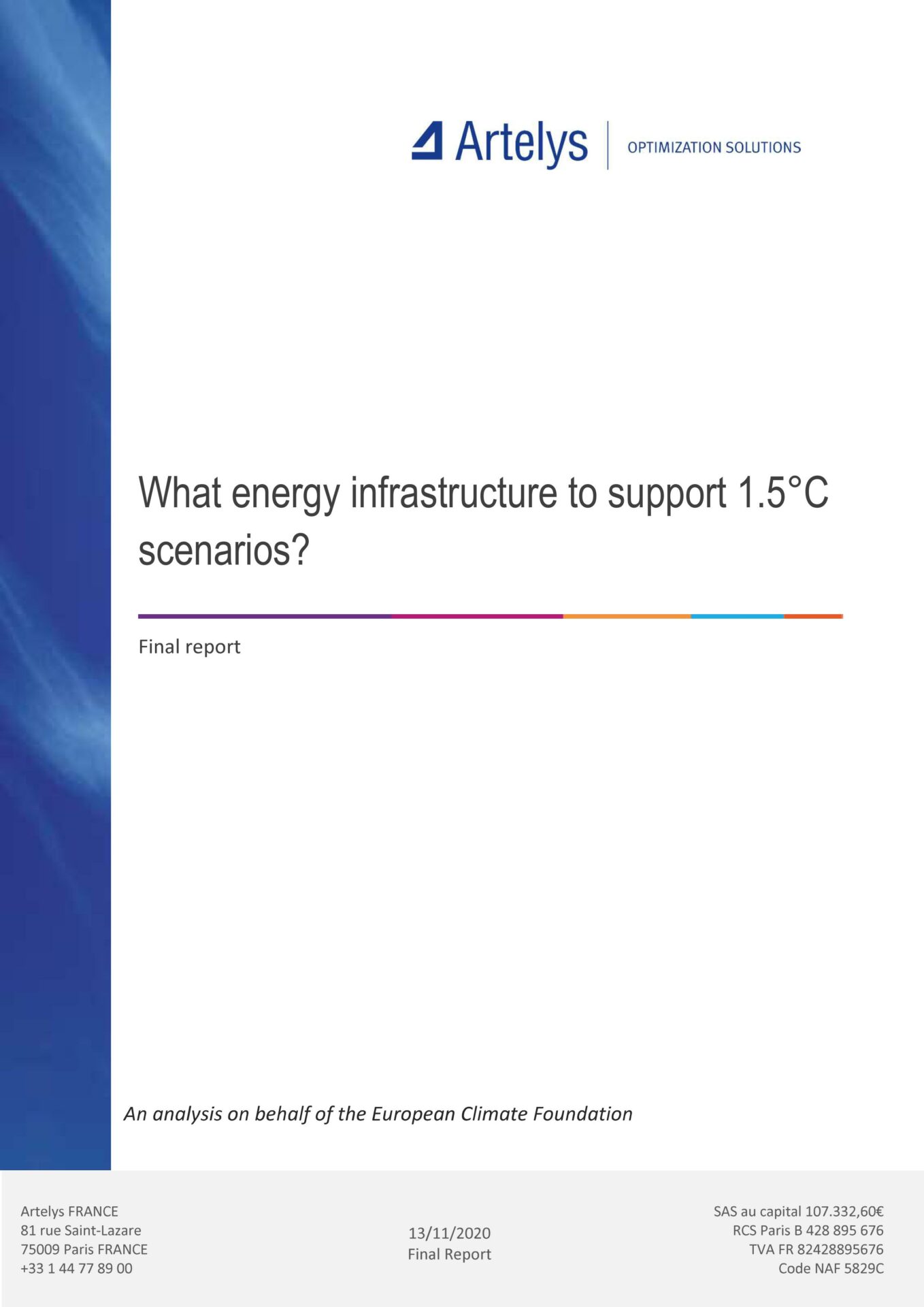
— What energy infrastructure to support 1.5°C scenarios?
The objective of the study Artelys has carried out on behalf of the European Climate Foundation is to analyse the need for energy infrastructure in various climate neutral scenarios at the 2050 time horizon. The key findings are that important needs for cross-border electricity infrastructure appear in all the considered scenarios, while the need for cross-border hydrogen infrastructure strongly depends on the geographic allocation of renewable energy sources across Europe. Finally, the study shows that security of supply in Europe can be maintained without investing in additional methane projects.
Client : European Climate Foundation
Date : November 2020
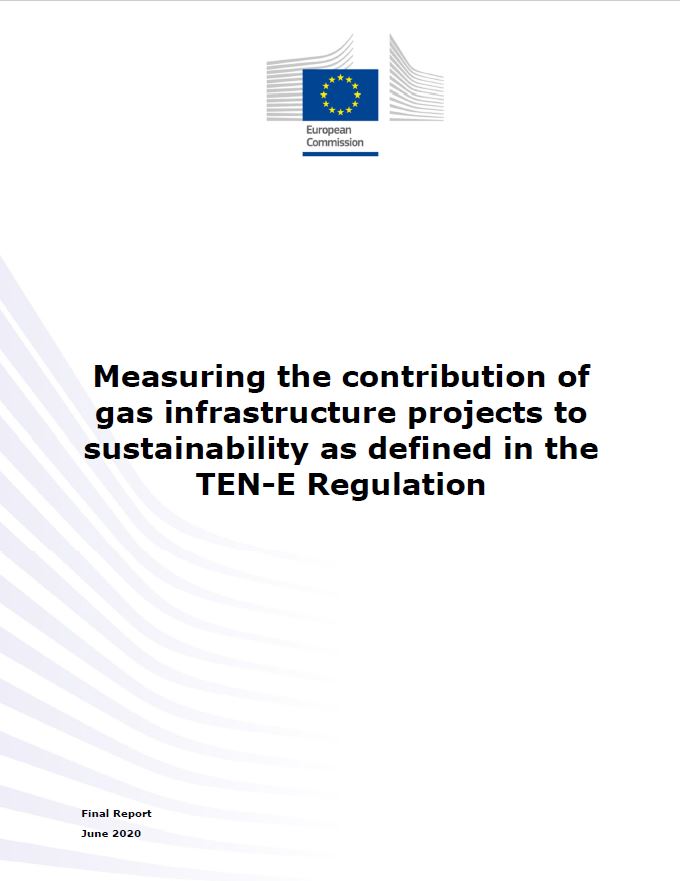
— Measuring the contribution of gas infrastructure projects to sustainability as defined in the TEN-E Regulation
The European Commission has selected Artelys and Trinomics to analyse the methodology used by ENTSOG to assess the sustainability impacts of gas infrastructure projects, and to provide recommendations on improvements. In its current project-specific cost-benefit analysis methodology, ENTSOG evaluates the environmental impacts of gas infrastructure projects to support the selection of projects of common interest. Artelys has first identified the strengths and weaknesses of the current approach used by ENTSOG. In particular, Artelys has identified that while the objective of the current approach is relatively clear, the way fuel switches are computed is too simplistic and does not capture all the interlinkages between vectors (electricity and gas) or the cross-border effects of projects, mostly due to limitations of ENTSOG’s current modelling capabilities. New approaches have been proposed by Artelys and discussed with the EC and ENTSOG. Tests have been performed to determine how the new indicators could be implemented in the next TYNDP cycle, which will lead to the establishment of the 5th PCI list. The methodology we have proposed also aims at capturing sustainability effects linked to potential methane leakages and non-CO2 emissions (including GHG and non-GHG emissions).
Client : European Commission
Partner : Trinomics
Date : October 2020
— The role of cogeneration in a climate-neutral economy at the 2050 horizon
COGEN Europe, the European association for the promotion of cogeneration, has selected Artelys to study the role of combined heat and power technologies (CHP) in the context of a 2050 climate neutral European economy. Combined heat and power technologies could indeed prove to be a key piece in the portfolio of solutions to achieve the ambitious climate objectives of the European Commission. For that purpose, the analysis carried out by Artelys has been structured into two parts: a first analysis where solutions including CHPs were compared to alternative solutions on seven use cases, and a second analysis focusing on system-level benefits where the deployment of CHP has been optimised in a 2050 climate-neutral scenario. The analysis shows that CHP can be a key technology at both user- and system-levels, and could be deployed economically in a large number of sectors.
Client : COGEN Europe
Date : October 2020
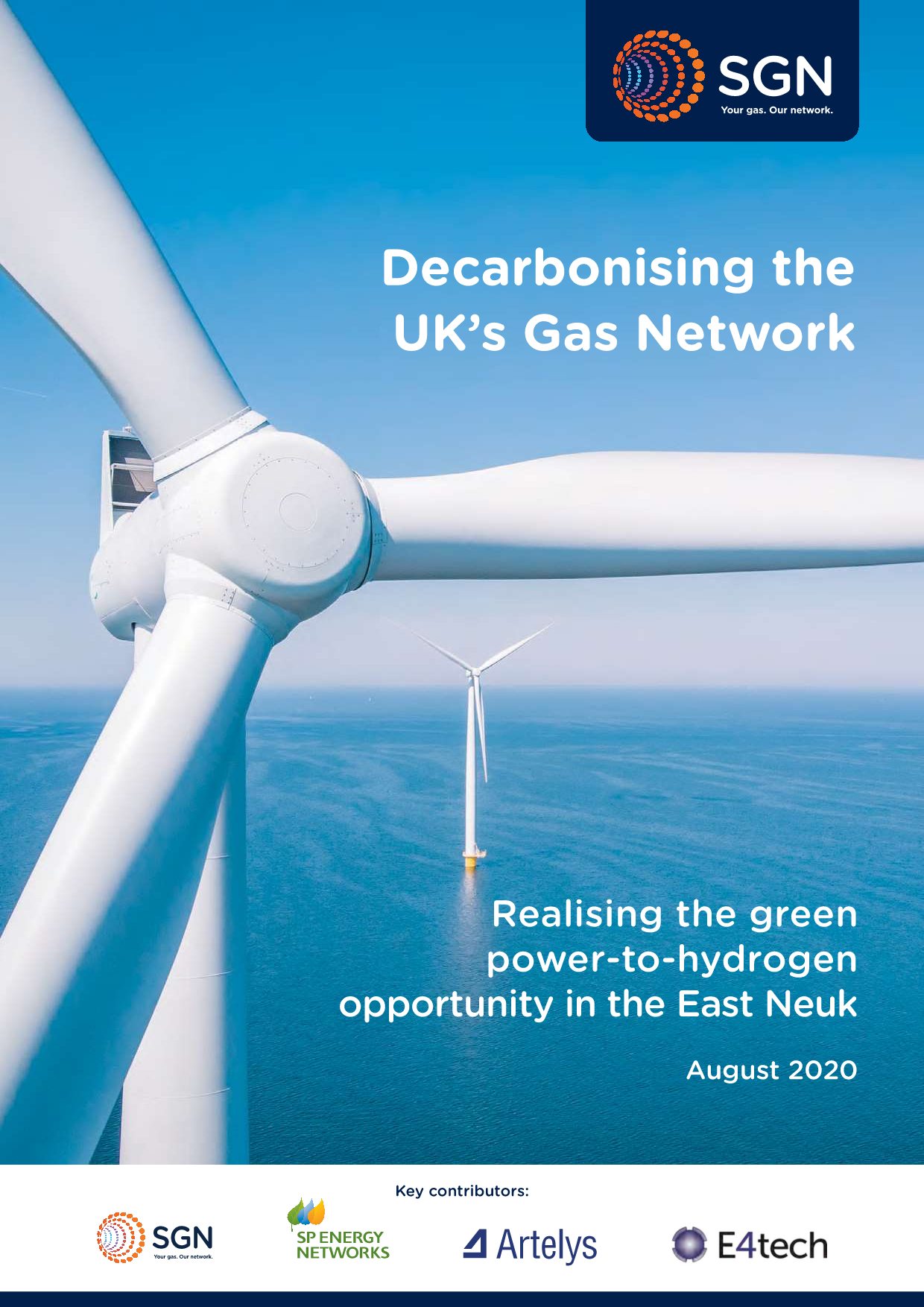
— Decarbonising the UK's Gas Network
SGN and SPEN, two of the main gas and electricity distributors in Scotland, have commissioned Artelys and E4Tech to study the potential of power-to-hydrogen in the East Neuk region of Scotland. Artelys has undertaken an assessment of the availability and quality of surpluses of carbon-free electricity in the East Neuk region and in Great-Britain, using a European-wide electricity market model powered by Artelys Crystal Super Grid. The East Neuk region was described in more detail so as to properly represent the constraints on electricity exchanges with the rest of GB. The assessment is based on seven scenarios of development of grid- or RES-connected electrolysis and hydrogen end-uses. The hydrogen applications that have been considered include injection of hydrogen into the gas network, hydrogen mobility, and creation of a hydrogen grid by repurposing a part of the gas network of the area. In the last case, natural gas is replaced by hydrogen in all applications (heating, industries, etc.). Finally, recommendations on policy and regulatory initiatives on the electricity and gas sides have been issued based on our findings.
Client : SGN and SPEN
Partner : E4Tech
Date : August 2020
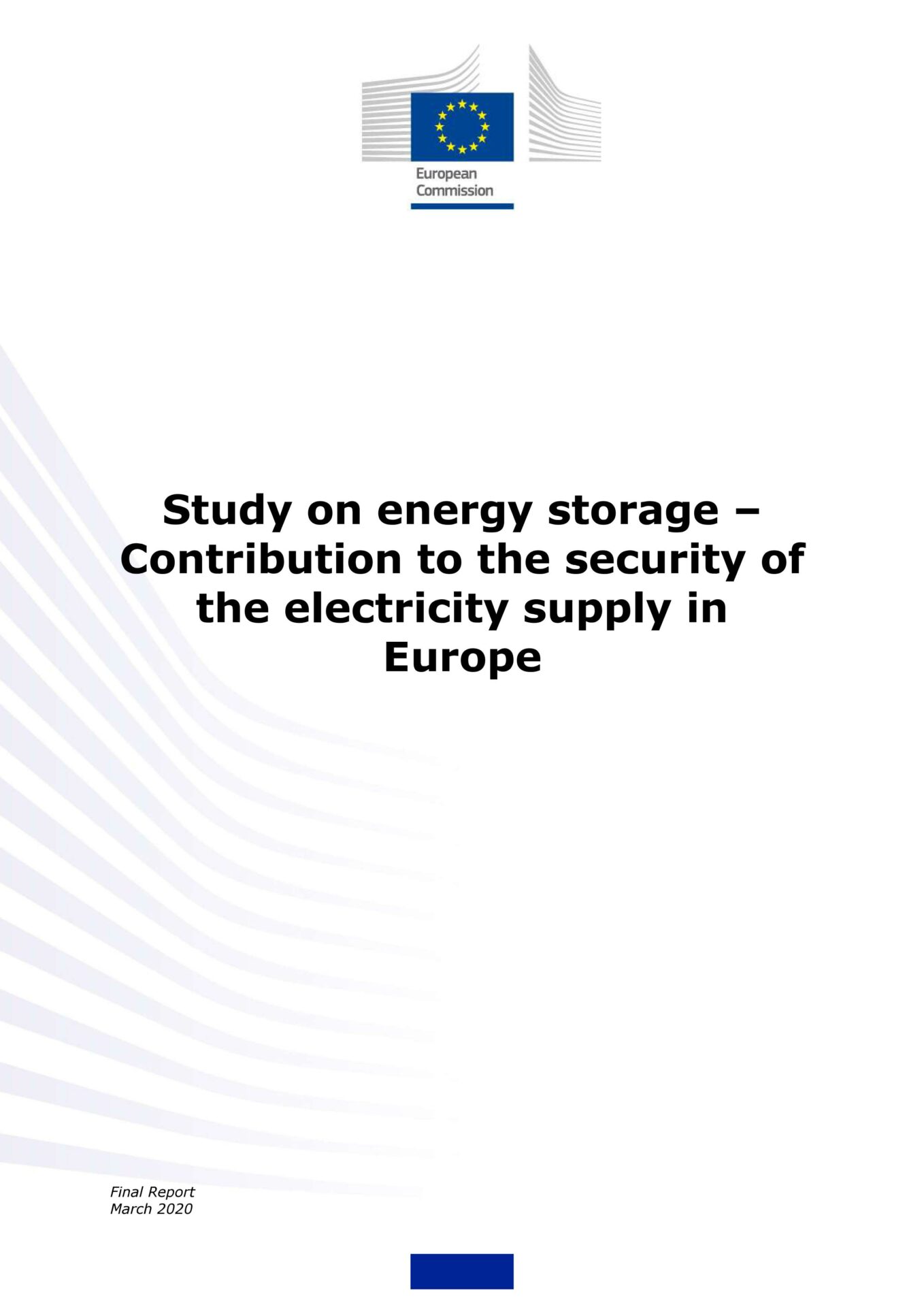
— Contribution of energy storage to the security of the electricity supply in Europe
This study, carried out with our partners Enerdata and Trinomics, has three objectives: presenting the current state of play of storage technologies (deployment in Member States and key characteristics), identifying the need for various types of flexibility solutions at the 2030 and 2050 horizons, and finally examining the regulatory conditions that should be put in place to enable the market to deliver the appropriate level of energy storage technologies. Artelys’ key contribution is the modelling of the pathways designed by the European Commission in the context of its Long-Term Strategy, and the optimisation of the deployment of flexibility solutions in these scenarios (interconnections, batteries, pumped-hydro storage, power-to-gas, etc.) in various configurations (e.g. several levels of demand-side flexibility). We have then analysed the contribution of each technology in the provision of flexibility on several time-scales, from the daily level to the seasonal level. The key finding is that several technologies have been found to compete to provide short- and medium-term flexibility (e.g. EVs, batteries, pumped-hydro storage, etc.), and that electrolysers will be key to provide seasonal flexibility services and the required levels of decarbonization in the industry, mobility and heating sectors.
Client : Commission européenne
Date : May 2020
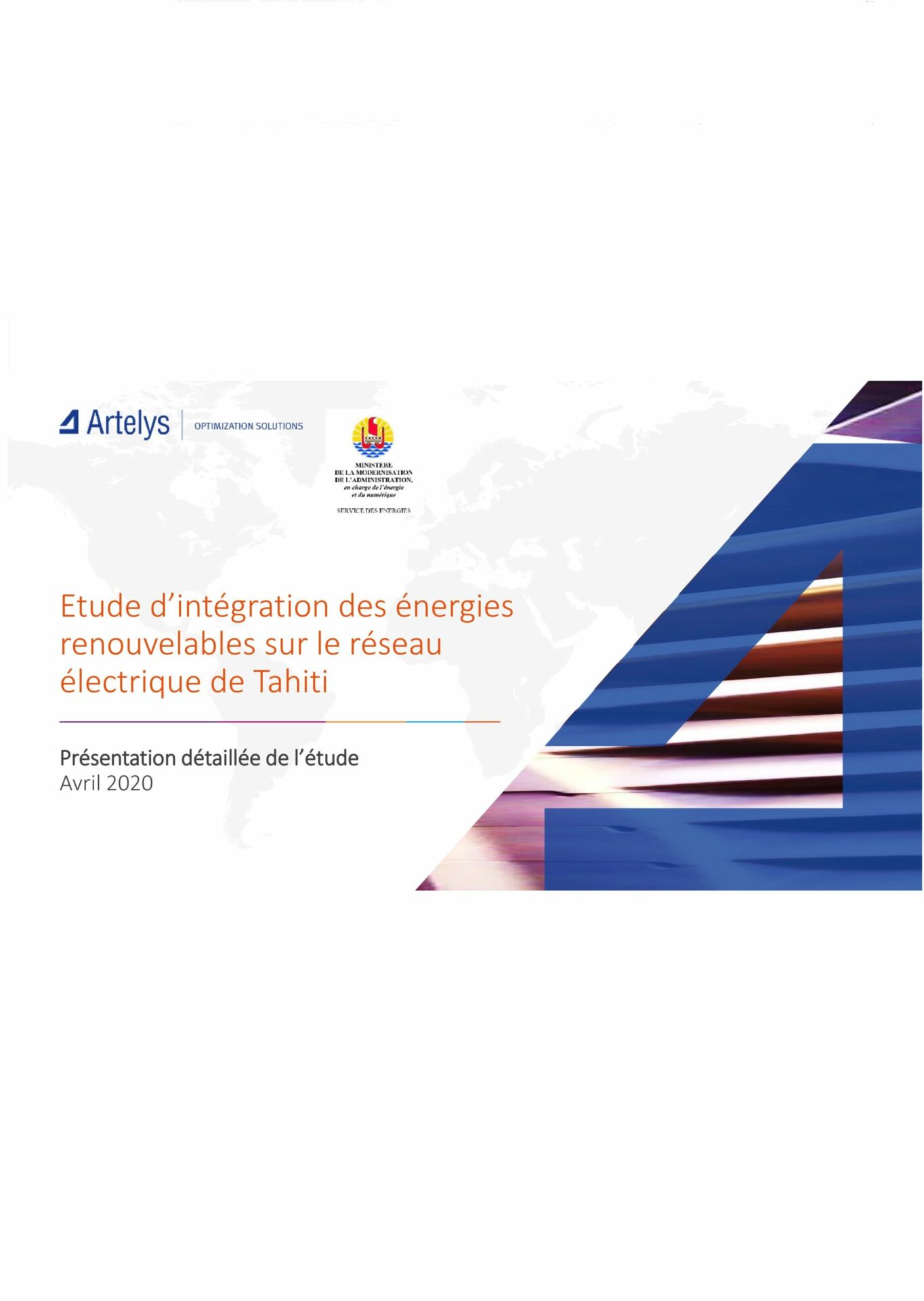
— Study on the integration of renewable energies into the electricity system of Tahiti
In the context of the energetic transition of Polynesia, Tahiti has set an ambitious target of reaching a 75% share of renewable production assets penetration in its electricity system by 2030. Tahiti relies on its hydro and solar potentials to reach this goal, while at the same time improving the security of supply of the island. It is in this context that Artelys has conducted a study for the “Energy services” (Services des Energies) of Tahiti to model the electricity system of the island in 2030 to assess the impacts of solar power plants combined with battery storage on the network. The analysis has adopted a sub-hourly time resolution combined with a very accurate description of the electricity system and the specificities related to insular systems.
Client : Tahiti Energy services
Date : April 2020
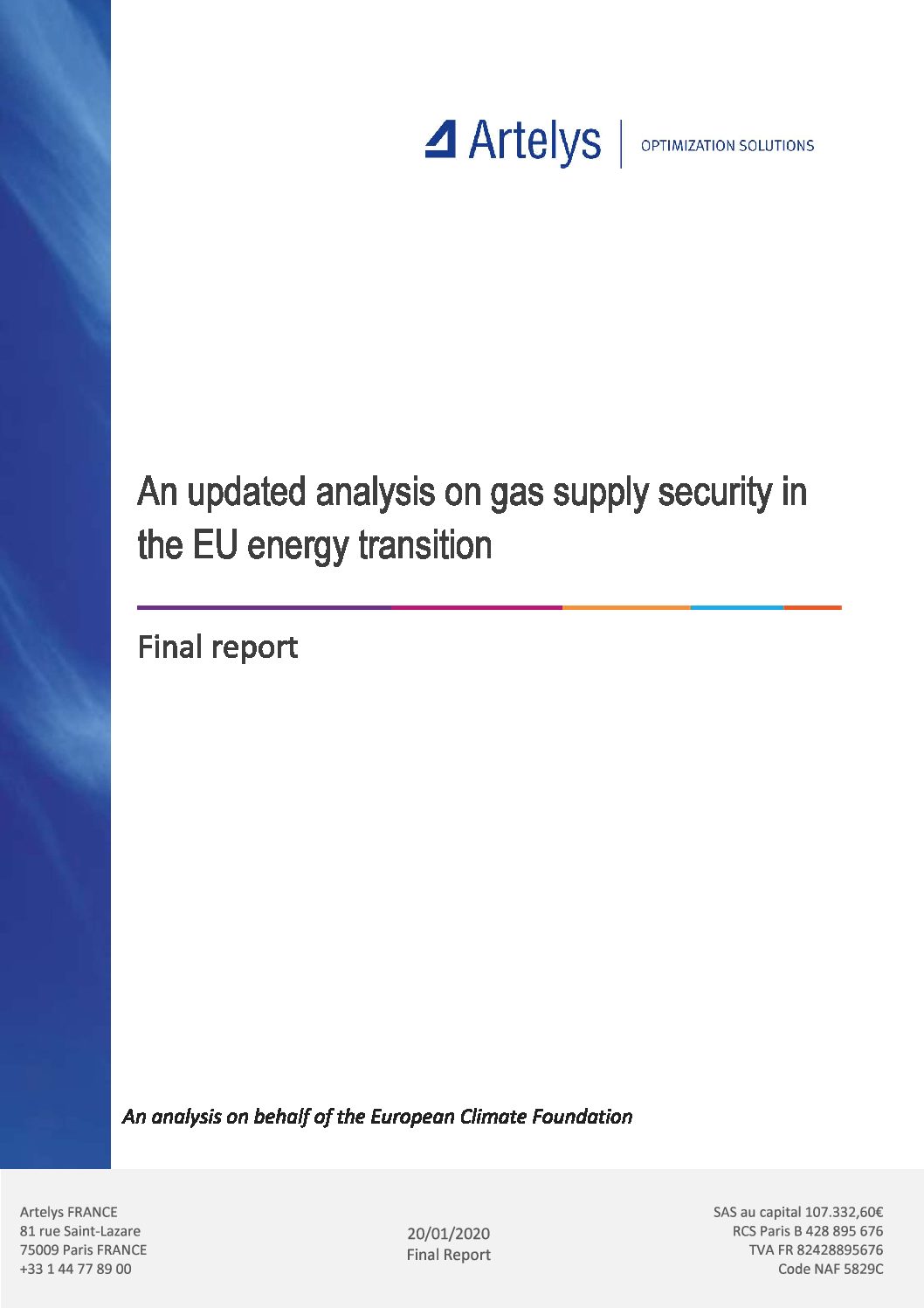
— An updated analysis on gas supply security in the EU energy transition
The objective of the study Artelys has carried out on behalf of the European Climate Foundation is to provide an updated analysis of the need for additional gas infrastructure in the European Union from a security of supply point of view at the 2030 horizon. The key finding is that the European Union gas infrastructure is already resilient to a number of disruptions. Investing in the gas projects proposed in the 4th PCI list would therefore likely result in an oversized gas network, with billions of EUR in potential stranded assets.
Client : European Climate Foundation
Date : January 2020
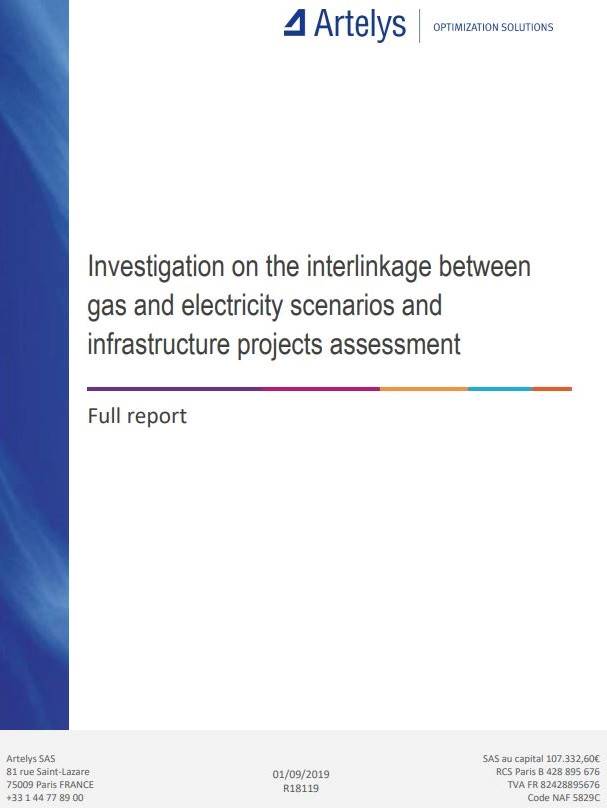
— Investigation on the interlinkage between gas and electricity scenarios and infrastructure projects assessment
The objective of the study Artelys has carried out was to provide recommendations to the ENTSOs on the way to account for interlinkages between gas and electricity during the project assessment phase. After a thorough analysis of the interlinkages between the gas and electricity sectors, and a discussion of the role of the scenario building phase, three key sources of interlinkages have been identified and studied: gas-to-power, power-to-gas and hybrid consumption technologies (e.g. hybrid heat pumps). The recommendations provided by Artelys include criteria related to each of these interlinkages.
Client : ENTSOG & ENTSO-E
Date : November 2019
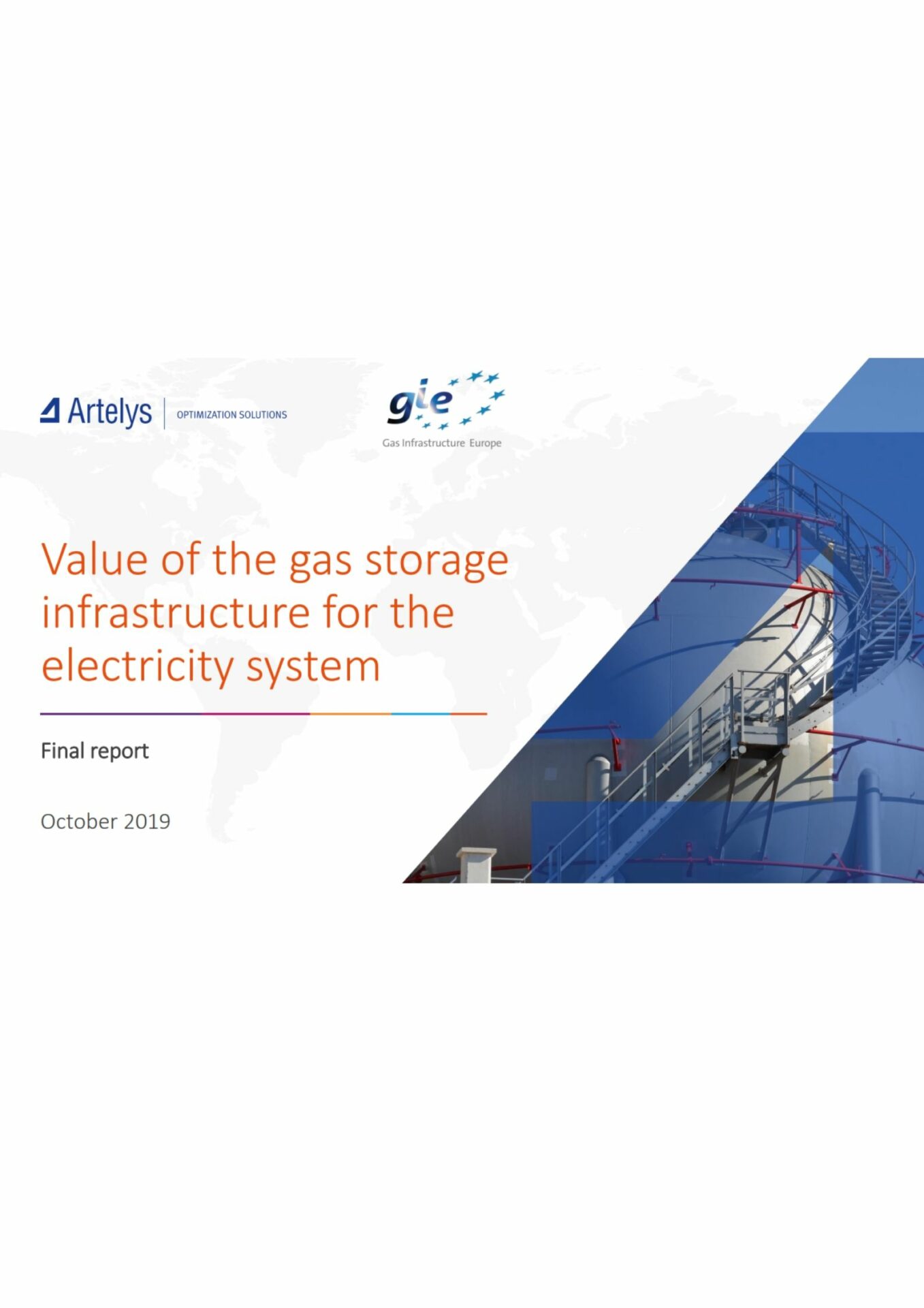
— Value of the gas storage infrastructure for the electricity system
In this study, Artelys has carried out a cross-sectoral evaluation of the capacity value of the European gas storage on behalf of Gas Infrastructure Europe (GIE). A joint model of the European gas and electricity systems in 2030 has been used to undertake this analysis, based on a scenario of the ENTSOs (TYNDP 2018 Sustainable Transition). The objective of the analysis was to assess the structural benefits of gas storage assets for the electricity security of supply. To do so, different scenarios have been simulated, with gas storage reduction ranging from 10% to 30% of their forecast capacity (in available volume, injection and withdrawal). The reduction of gas storage induces additional operational and investments costs in order to enable the system to meet the electricity and gas demands. A reduction of 30% of the European gas storage capacity has been found to induce the need for investments in more than 20 GW of flexible power plants. Finally, gas storage has been found to have a stabilizing effect on electricity prices.
Client : GIE
Date : October 2019
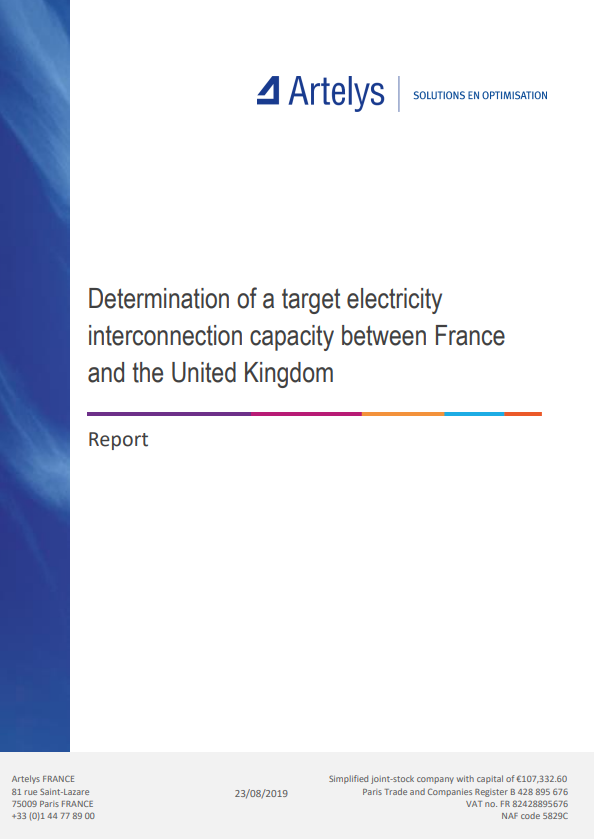
— Determination of a target electricity interconnection capacity between France and the United Kingdom
At present, several interconnection projects between France and Great Britain propose to bring out the synergies and complementarities between the British and continental European power systems. This study, commissioned by the Commission de Régulation de l’Energie (French NRA), provides quantitative information on the value of a new interconnection project from a public interest point of view. Several scenarios have been established, with the aim of covering a set of possible changes in the European energy system that are consistent and contrasted. In addition, many sensitivity analyses have been carried out to evaluate the impact of key assumptions such as deployment of renewable energies, evolution of nuclear capacities, level of interconnection, etc. Considered over its entire lifetime, a new interconnection project between France and the United Kingdom does not appear to be relevant in any of the scenarios. The analysis revealed that two conditions are necessary to ensure the profitability of 1GW of additional capacity: strong surpluses in one of the two countries (e.g. RES or nuclear) and high production costs for the gas and coal power plants.
Client : French Regulatory Commission of Energy (CRE)
Date : July 2019
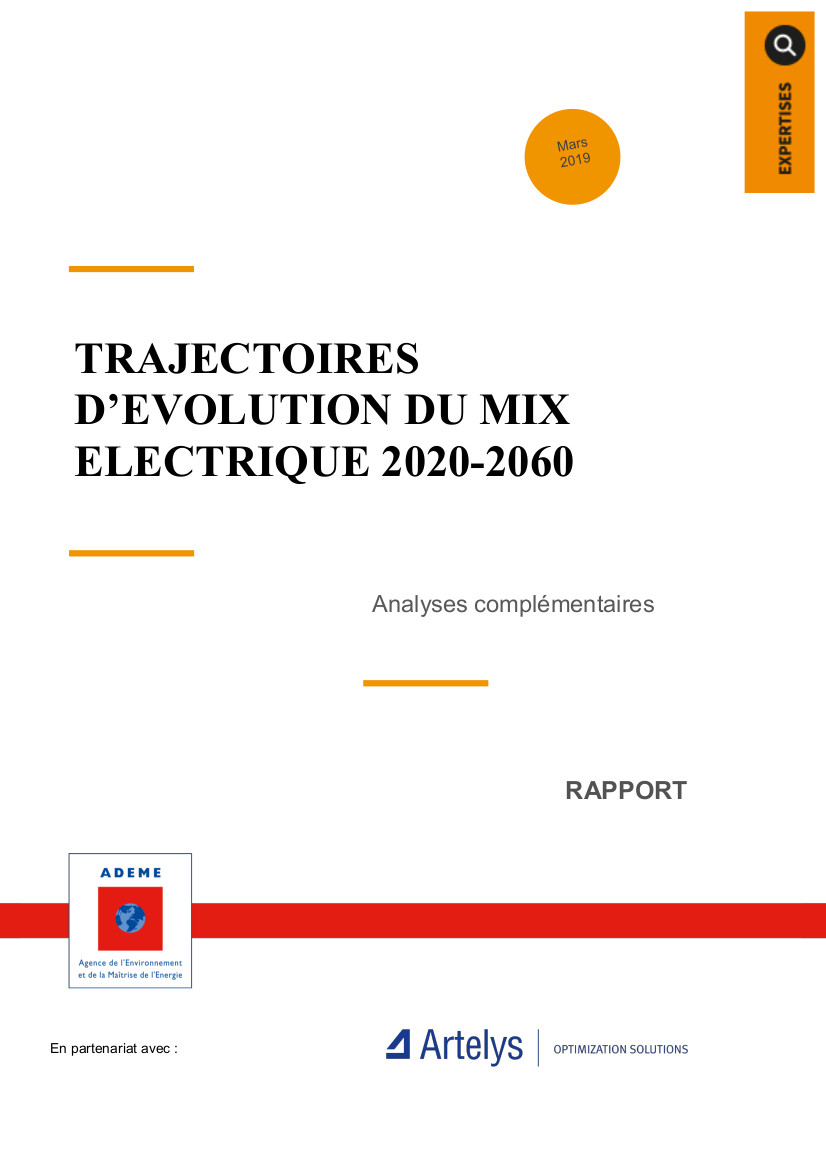
— Evolutions of the French electricity mix between 2020 and 2060, complementary analyses
This document is the complementary report of the study "Evolutions of the French electricity mix between 2020 and 2060". It provides additional analyses on three major issues related to the development of a significant share of renewable in the French electricity mix. These new elements bring new light to the summary published in December 2018, which presented the first conclusions of the study on the role of the renewables and nuclear in the long term, the evolution of market prices and costs for the system, and the potential for decarbonation and export.
Client : Ademe
Date : April 2019

— Optimal flexibility portfolio for a high-RES 2050 scenario
To meet the Paris Agreement objectives, renewable and carbon-neutral power generation will play a major role. This study assesses the cost-optimal portfolio of flexibility solutions to allow the feasibility of a 100% decarbonized power system in 2050, considering the additional electricity demand from direct and indirect electrification. Given the constraint of maintaining the supply-demand equilibrium at different time scales, the results highlight and quantify the complementarity between flexible power production, cross-border flows, short-term storage (stationary batteries, electric vehicles, residential thermal storage, etc.) and medium / long term storage (hydraulic storage, storage in the form of synthesis gas). A specific focus was set on the potential synergies between gas and electricity, notably through the hybridization of residential heat supply. Gas-fired back-up heaters for heat pumps are found to be profitable as they limit the electricity consumption in the event of load peaks and very high electricity prices.
Client : European Commission
Date : December 2018
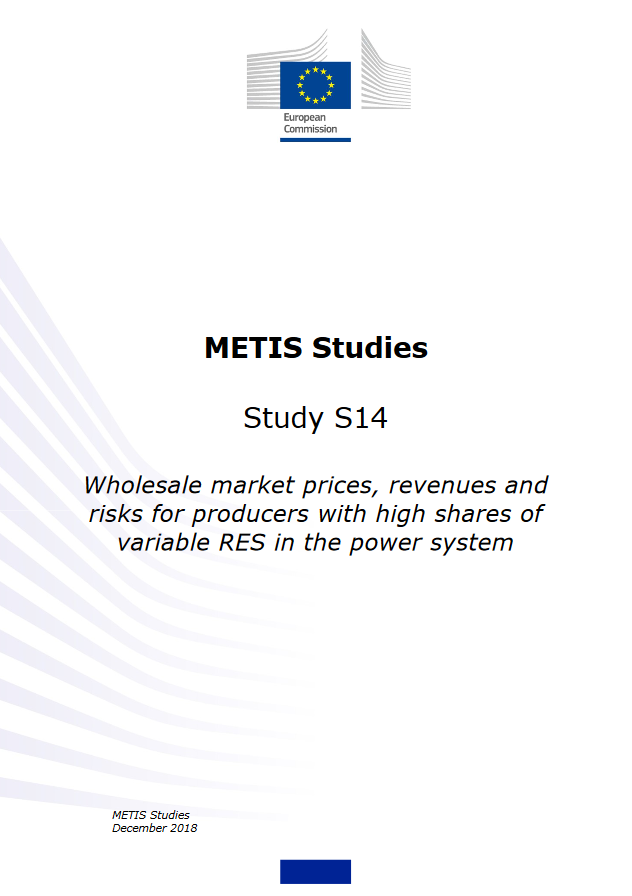
— Wholesale market prices, revenues and risks for producers with high shares of variable RES in the power system
In power systems with a high RES penetration rate, a significant share of electricity generation is weather-dependent. This uncertainty of RES generation translates into an increased risk of price volatility that may negatively impact all players: conventional and renewable power producers, storage operators, consumers, etc. This study analyses the evolution of price patterns in a carbon-free electricity system. It further quantifies the profitability risks due to weather variations, as well as unforeseen changes in the structure of the power supply fleet, and suggests adequate hedging strategies. The analysis shows that wholesale market prices are increasingly often set by flexible consumers (such as electrolysers). In terms of revenue risks, solar power is particularly vulnerable to a cannibalisation effect, as non-dispatchable PV power generation is concentrated in midday hours and thus causes an overproportionate revenue reduction. As the generation profile of wind turbines is more evenly distributed in time, and as storage is essentially sensitive to arbitrage opportunities, the cannibalisation effect is less pronounced for these technologies. Flexible consumers, such as electrolysers, take advantage of reduced prices and thus represent a hedging option for power producers.
Client : European Commission
Date : December 2018
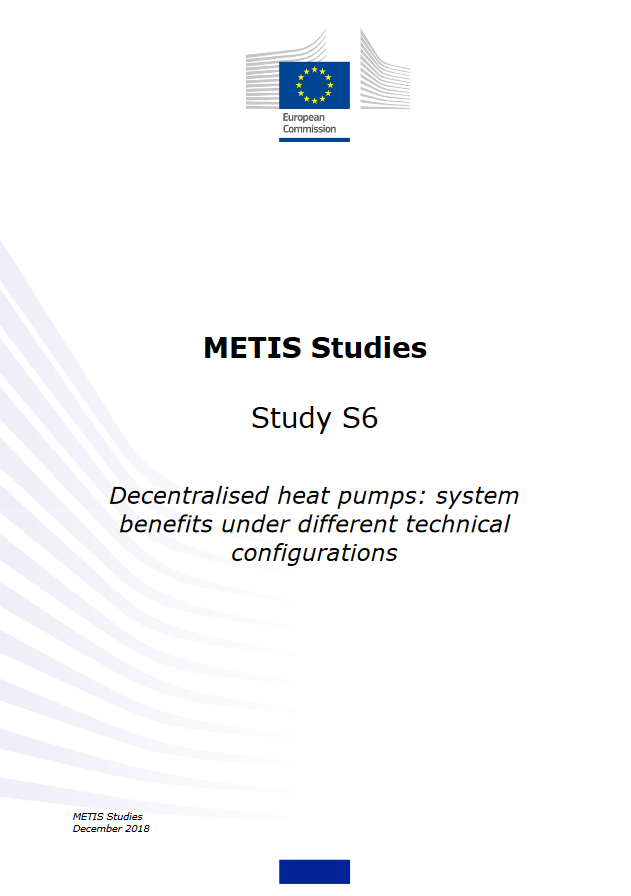
— Decentralised heat pumps: system benefits under different technical configurations
Space heating currently represents 70% of European households and commercial buildings’ energy consumption. In a context of an increasing penetration of renewable energy sources in the European power mix, using electricity to generate heat could play an important role in the decarbonisation of these sectors. This study reveals that heat pumps represent an efficient way to decrease the CO2 emissions of the European heating sector. However, in the REF16-2030 scenario, the profitability of heat pumps from a system point of view is more than uncertain. Indeed, earnings from the energy consumption reduction are not sufficient to offset the significant investment costs related to the installation of heat pumps and the need for additional peak power generation to meet the increased load peaks. The dedicated models created with METIS emphasize the benefits of the flexibility offered by heat pumps with thermal storage, which allows lower power generation costs, and higher integration of renewable energy sources. Ultimately, equipping heat pumps with gas back-up heaters appears to be a promising compromise to curb the potential increase in electricity demand peaks during the coldest days. Consequently, fewer investments in additional peak power units are required, but at the expense of a slight decrease in the heat pumps’ CO2 emission reduction potential.
Client : European Commission
Date : December 2018
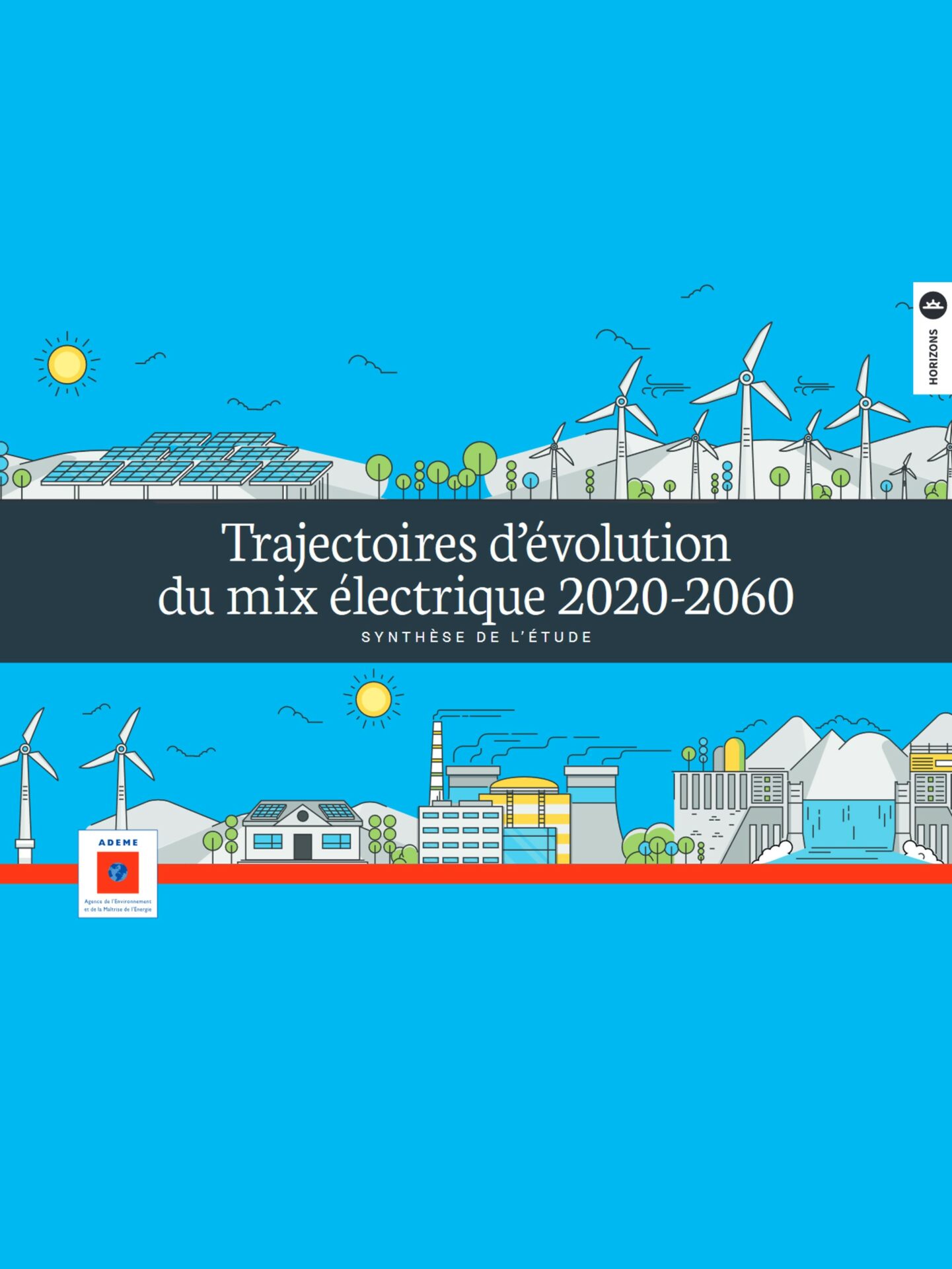
— Evolutions of the French electricity mix between 2020 and 2060
This study presents seven contrasted evolutions of the French electricity mix, interconnected with neighbouring electricity systems. The electricity mixes are obtained by carrying out an economic optimisation of the trajectory of investments with Artelys Crystal Super Grid. This tool jointly optimises the evolution of the installed capacities between 2020 and 2060, and the detailed operational management of the European power system (hourly time-steps for seven climatic years). Using this approach allows us to carefully assess the cost associated with the variability of solar and wind power.
Client : Ademe
Date : December 2018
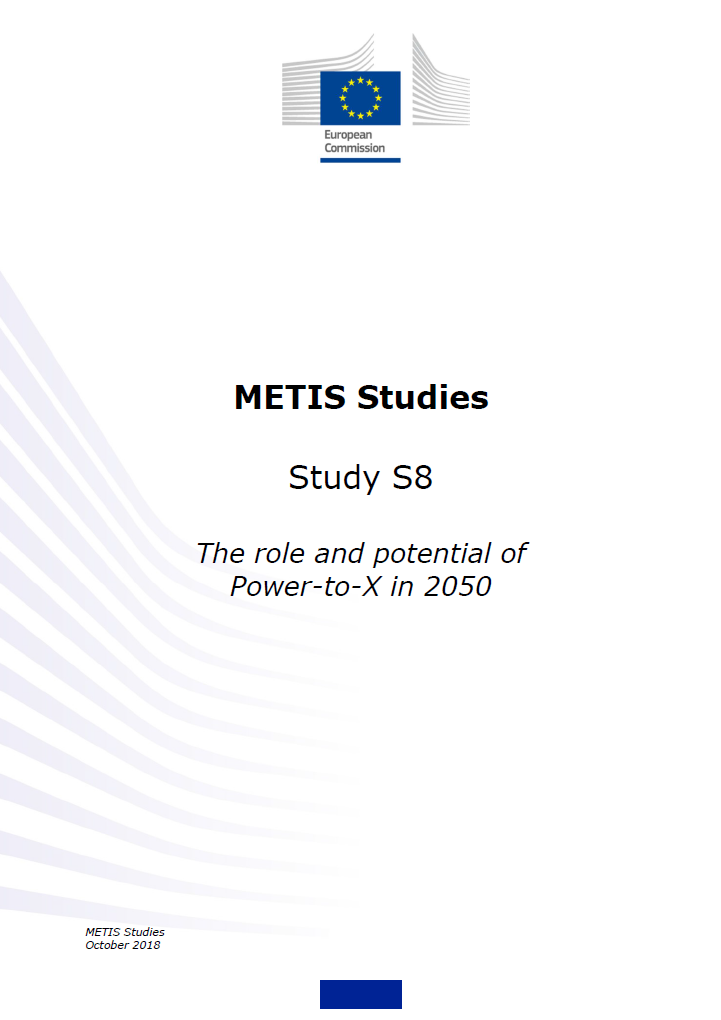
— The role and potential of power-to-X in 2050
In order to facilitate the decarbonization of transport, buildings and industry, the production of synthetic gases and hydrocarbons from low-carbon electricity is one option to be considered. This study assesses the economic relevance and competitiveness of power-to-gas and power-to-liquids technologies compared to other alternatives, such as biomethane, biofuel or H2-based fuels produced by steam-methane-reforming equipped with CCS. The analysis reveals that the competitiveness of these (capital intensive) power-to-X technologies mainly depends on electricity price profiles: low electricity prices during large periods (at least 3,000 hours per year) represent a prerequisite to enable the development of relevant business models.
Client : European Commission
Date : October 2018
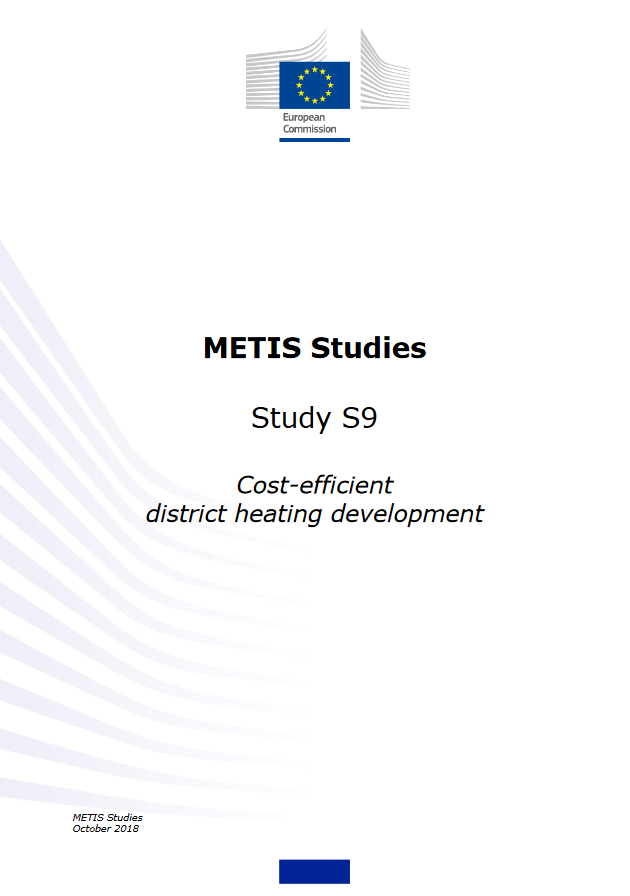
— Cost-efficient district heating development
District heating networks represent a major lever for the reduction of energy demand and related GHG emissions, as they facilitate the integration of renewable energy sources, highly efficient cogeneration plants and recovery of waste heat. In 2012, they contributed to around 9% of the European heat demand.
In order to get a better grasp of the role of district heating networks in the future EU energy mix and their potential interaction with the power and gas systems, the METIS tool was expanded by a dedicated district heating module. This module allows to dimension and simulate district heating networks, relying on an hourly temporal granularity. In the case of the METIS Study S9, representative archetypes of district heating networks are conceived based on the outcome of a comprehensive literature review gathering existing and upcoming district heating projects. For a given 2030 scenario, the number of heat networks per archetype is determined for each EU Member State, allowing to quantify the impact of EU energy policies in terms of energy consumption, GHG emissions and production costs. Ultimately, the new functionalities are demonstrated via a sensitivity assessment, analysing the impact of an increased share of heat pumps in the 2030 district heating network mix.
Client : European Commission
Date : October 2018
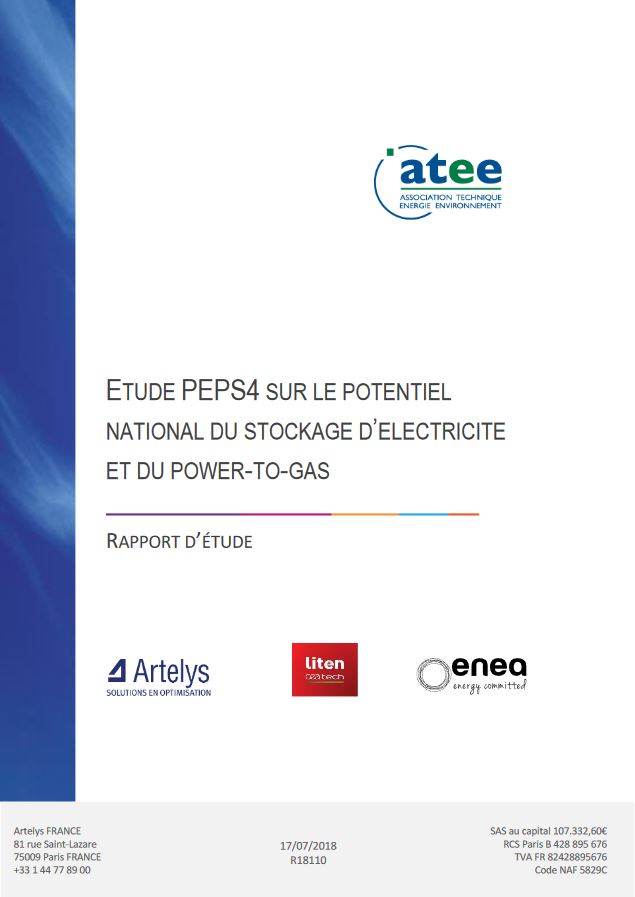
— PEPS4: Cost-benefit analysis of electricity storage and power-to-gas at the 2035 horizon in France
In this study carried out in partnership with CEA-Liten and ENEA Consulting, Artelys has analysed the costs and benefits of investing in storage and power-to-gas assets, based on 11 business cases. Different settings have been designed for both power-to-gas (power-to-hydrogen for industrial direct use, for mobility, injection in the gas network, etc.) and electricity storage (centralized storage, storage for UPS, storage for self-consumption, management of electric vehicles load, storage in non-interconnected areas or in high growth areas, etc.). Different services (supply-demand equilibrium, provision of ancillary services, security of supply) have been assessed and analysed. The value of the potential new investments has been estimated in 4 scenarios of the evolution of the French power mix in 2035 based on RTE’s 2017 Bilan Prévisionnel, and have been compared to the projected costs for the different technologies. Finally, for profitable business cases, we have estimated the corresponding market depth.
Clients : Ademe, ATEE
Partners : CEA-Liten, ENEA Consulting
Date : July 2018
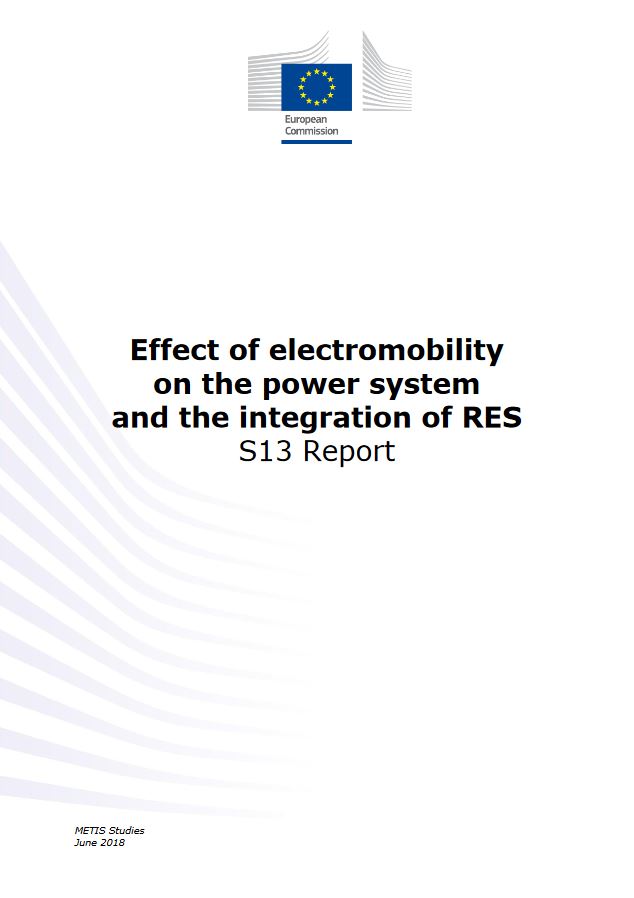
— Effect of electromobility on the power system and the integration of RES
In the coming years, the number of electric vehicles will substantially increase, to more than 35 million vehicles in 2030, according to projections of the European Commission. The METIS Study S13 has for objective to provide a better understanding of the implications of an increasing number of electric vehicles on the EU power system. Different electric vehicle charging strategies are evaluated in terms of power system impacts, RES integration and CO2 emissions. The assessment was realised by our METIS partner RWTH Aachen University. They successfully made use of the METIS tool. Artelys accompanied the preparation of the study and extended METIS’ functionalities in order to adequately simulate the potential interactions between large fleets of electric vehicles and the power system.
Client : European Commission
Partner : RWTH Aachen University
Date : June 2018
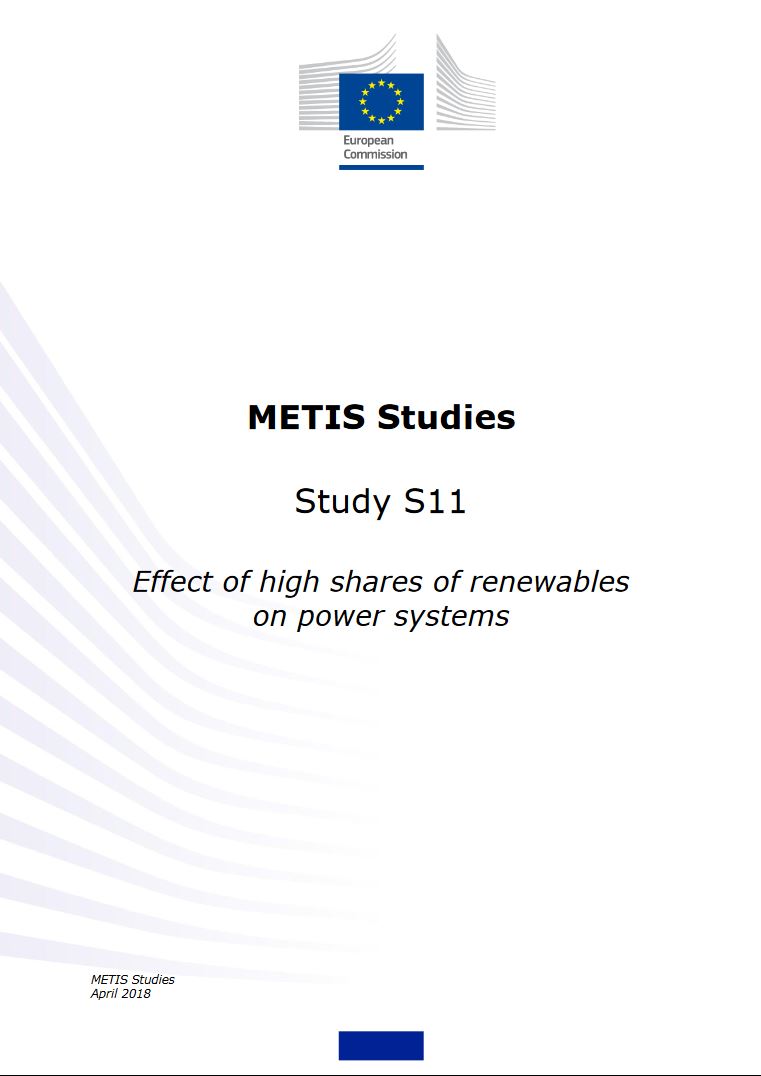
— Effect of high shares of renewables on power systems at the 2030 horizon
This study evaluates the impact of different levels of renewable electricity penetration on the EU power system at the 2030 horizon and assesses the associated impacts in terms of flexibility needs. The analysis is carried out with the power system module of the METIS model, in combination with an assessment of the residual load in selected EU countries. The study reveals that variable power generation from solar and wind drives price volatility at the wholesale market level. Rising RES generation can lead to production surpluses during a number of hours per year, but curtailment can be kept to relatively low levels thanks to the increased utilisation of interconnectors and storage capacities. The study quantifies flexibility needs at different time scales and identifies the main drivers. It is important to note that flexibility needs depend on national peculiarities and thus require tailor-made portfolios of flexibility solutions.
Client : European Commission
Date : April 2018
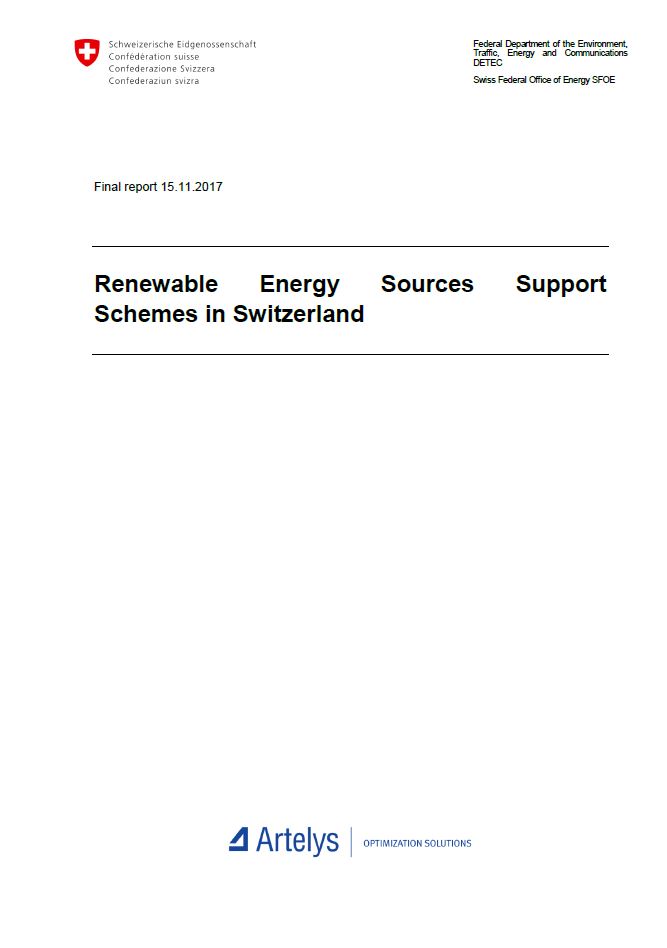
— Renewable Energy Sources Support Schemes in Switzerland
The Swiss Federal Office of Energy (SFOE) has commissioned this study to Artelys in order to compare the efficiency of support scheme designs to reach Switzerland RES deployment targets and mitigate the risk for investors. In order to quantify the revenues and risks of a RES producer, Artelys has simulated the dispatch of the European power system for two contrasted long-term scenarios over 50 climatic years with Artelys Crystal Super Grid. After having evaluated the level of profitability (or lack thereof) for each technology taking into account potential cannibalisation effects, we have compared the efficiency of various support schemes (feed-in tariff, feed-in premium, cap and floor premium, green certificate) and quantified their impacts on risks (from an investor point of view). The report shows that the main uncertainty on RES developers' revenues originates from the uncertain evolution of the European power sector rather than from the variability of climatic conditions. Finally, as Switzerland has only a very moderate impact on European power prices, the cannibalisation risks have been shown to be negligible at a national level.
Client : Swiss Federal Office of Energy (SFOE)
Date : March 2018
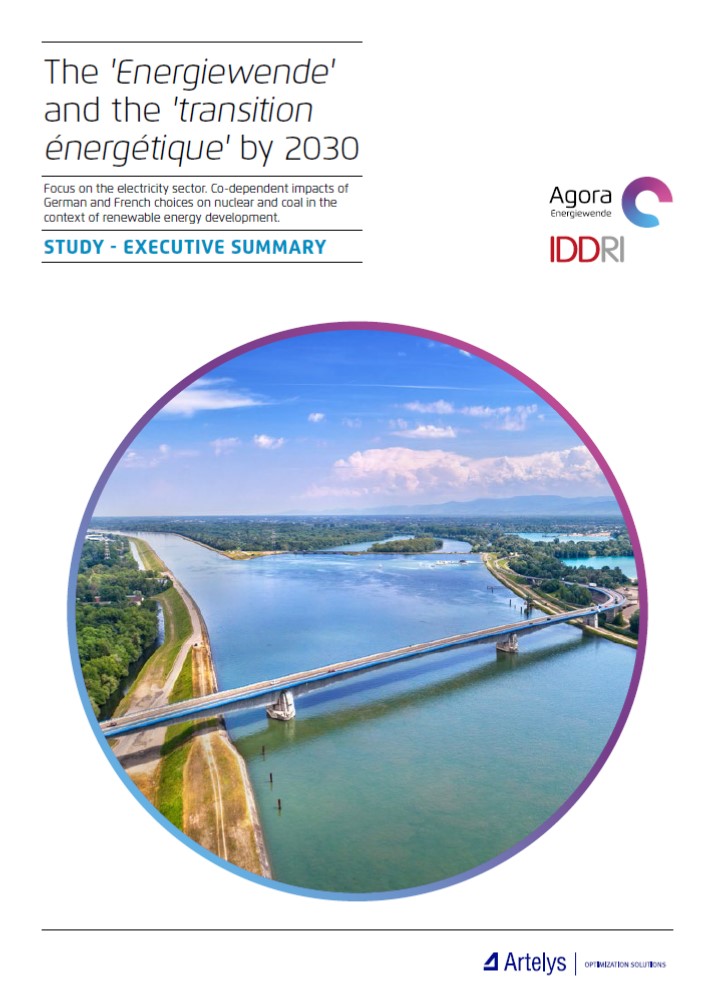
— The 'Energiewende' and the 'transition énergétique' by 2030
This study, carried out for Agora Energiewende and IDDRI, assesses the impacts of the evolution of the French nuclear and German coal power capacities in a context of development of renewable electricity generation technologies at the 2030 horizon. The electricity generation capacities under study are based on reference scenarios for France and Germany with variations on nuclear and coal as well as on the price of CO2. Artelys Crystal Super Grid allowed for a detailed analysis of the impacts on electricity market prices, producers’ revenues, and financial flows on both sides of the Rhine.
Results show that the financial viability of the investments required to prolong the nuclear reactors lifetime so as to maintain the total capacity above 50 GW is rather uncertain and will rely on France's capability to develop its interconnections as well as on the price of CO2. In Germany, the coal phase-out has to accelerate if Germany is to meet its climate goals. It could be compensated for by a revision of the renewable energy target to 60% of the electricity demand, allowing Germany to maintain an import/export balance close to equilibrium. Finally, this study illustrates the impact of national energy strategies beyond national borders and highlights the necessity to assess their compatibility as to establish the European Energy Union.
Clients : Agora Energiewende, IDDRI
Date : March 2018
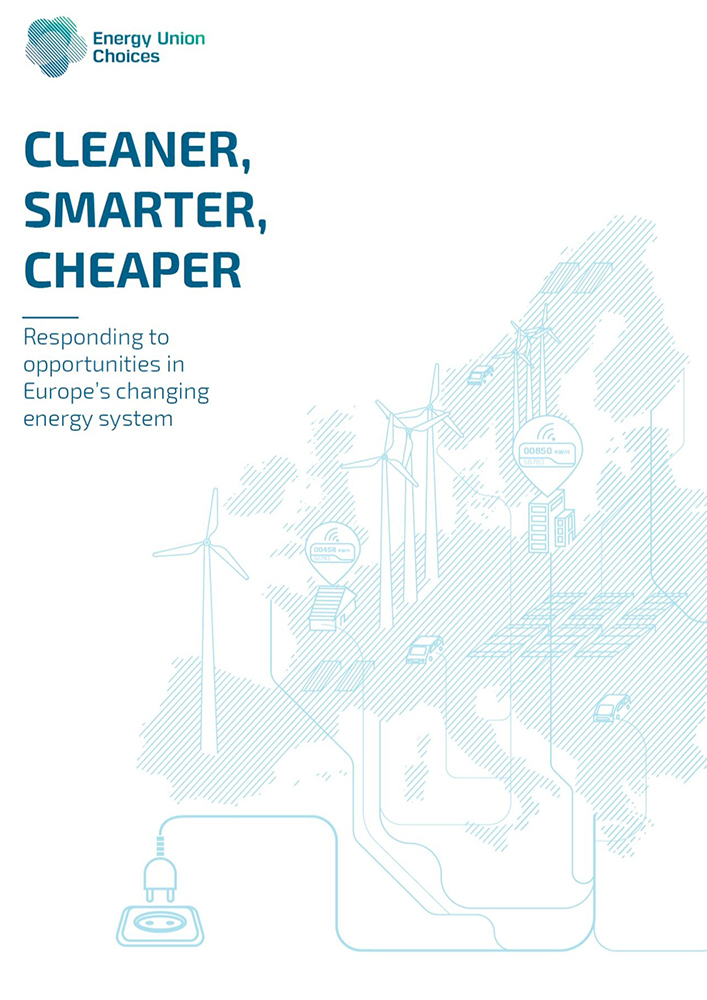
— Cleaner, Smarter, Cheaper
The report, commissioned by the European Climate Foundation, pursues two major objectives. It evaluates the maximum contribution of renewable energy sources to Europe’s 2030 power mix, taking into account the latest decline in renewable investment costs. Secondly, it determines the extent to which different policy levers may enhance renewables uptake in a cost-efficient manner. The capacity optimisation carried out with Artelys Crystal Super Grid reveals that a joint strategy of demand response and decommissioning of baseload capacities may trigger additional investments in renewables without increasing overall system costs. It’s in particular the automated demand control of new power consumers (such as electric vehicles or heat pumps) that allows for an efficient integration of solar PV power production and contributes to security of supply (by lowering peak demand and delivering system services).
Client : European Climate Foundation
Date : November 2017
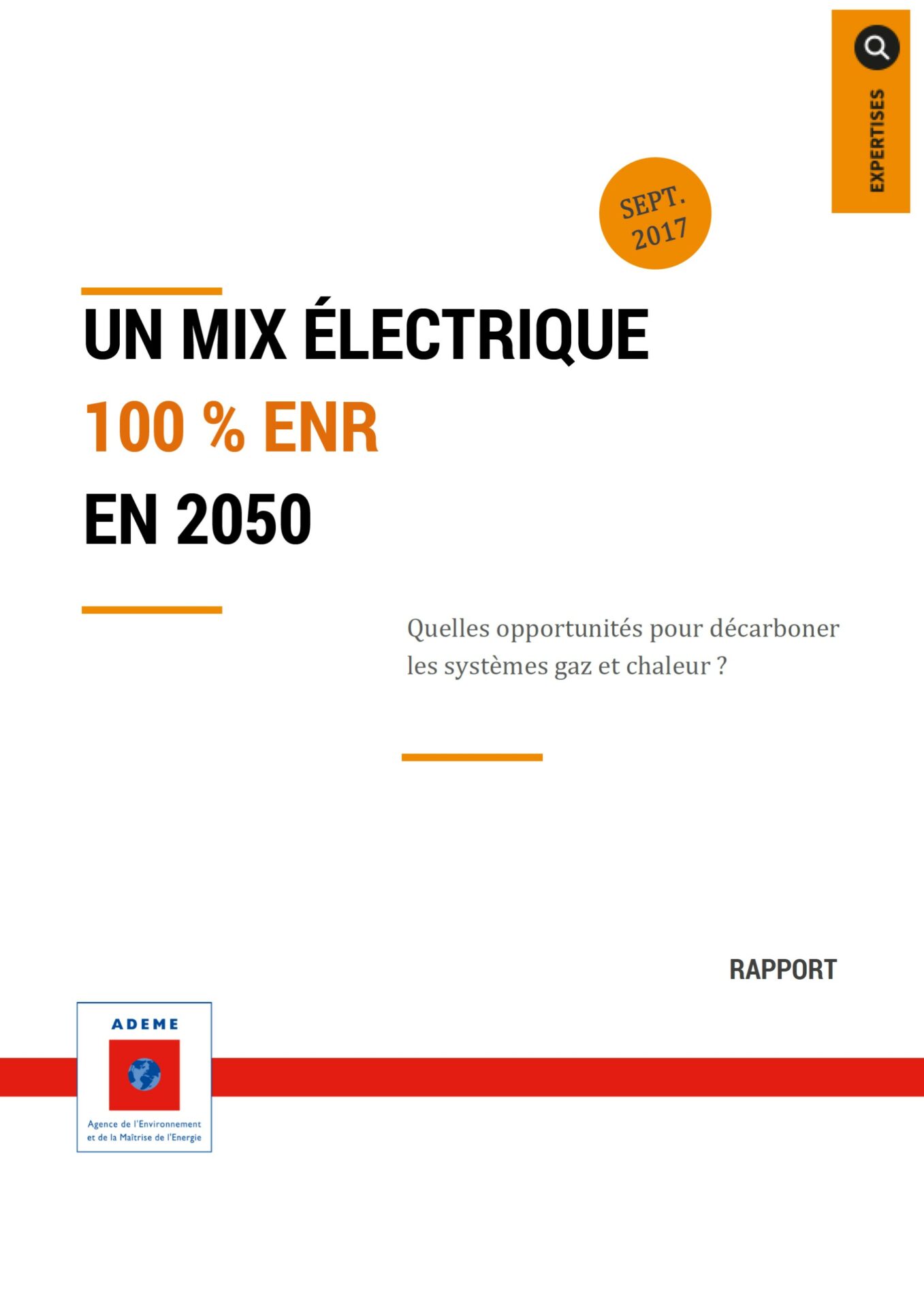
— A 100% renewable electricity mix: Assessing the economic viability of gas and heat system decarbonisation
The goal of this study is to assess how the gas and heat systems can be decarbonised in systems with high shares of renewable electricity generation.
The study relies on the optimisation of the electricity mix (generation, storage, network) and of its ability to produce and inject synthetic natural gas (via electrolysis and subsequent methanation) and heat (via heat pumps and electric heaters) in gas and district heating networks. The investments and their management to ensure the power demand-supply equilibrium is met at all times are jointly optimised with an hourly time resolution over the whole year, using a spatial resolution where France is split in 21 regions. The study relies on the Artelys Crytal Super Grid modelling platform, which has enabled us to represent the power system and its interaction with gas and heat vectors with an unprecedented level of detail thanks to its advanced features such as multi-energy modelling, investment planning, and ability to use high-performance computing infrastructure.
The study shows that at the 2050 horizon in the context of a fully decarbonised power sector, the decarbonisation of the gas and heat sectors mainly depends on the CO2 price. For CO2 prices above 100 €/tonne, heat and hydrogen production become economically viable, and for CO2 prices above 300 €/tonne the production of synthetic natural gas from renewable electricity to replace fossil gas is found to be profitable.
Client : ADEME
Date : September 2017
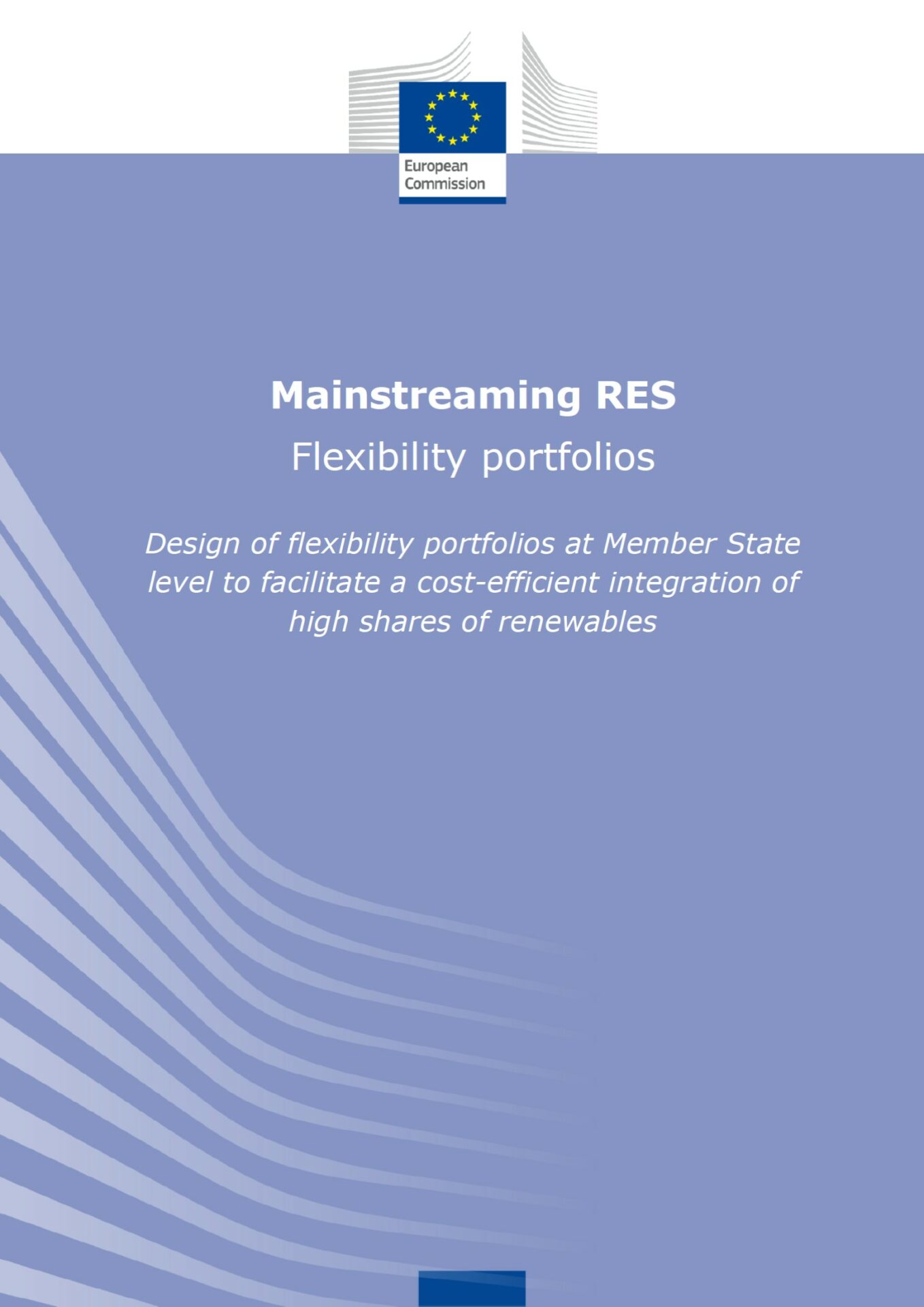
— Design of flexibility portfolios to facilitate the integration of renewables
The Mainstreaming RES study has been commissioned by the European Commission to assist Member States by providing them with a framework to evaluate their future flexibility needs, to identify the locally available flexibility solutions, and to compose a balanced portfolio of flexibility solutions that results in a cost-efficient integration of renewables. The report contains an application of the framework at the European level where we have optimised the capacities of the flexibility solutions for each Member State using the METIS and Artelys Crystal Super Grid models. In particular, the report highlights the role of technologies such as demand-response, storage and interconnectors in the provision of flexibility and shows that annual benefits of up to 2.8 B€ can be generated at the EU level by investing in a balanced portfolio of flexibility solutions instead of solely relying on thermal capacities.
Client : European Commission
Date : July 2017
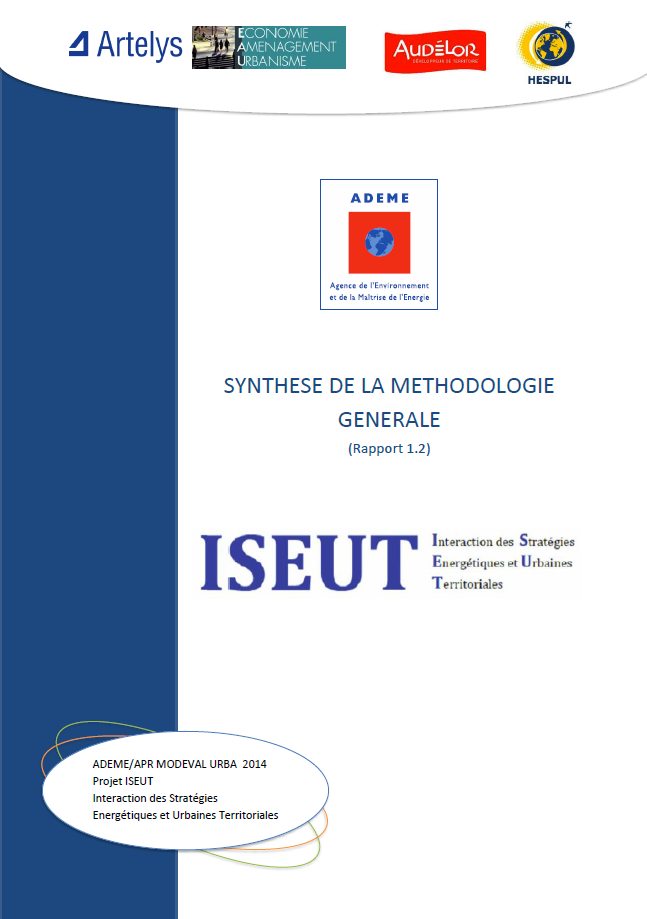
— Methodological guide for energy and urban development strategies joint design
The ISEUT project resulted in a methodological toolbox for the joint elaboration of urban development planning documents and of strategic energy plans (SEAP). The methodology, centered on the urbanistic notion of urban shape, falls in three steps. The first step consists in urban shape energy profiling, for which the accounting for block compacity has been experimented. During the second step, joint strategy is designed at building and block scale – via an energy efficiency action selection tool – as well as at the whole city scale – via a network opportunity evaluation tool. The final step is dedicated to monitoring and follow up based on a mixt approach between measurements and modeling. The methodology was experimented on the area of Lorient, Brittany, using the Artelys Crystal City software platform.
Client : ADEME – APR MODEVALURBA 2015-2017
Partners : Audélor, HESPUL, E.A.U
Date : February 2017
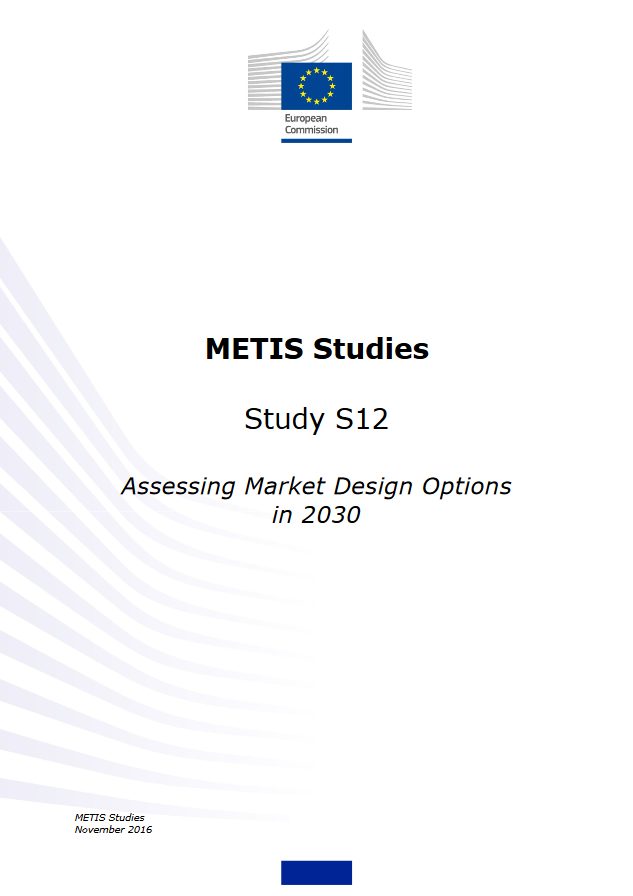
— Assessing Market Design Options in 2030
This study has been commissioned by the European Commission to support the impact assessment of the policy measures considered in the “EU Clean Energy for all Europeans” package. Artelys experts have used the market models of METIS to perform an analysis of measures such as the generalisation of the coupling of intraday markets, the regional dimensioning of balancing reserves, the removal of priority dispatch, etc. The explicit representation of the European short-term markets (day-ahead, intraday, balancing) has also allowed Artelys consultants to illustrate how market participants can refine their positions during the intraday timeframe for different market design options, and how the introduction of policy measures gradually increases the efficiencies of the short-term markets.
Client : European Commission
Date : November 2016
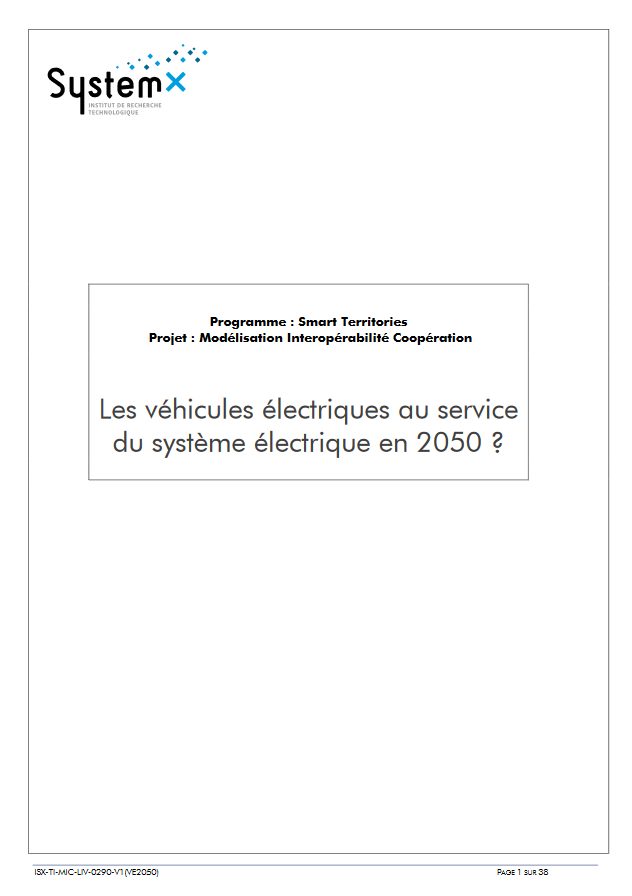
— Electric vehicles in the service of the power system by 2050?
The general aim of this study is to assess the benefits of using vehicle batteries as storage for the power system, especially in the context of a high share of RES. For this purpose, the advanced models and data from the ADEME study of a 100% RES power mix were used, and the assumptions associated with the transport sector were refined by Renault. The power generation and storage capacities in French regions and the power supply-demand balance were simultaneously optimized over one year at an hourly time step, taking into account demand-side management and storage dynamics, and in particular the one of electric vehicles. The goal of this approach was thus to assess the impacts and benefits of this service on a 100% RES power system in France.
Client : SystemX
Partner : Renault
Date : November 2016
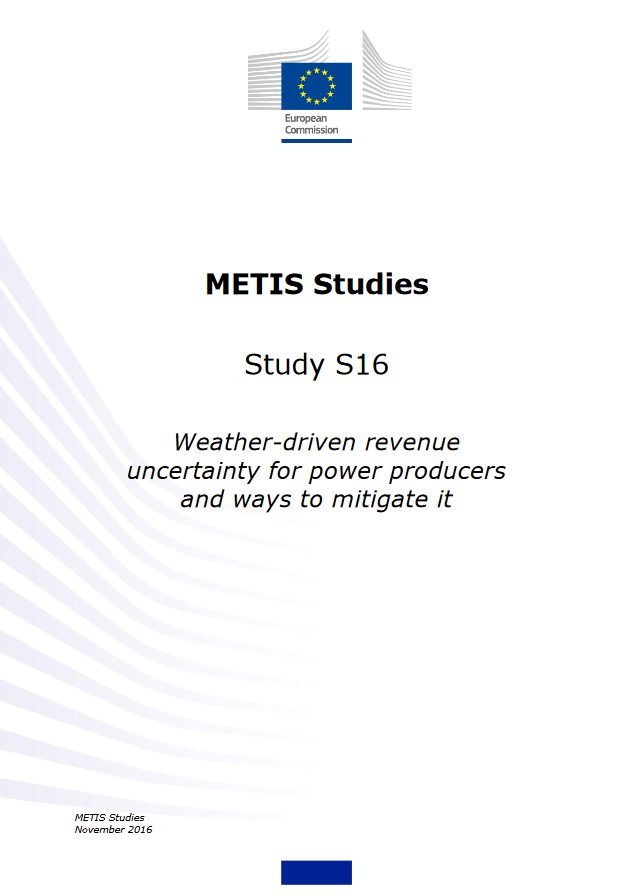
— Weather-driven revenue uncertainty for power producers and ways to mitigate it
This study provides an analysis of risks on revenues for peak flexibility assets and ways to mitigate them in a 2030-European scenario with a 27% share of renewable energy generation. Indeed, since variable renewable energy generation is driven by weather conditions, further flexibility is required to provide firm capacity during scarcity periods. Ensuring that flexibility assets can get sound revenues from the market is therefore key to guaranteeing an appropriate level of electricity supply. The study shows that peak flexibility assets experience high uncertainties on their annual revenues and that, whichever the risk mitigation mechanism chosen, cooperation is key to avoid massive overinvestments.
Client : European Commission
Date : November 2016
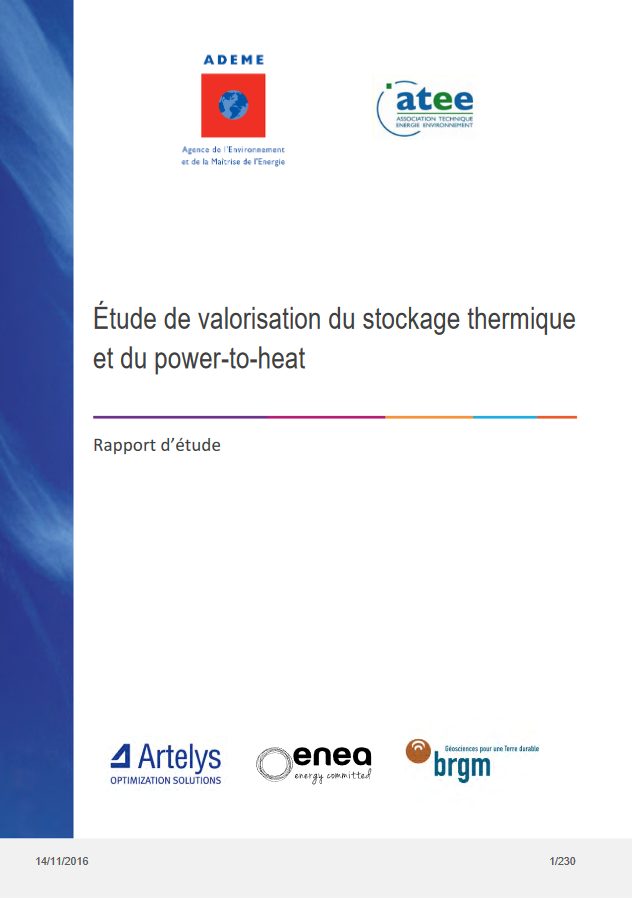
— Thermal storage and power-to-heat in the Energy Transition
The PEPS3 study, carried out in 2016 and commissioned by the ATEE, in collaboration with ADEME (French environment & energy management agency) and 10 industrial actors of the energy sector, aimed at evaluating the potential of heat storage and power-to-heat. The study, conducted by Artelys, Enea Consulting and the BRGM, deals with the most relevant case studies (storage and P2H in district heating, storage for fatal heat recovery, domestic hot water, storage for CHP, etc.), while taking into account storage and power-to-heat technologies most suited to each context. The interest of these technologies is evaluated in a global welfare analysis and then in a financial analysis taking into account the existing economic context (taxes, support mechanism) and the methods of valorisation adapted to each case study. The analysis is based on the latest technological innovations of the Artelys Crystal Super Grid software, in particular in terms of multi-energy mix optimization (heat, electricity).
Clients : Ademe, ATEE
Partners : ENEA Consulting, BRGM
Date : November 2016
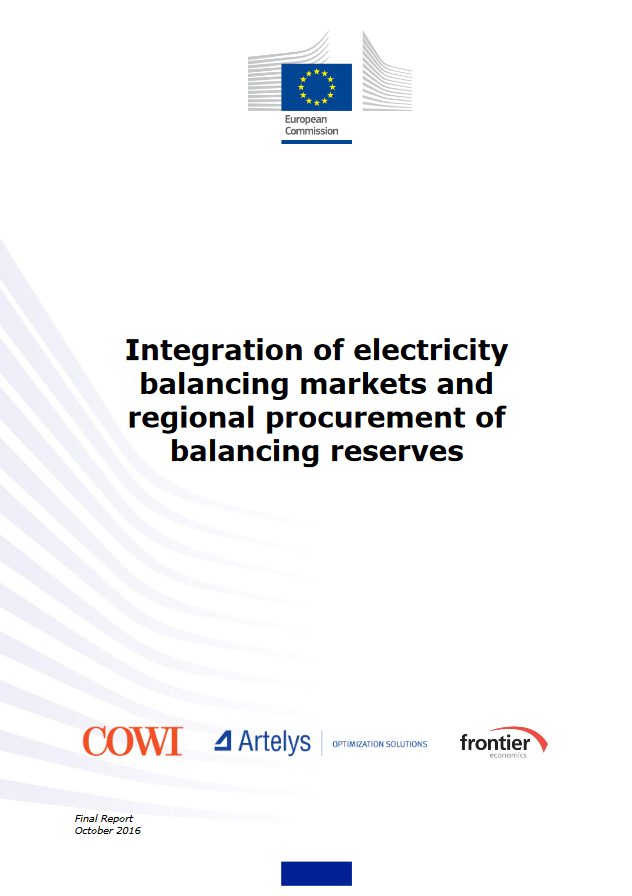
— Integration of electricity balancing markets and regional procurement of balancing reserves
This cost-benefit study has been commissioned by the European Commission to support their work on Guideline on Electricity Balancing (GLEB) and on the Market Design Initiative (MDI). The study examines several models of cross-zonal exchange of balancing energy (local provision of balancing energy, EU-wide imbalance netting, EU-level competition between Balancing Service Providers) and of balancing reserves dimensioning (national, regional and EU-wide). The first part of the study (GLEB) assesses the proportion of activations that can be avoided thanks to imbalance netting, if performed at an EU-level, subject to the availability of interconnection capacity, and how different models of balancing energy activation result in a more efficient use of the portfolio of reserves. The second part of the study (MDI) evaluates how regional or EU-wide collaboration can reduce the needs for reserves, and examines the trade-off between a local provision of reserves and the reservation of interconnection capacity, which is necessary to guarantee that TSOs can activate balancing resources abroad. Artelys is using the METIS software to assess the benefits of (i) sharing energy balancing reserves, (ii) dimensioning energy reserves at the regional level instead of the national level, and (iii) procuring balancing reserves at the regional level.
Client : European Commission
Partners : COWI, Frontier Economics
Date : October 2016
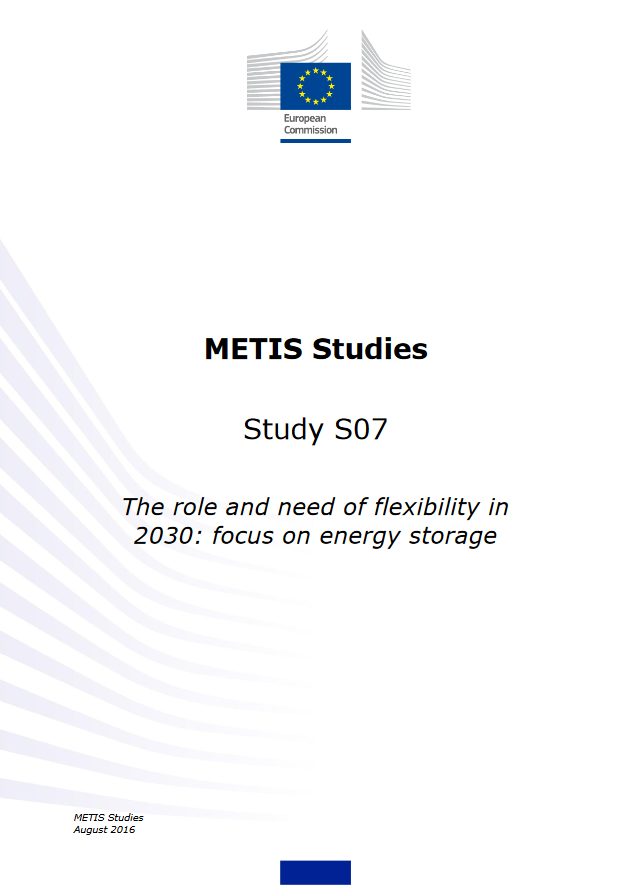
— The role and need of flexibility in 2030: focus on energy storage
This study aims to define the role - and quantify the need - of flexibility in the power system of 2030, characterized by a large share of wind and solar power. Indeed, the variable nature of renewable energy generation driven by weather conditions induces high fluctuation which have to be complemented by some flexibility mean so that the power supply-demand equilibrium can be reached at each time of the year. In this context, interconnectors, demand response, energy storage and flexible power plants can play an important role in increasing the system flexibility, therefore reducing generation costs. In this report, after a precise definition of the roles of flexibility, its value will be assessed in several countries, with the example of energy storage and flexible generation.
Client : European Commission
Date : August 2016
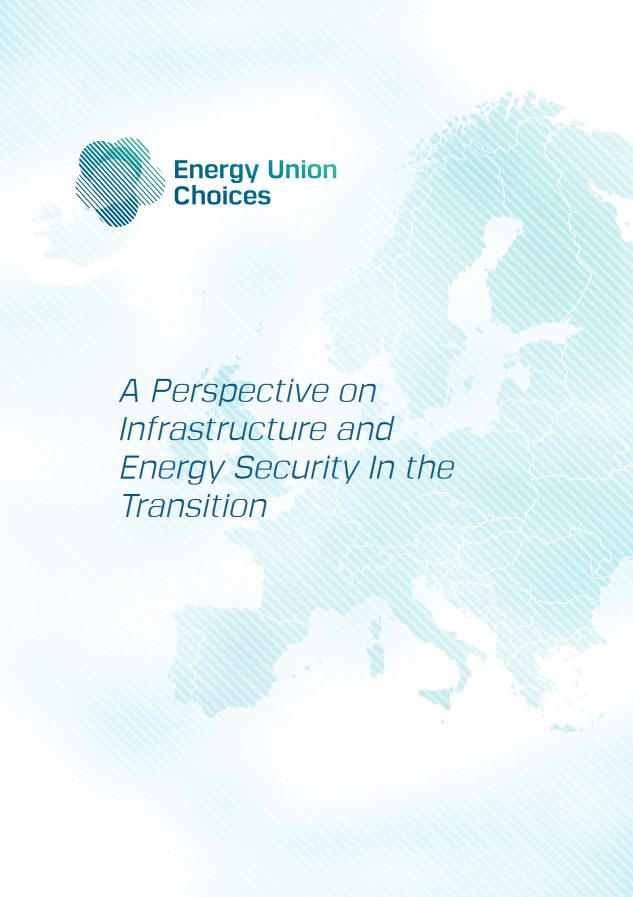
— A Perspective on Infrastructure and Energy Security In the Transition
Commissioned by the European Climate Foundation (ECF), this study looks at which gas infrastructure investments are lowest risk and regret to ensure resilience throughout the transition, and whether an integrated view on infrastructure (gas, power, buildings) help tackle security of supply challenges at a lower cost. For this purpose, Artelys has been chosen by the ECF to assess the impact of the development of interconnections, flexibility options, and synergies between the electricity, gas, and heat sectors on the electricity and gas security of supply. The models were implemented in Artelys Crystal Super Grid and a high performance computing infrastructure has been used to perform the analysis. The study shows that the coordinated management of power and gas systems and the anticipation of energy efficiency developments to come reduce greatly the investment needs in gas infrastructure to ensure security of supply.
Client : European Climate Foundation
Partners : CLIMACT, Element Energy
Date : July 2016

— Assessing TYNDP 2014 PCI list in power
The present study assesses the impact of a list of interconnectors (from the ENTSO-E's TYNDP 2014 project list). For this purpose, several criteria – the same as the one used by ENTSO-E to perform cost benefit analysis of PCI projects - related to economic, environmental and security of supply topics -have been measured. The benefits brought by the PCIs are assessed by comparing the annual power optimal dispatch at hourly time step (on ten years of weather scenarios), with the current power transmission network on the one hand, and after adding the considered PCI on the other hand. The analysis has been performed on two 2030 contexts, with different RES shares, based on two ENTSO-E visions in terms of demand and power generation capacities.
Client : European Commission
Date : May 2016

— Impact of PCIs on gas security of supply in Europe
The objective of this study is to assess the impact of Projects of Common Interest on gas security of supply in 2030 in Europe. An incremental approach is used to generate models and run simulations on the European gas system with different gas infrastructure assumptions in scenarios based on ENTSOG TYNDP 2015 Grey scenario. The impact of projects on gas security of supply is assessed by analyzing their influence on two indicators: disrupted demand, which measures loss of load in standard and cold temperature cases, and supply source dependence, which measures the share of demand that cannot be served when a specific source of supply is unavailable, for instance Russian imports.
Client : European Commission
Date : April 2016

— Generation and System Adequacy Analysis
The primary goal that is sought when designing a power system is to ensure it is able to meet the demand in all but very exceptional situations. The growing share of variable power generation requires new techniques to assess system adequacy, and also questions the geographical scale that should be considered when making this assessment. This study analyses the new numerical techniques that have been developed, in particular by TSOs, to precisely simulate the operations of the power system for a number of weather scenarios. This report also exhibits the benefits of a regional or European system adequacy assessment approach, which would result, in comparison with a national one, in a lower level of investment required to meet security of supply criteria.
Client : European Commission
Date : January 2016
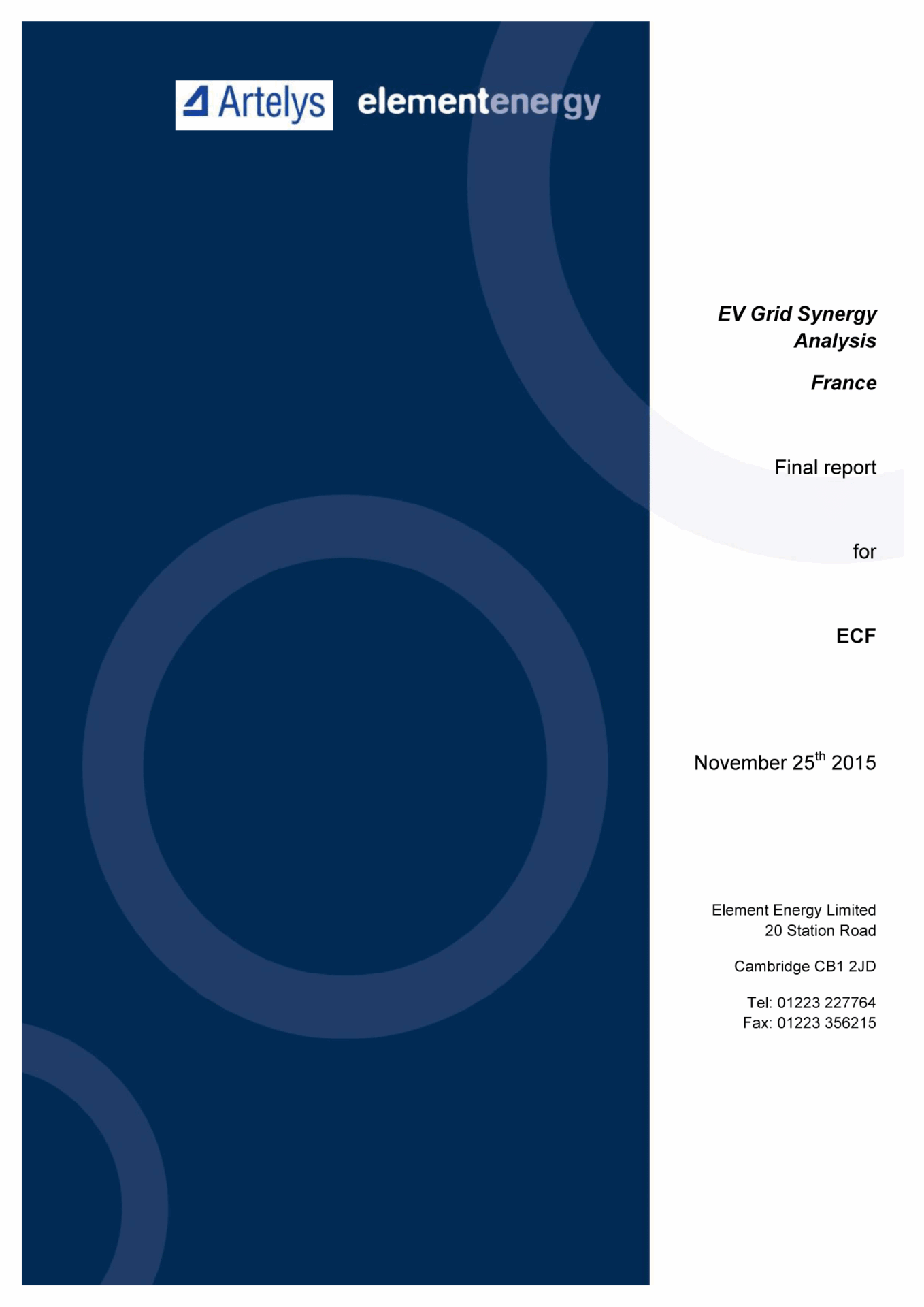
— Electric Vehicles Grid Synergy Analysis
The European Climate Foundation commissioned Element Energy and Artelys to carry out this study, to better understand the maximum deployment of EVs in France that is possible without creating additional generation capacity requirements, to quantify the overall value of synergies between EVs and the electricity system and better understand the potential impact on distribution networks. The analysis carried out for this study was developed through a combination of literature review, techno-economic modelling of ancillary services provision and impacts on the distribution network, and electricity generation optimisation. The analysis is based on the EV deployment scenarios of the ECF TESCH scenario and uses the RTE Nouveau mix scenario to assess the impact of EV deployment on the generation system.
Client : European Climate Foundation
Date : November 2015
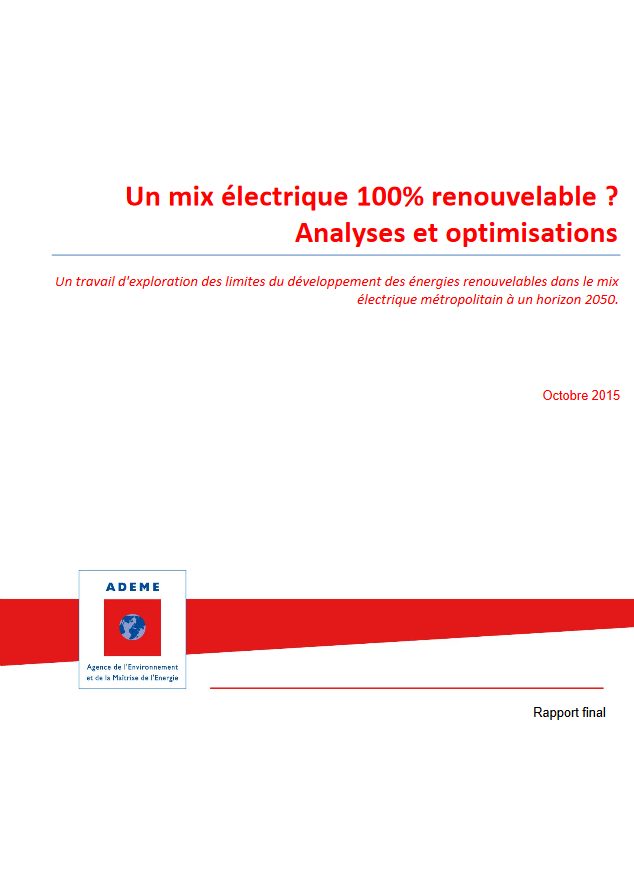
— A 100% renewable electricity mix? Analyses and optimisations
Artelys has computed the optimal energy mix (electricity generation, transport, storage, demand response, power to gas and power to heat…) of France by 2050, for different objectives on the share of renewable energy (40%, 80%, 95% and 100%), and using technology price scenarios. This study implies modelling more than 20 interconnected electricity zones in France plus an aggregated model of the rest of Europe. The optimized management of power plants, storage and demand response is simulated on an hourly basis. RES time series include geographical correlations with temperature which in turn affects energy demand. The cost-benefit study addresses all sorts of emerging technologies (marine energy, emerging storage technologies, demand response, new generation of wind energy with higher load rate, concentrating solar power plant …).
Client : Ademe
Partners : ARMINES-PERSEE, ENERGIES DEMAIN
Date : October 2015
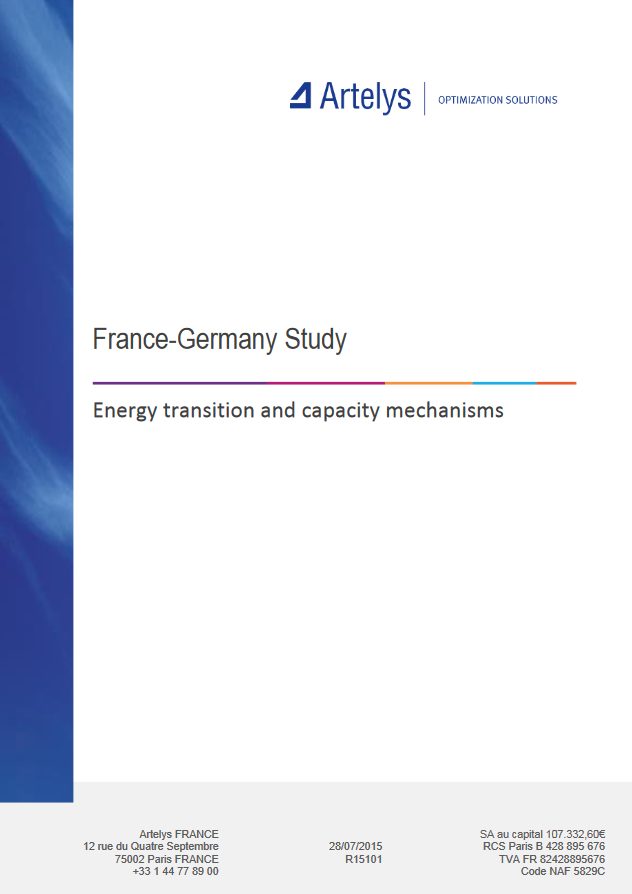
— France-Germany Study - Energy transition and capacity mechanisms
Commissioned by UFE and BDEW, two French and German power sector associations, this study aims at evaluating the influence of the introduction of a capacity remuneration mechanism on the security of supply in France and Germany. The study focuses on the impact of climatic conditions on producers' revenues and assesses the resulting risks for investors. The impact of risk on the structure of the energy mix was also analyzed through this study. The analysis, carried out by Artelys, is based on a model of the Franco-German electricity system to generate market prices under different market conditions (presence or absence of capacity markets in France and/or Germany, presence or absence of a price-cap in the ""energy-only"" market) for different weather scenarios. This modelling allows to take into account the feedback of the producers’ revenues on the level of investment. The benefits of a coordinated (Franco-German) approach to security of supply have also been identified and quantified.
Clients : UFE, BDEW
Date : September 2015
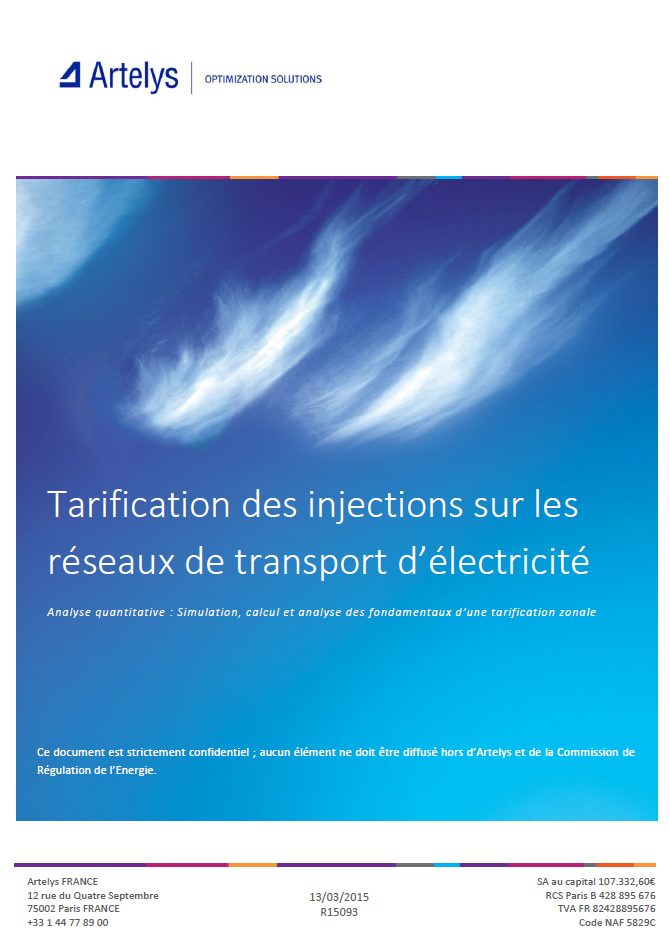
— Analysis of transmission costs disparities in the French electricity network
The French regulator of electricity (Commission de Régulation de l'Energie, CRE) wished to investigate the interest and feasibility of introducing local injection tariffs for electricity. Artelys performed computations based on historical consumptions and productions on 21 regions of France and on an optimal power flow model, and assessed the disparities of regional injection costs (in €/MWh) on an adapted transportation network. This analysis demonstrated the existence of non-negligible electricity transportation cost disparities between regions directly due to demand and generation location. A sensitivity analysis on additional generated scenarios (based on statistical methods and generation optimization) confirmed stability of computed costs disparities on several different climatic years.
Client : CRE
Date : March 2015
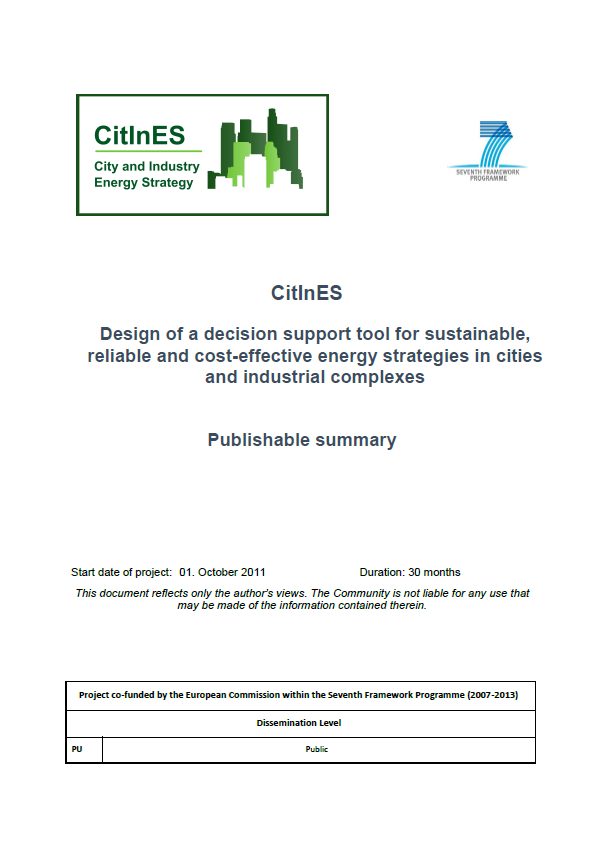
— Design of a decision support tool for sustainable, reliable and cost-effective energy strategies in cities and industrial complexes
The overall objective of CitInES was to design and demonstrate a multi-scale multi-energy decision-support tool to optimize the energy efficiency of cities or large industrial complexes by enabling them to define sustainable, reliable and cost-effective long-term energy strategies. Demonstrations have taken place in two cities in Italy, Cesena and Bologna, and in one oil refinery in Turkey, Tupras. Innovative energy system modelling and optimization algorithms have been designed to allow end-users to optimize their energy strategy through detailed simulations of local energy production, storage, transport, distribution and consumption, including demand side management and coordination functionalities enabled by smart grid technologies. All energy vectors (electricity, gas, heat...), end-uses (heating, air conditioning, lighting, transportation, ...) and sectors (residential, industrial, tertiary, urban infrastructure) are considered to draw a holistic map of the urban and industrial energy systems.
Client : Commission européenne - FP7 2011-2014
Partners : Municipality of Cesena, Municipality of Bologna, Tupras, Ervet, Schneider, Inesc Porto, Austrian Institute of Technology, Armines, INRIA
Date : June 2014
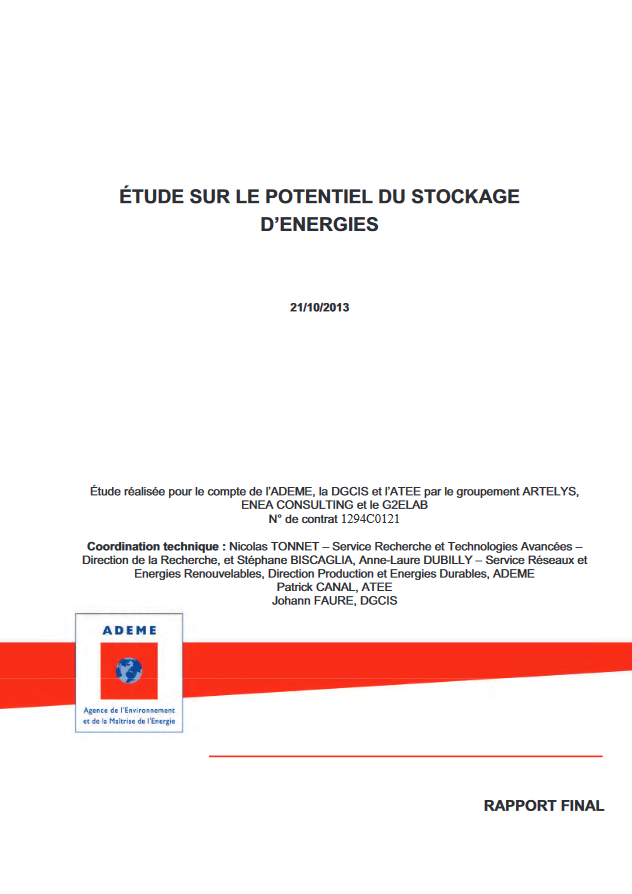
— Role and Potential of Energy Storage in France in 2030
Funded by the French industry ministry, ADEME (French environment & energy management agency) and ATEE, the PEPS study aims at comparing, in a detailed and transparent way, the costs, benefits, and opportunities related to energy storage technologies for France. For this purpose, different energy contexts have been studied (national level, rural zones with network constraints, islands, thermal storage with district heating or CHP, etc.). In each of these contexts, Artelys’ contribution consisted in using Artelys Crystal Super Grid to model the supply-demand equilibrium on an hourly basis on a whole year to assess the value of services provided by the different storage technologies (arbitrage, capacity, ancillary services, etc.) depending on their technical characteristics (efficiency, storage duration, capacity to provide ancillary services, etc.). Storage solutions were also compared to other flexibility solutions (demand side management, flexible generation, network reinforcement, etc.). Strategic recommendations for the development of technologies have been formulated. The results were presented to the French Ministry of Industry.
Clients : Ademe, ATEE, DGCIS
Partners : ENEA Consulting, G2ELab
Date : October 2013
subscribe to our newsletters
© ARTELYS • All rights reserved • Legal mentions